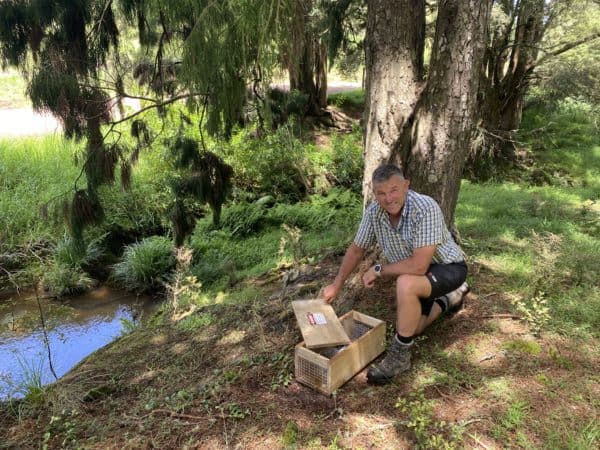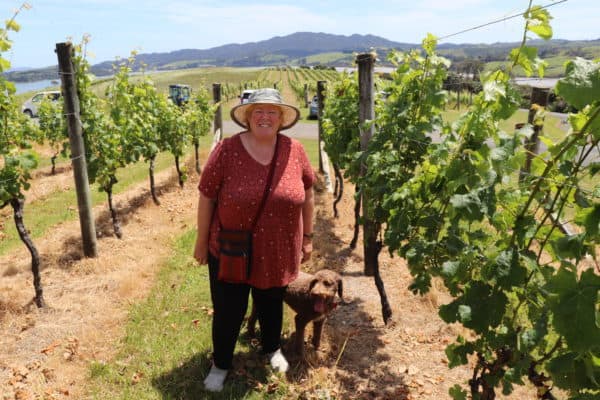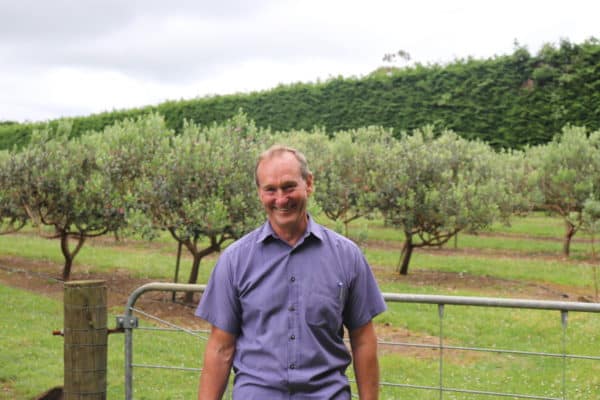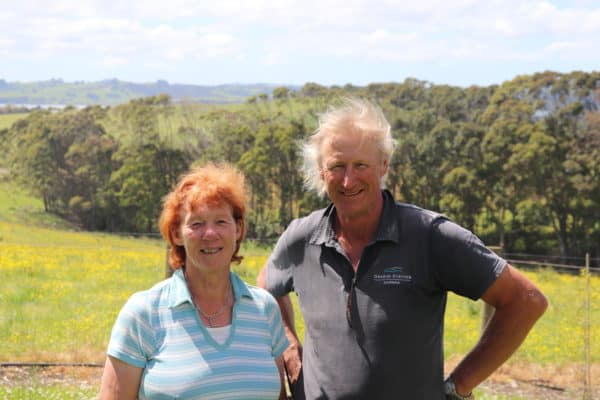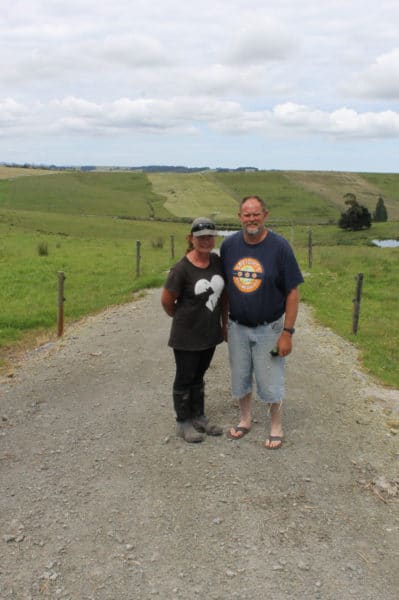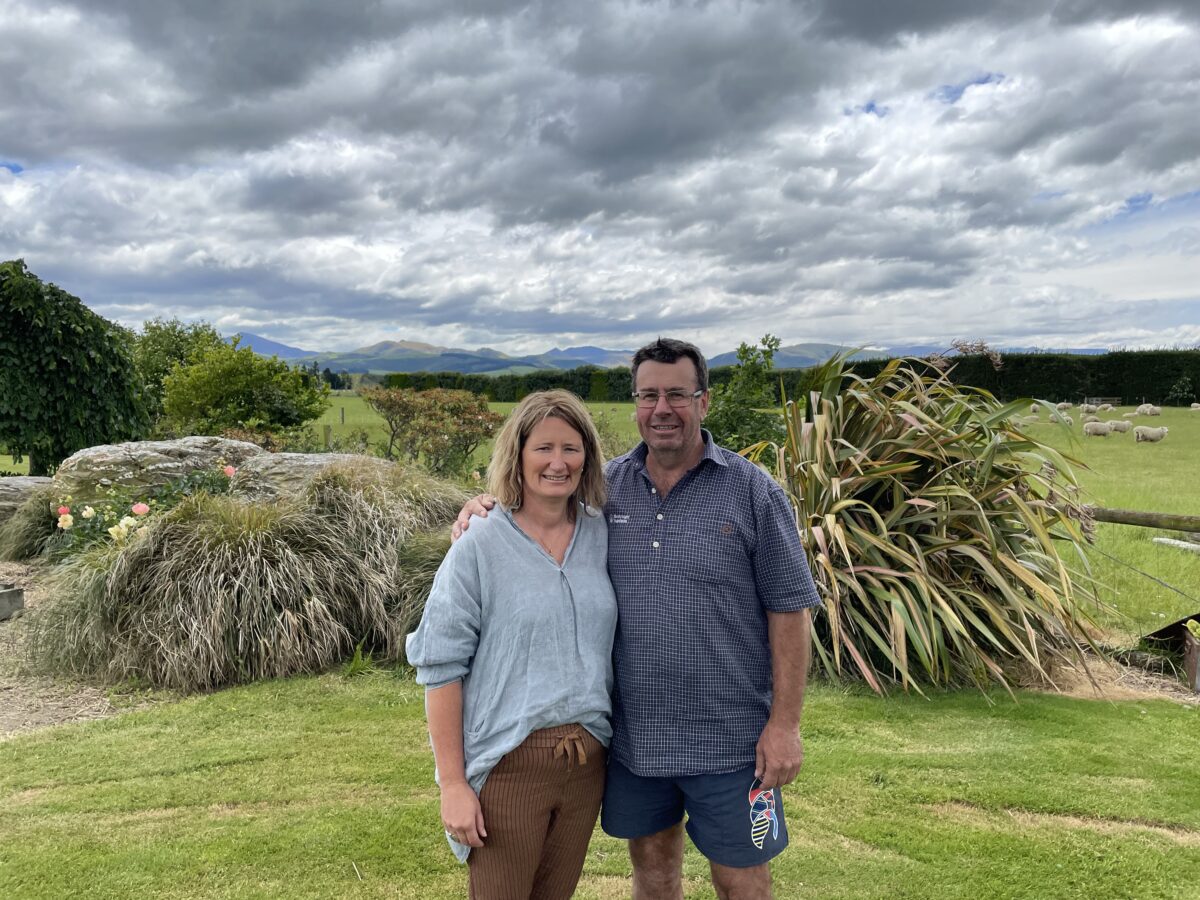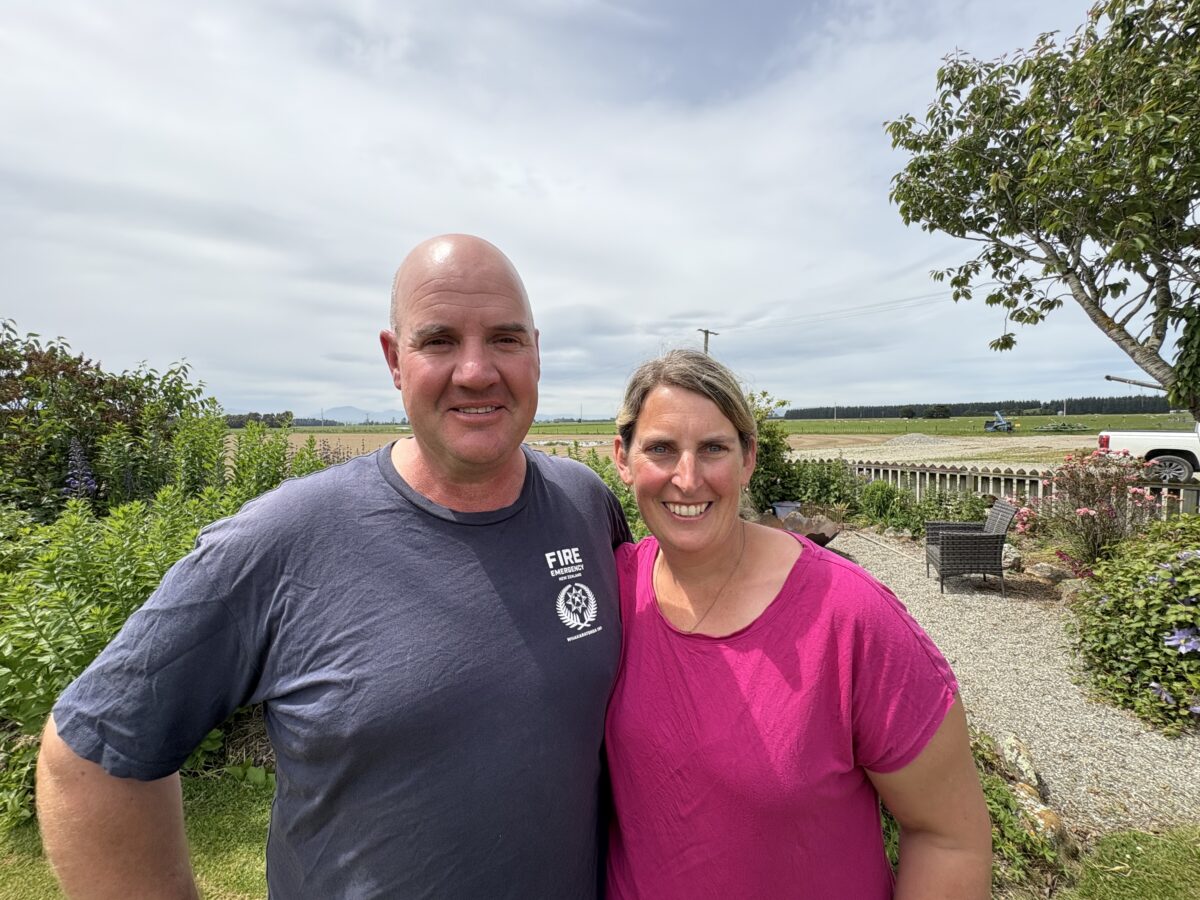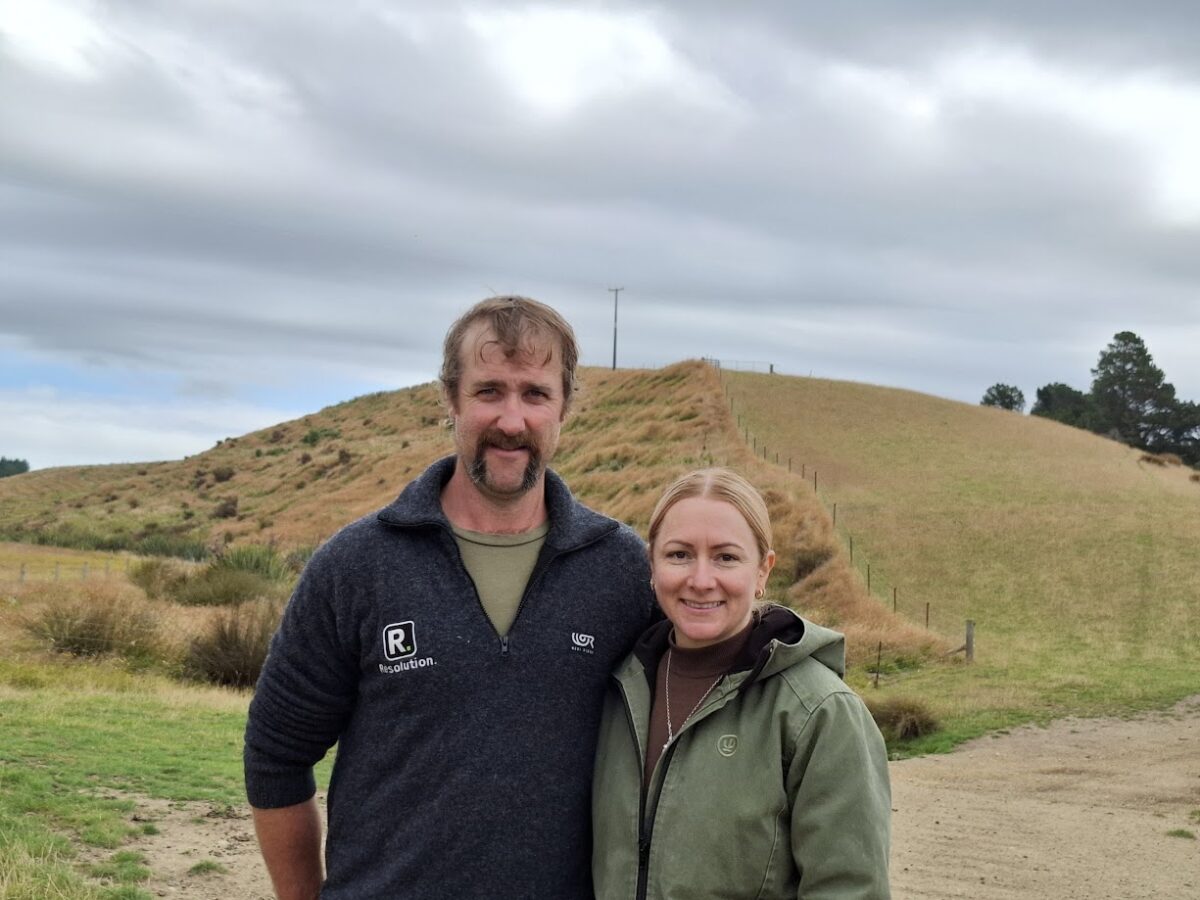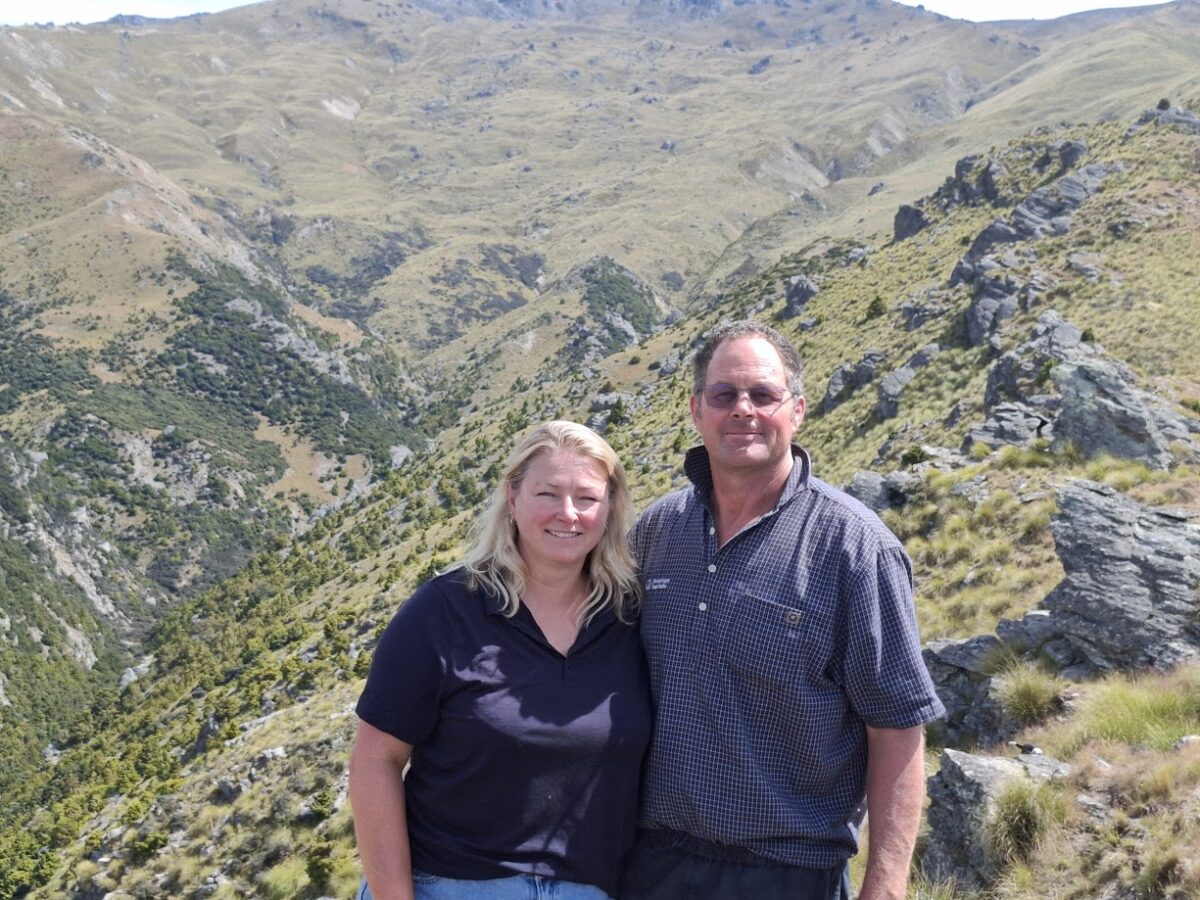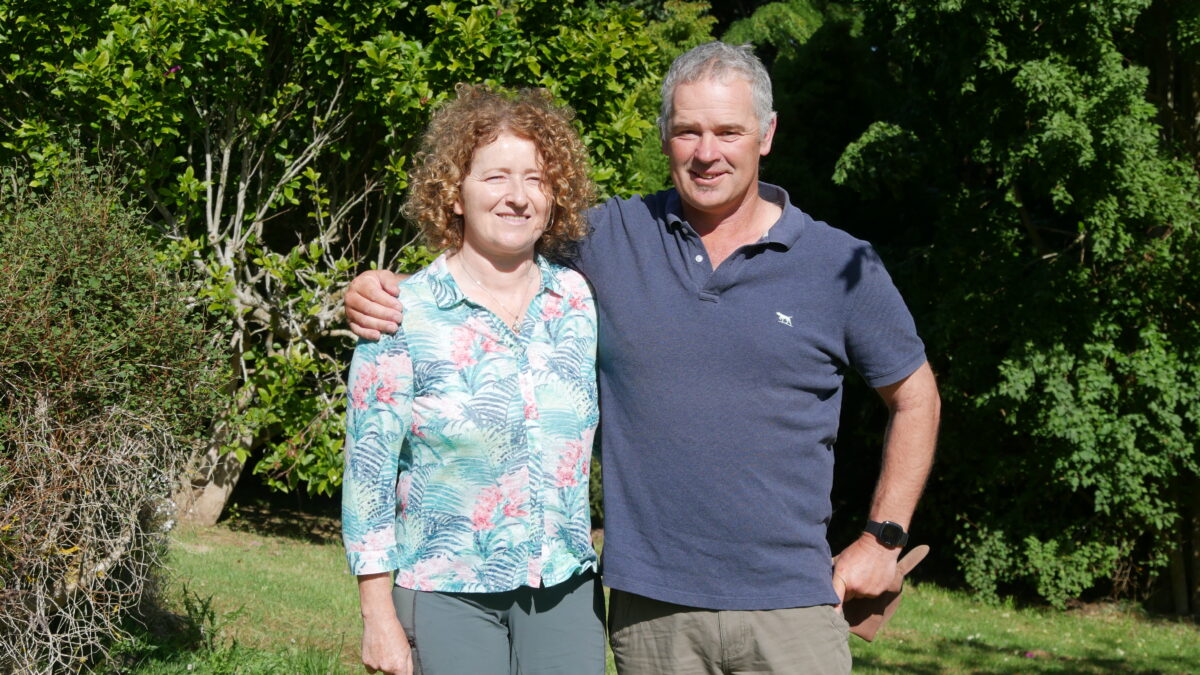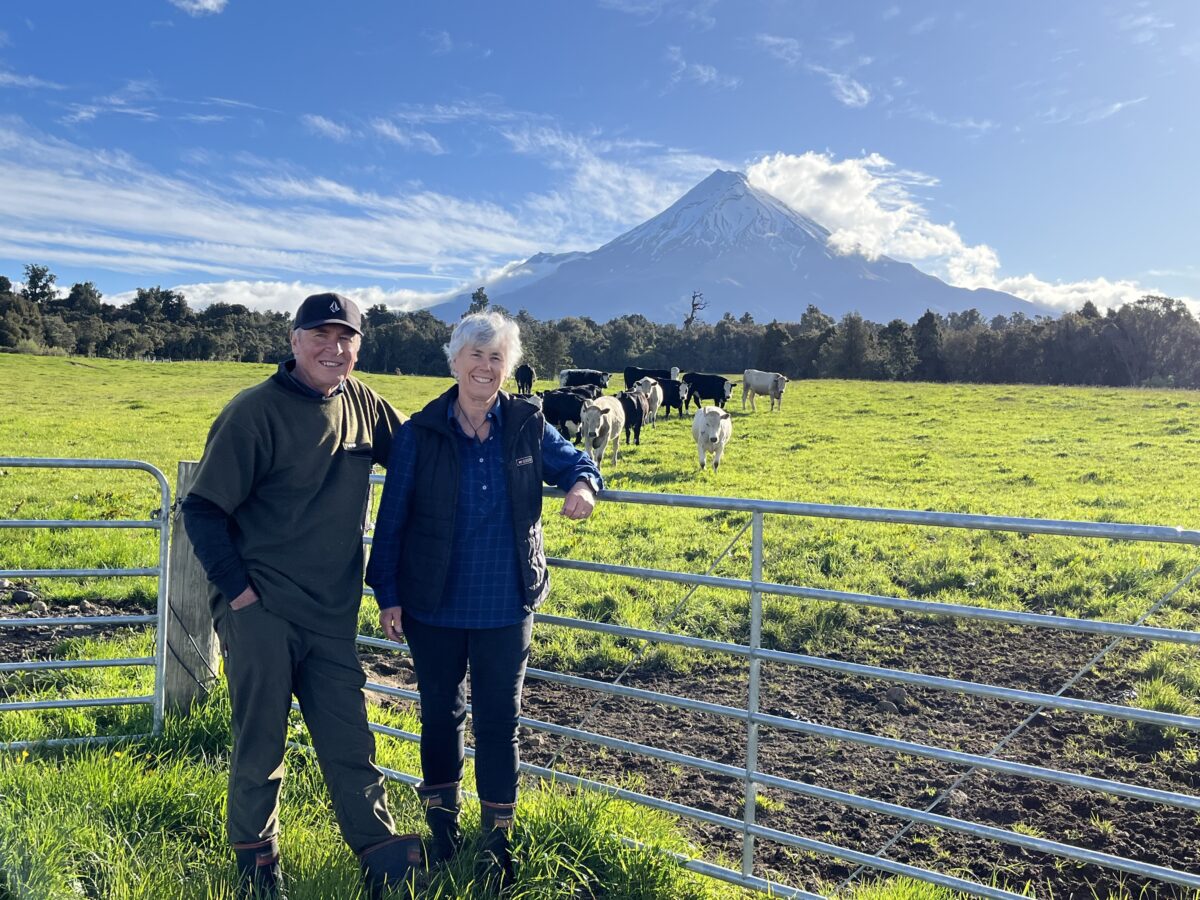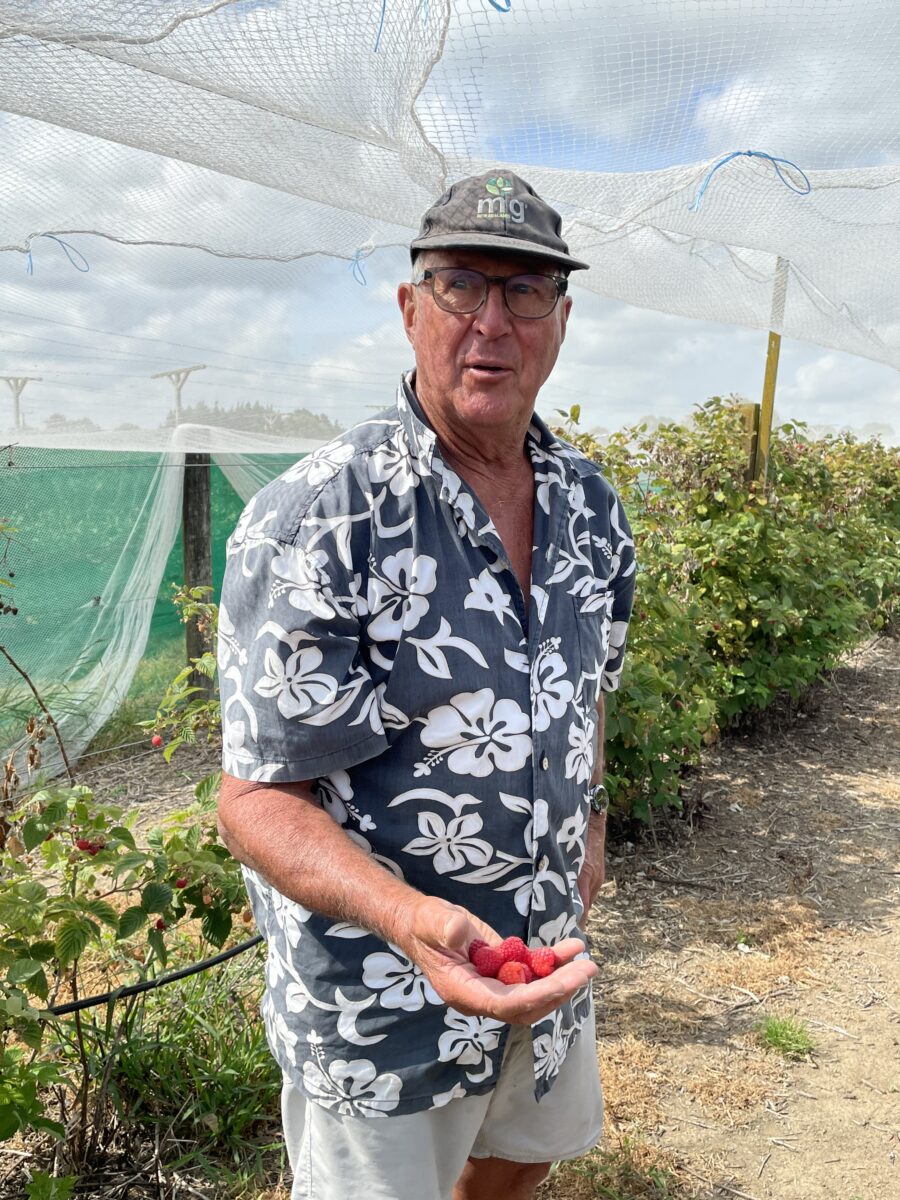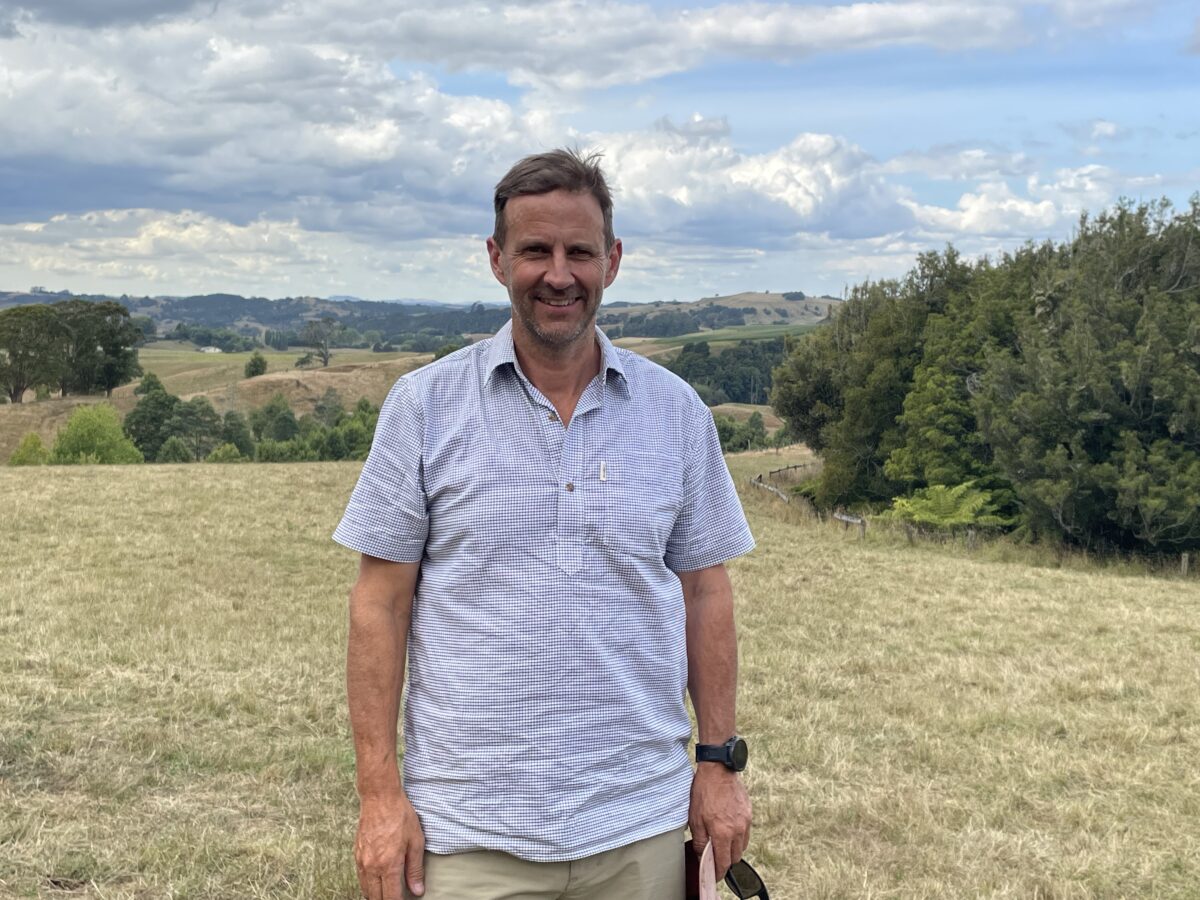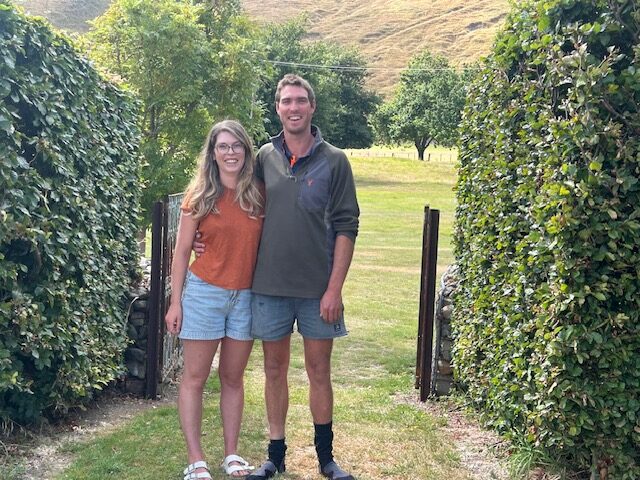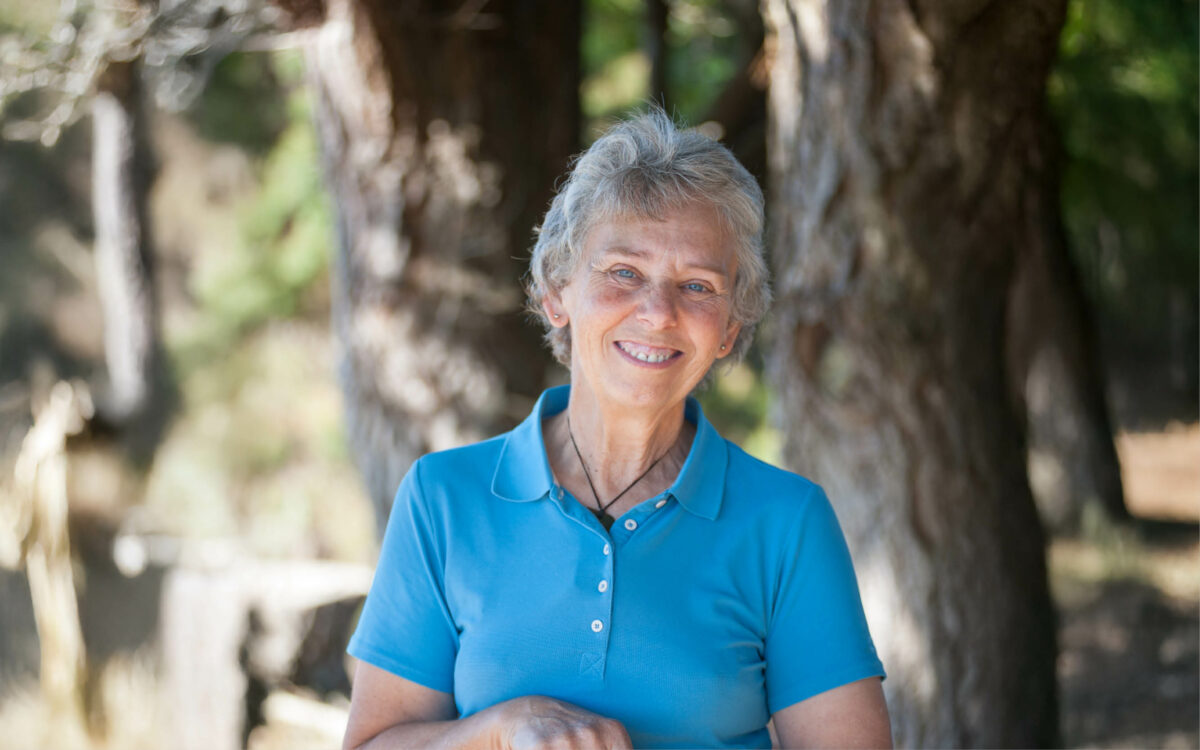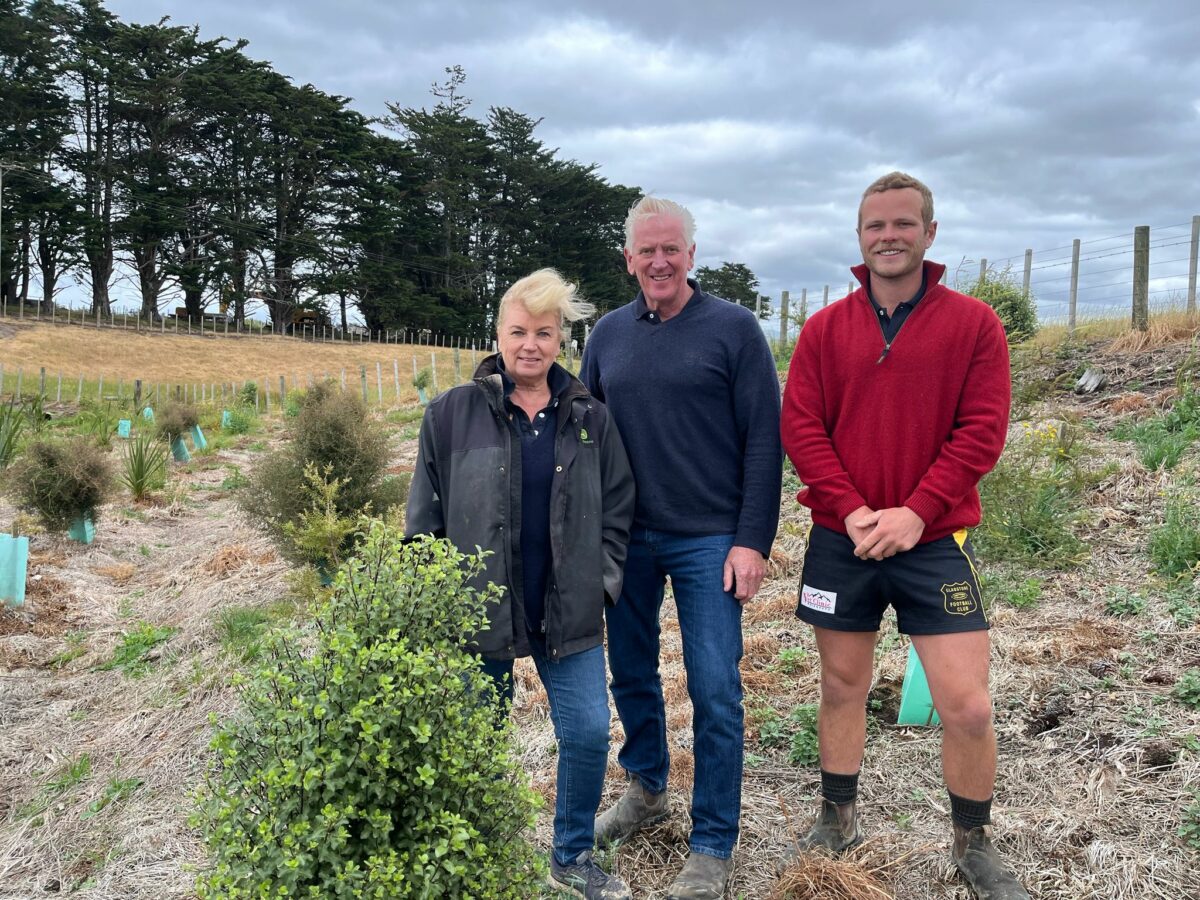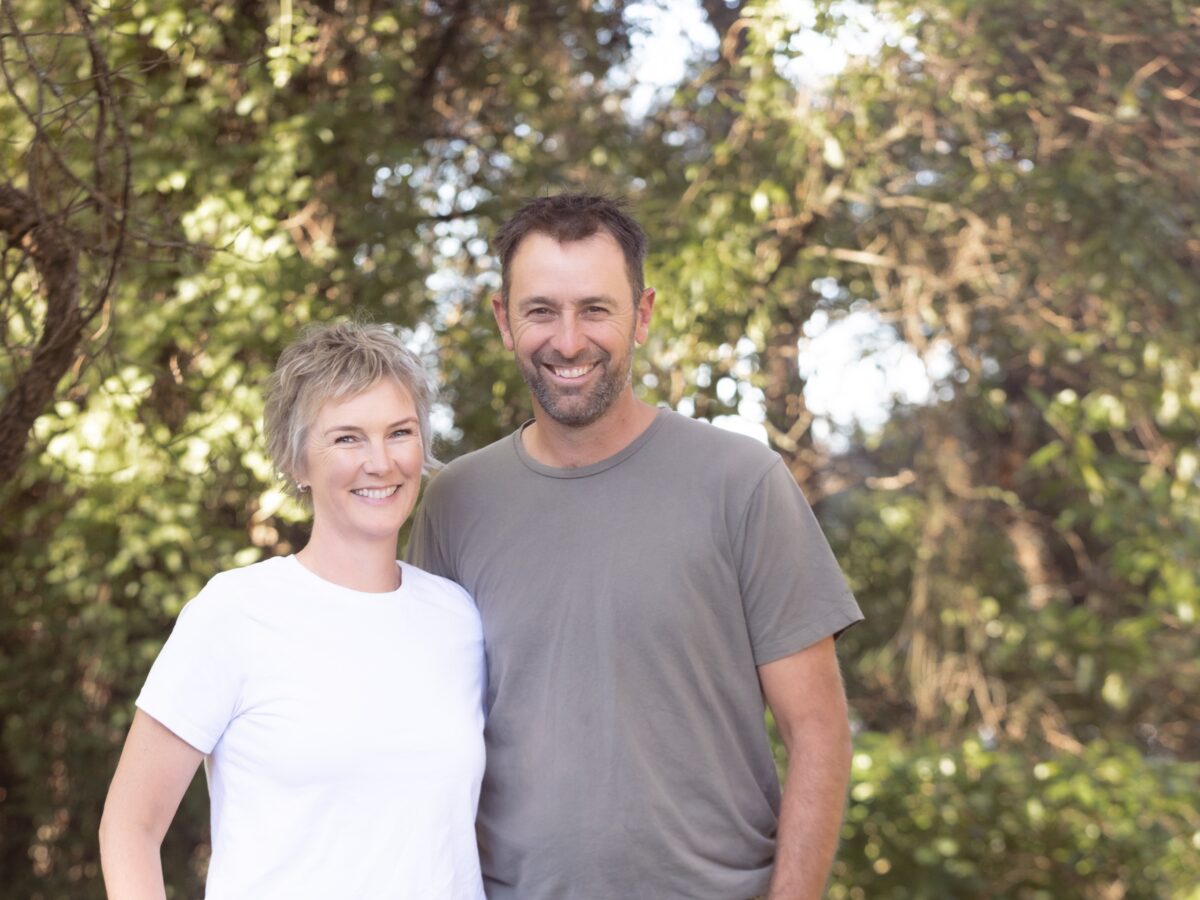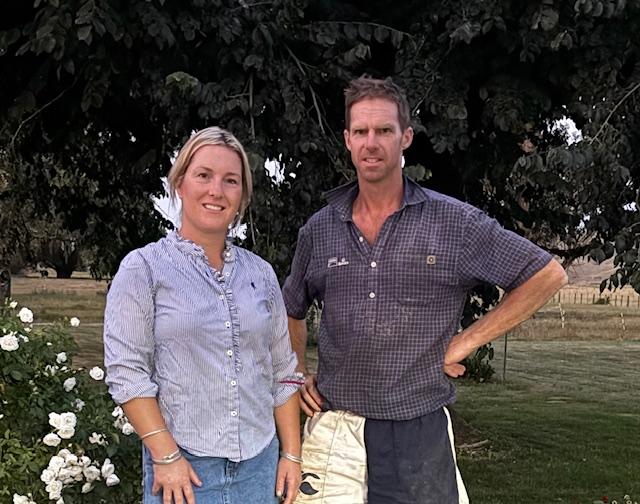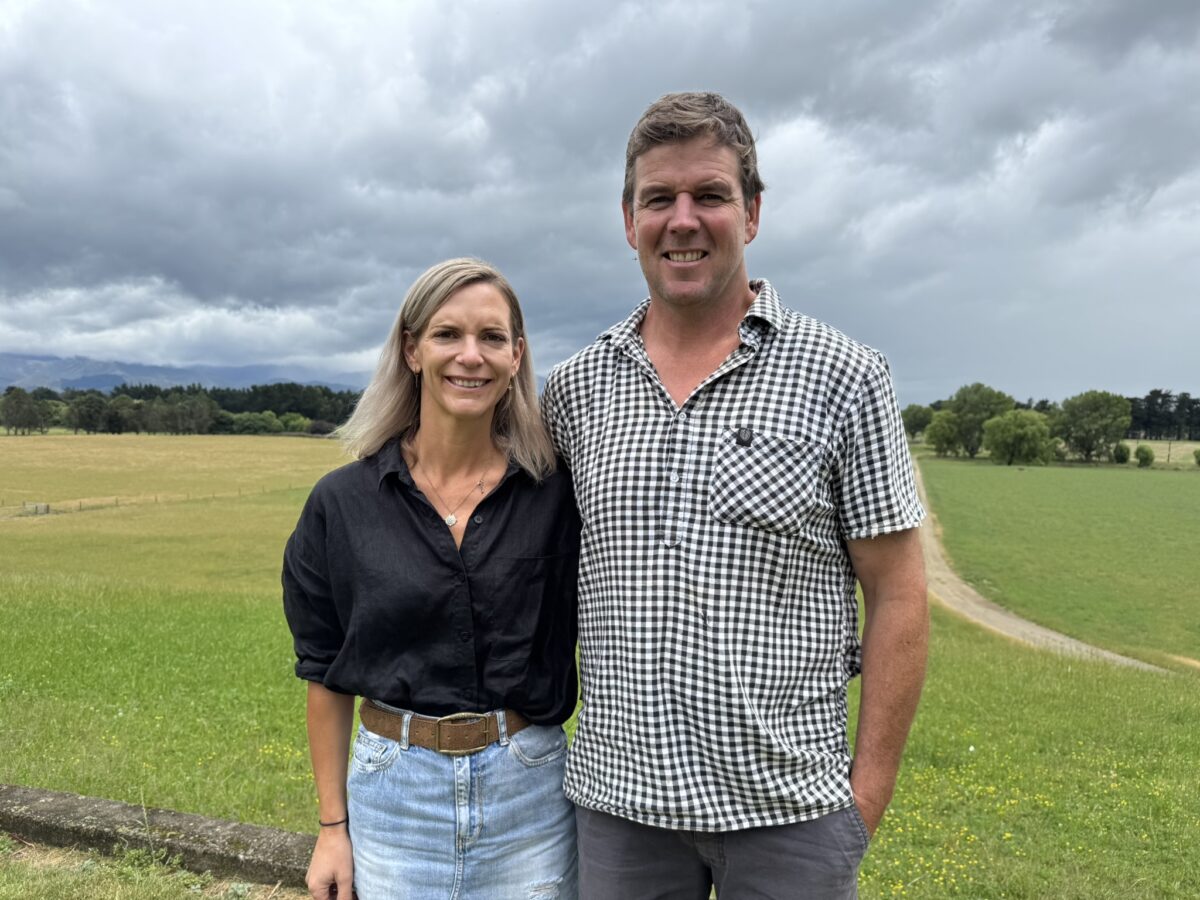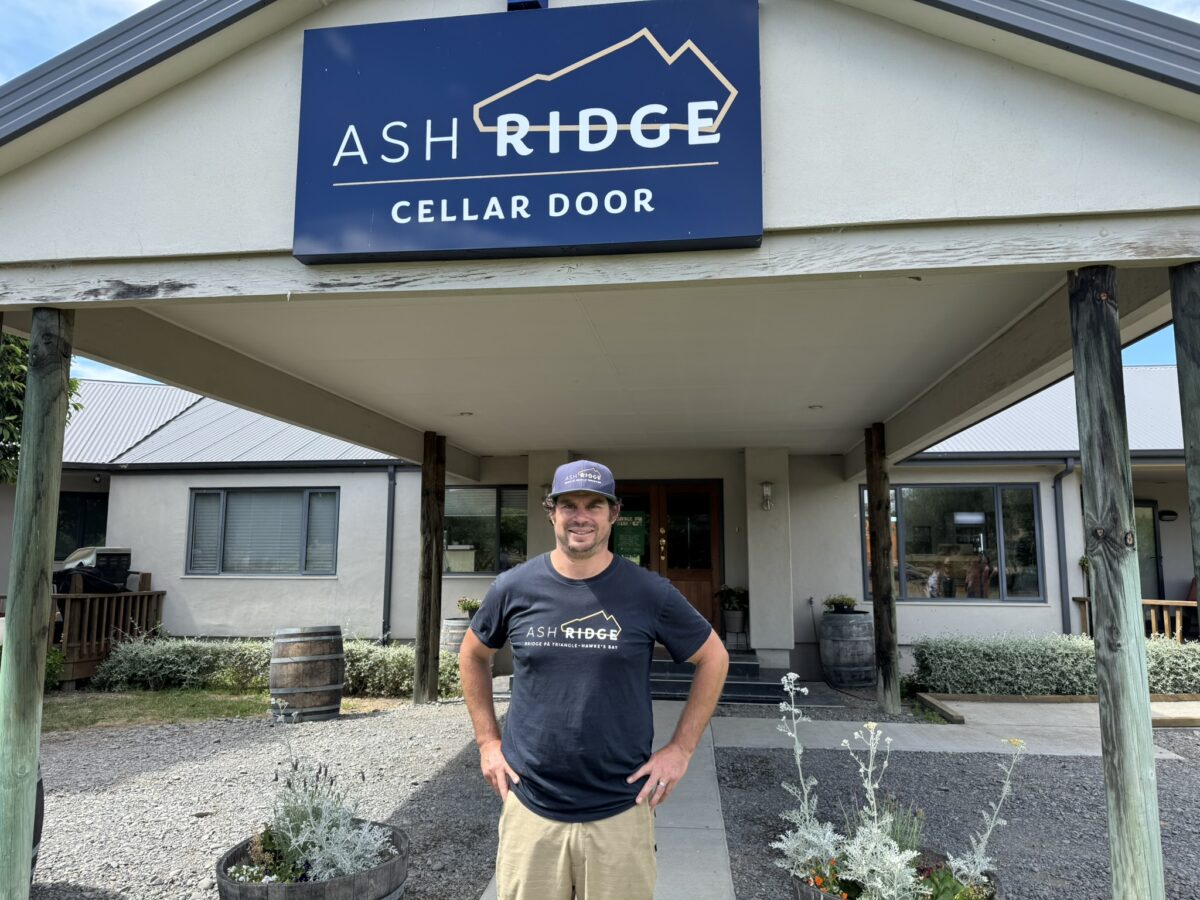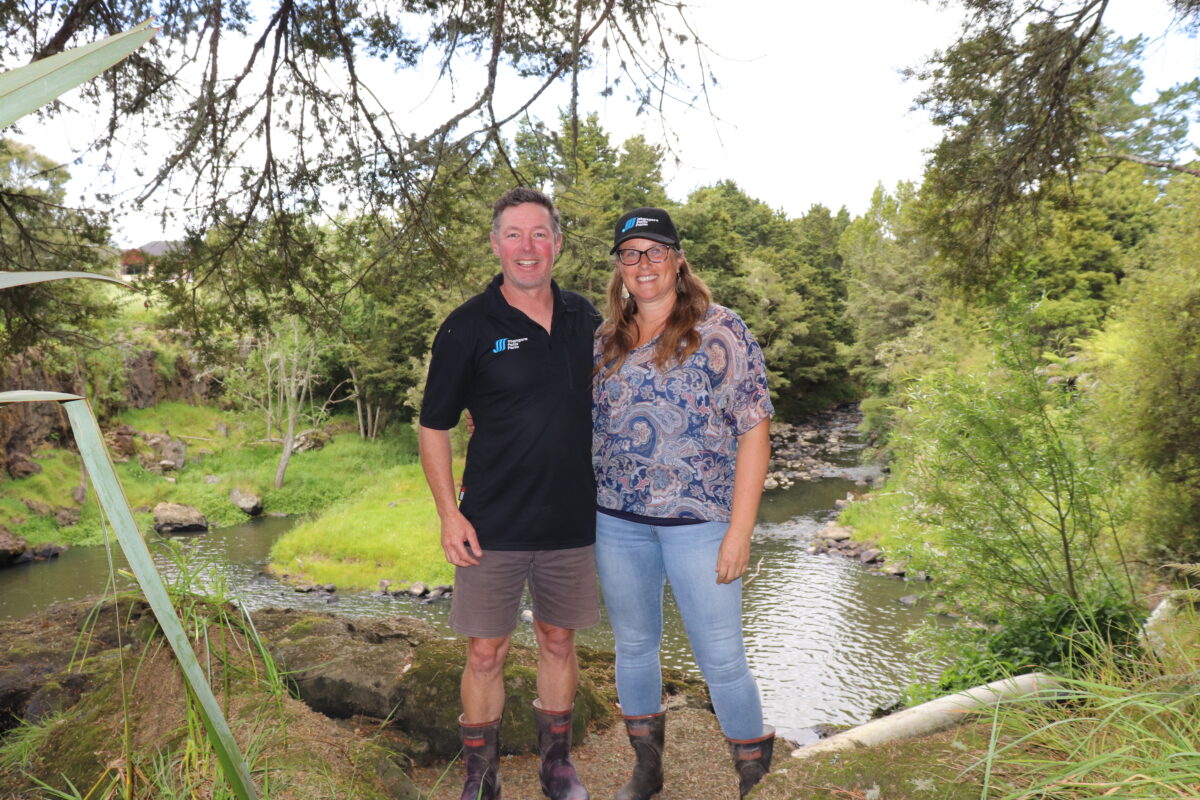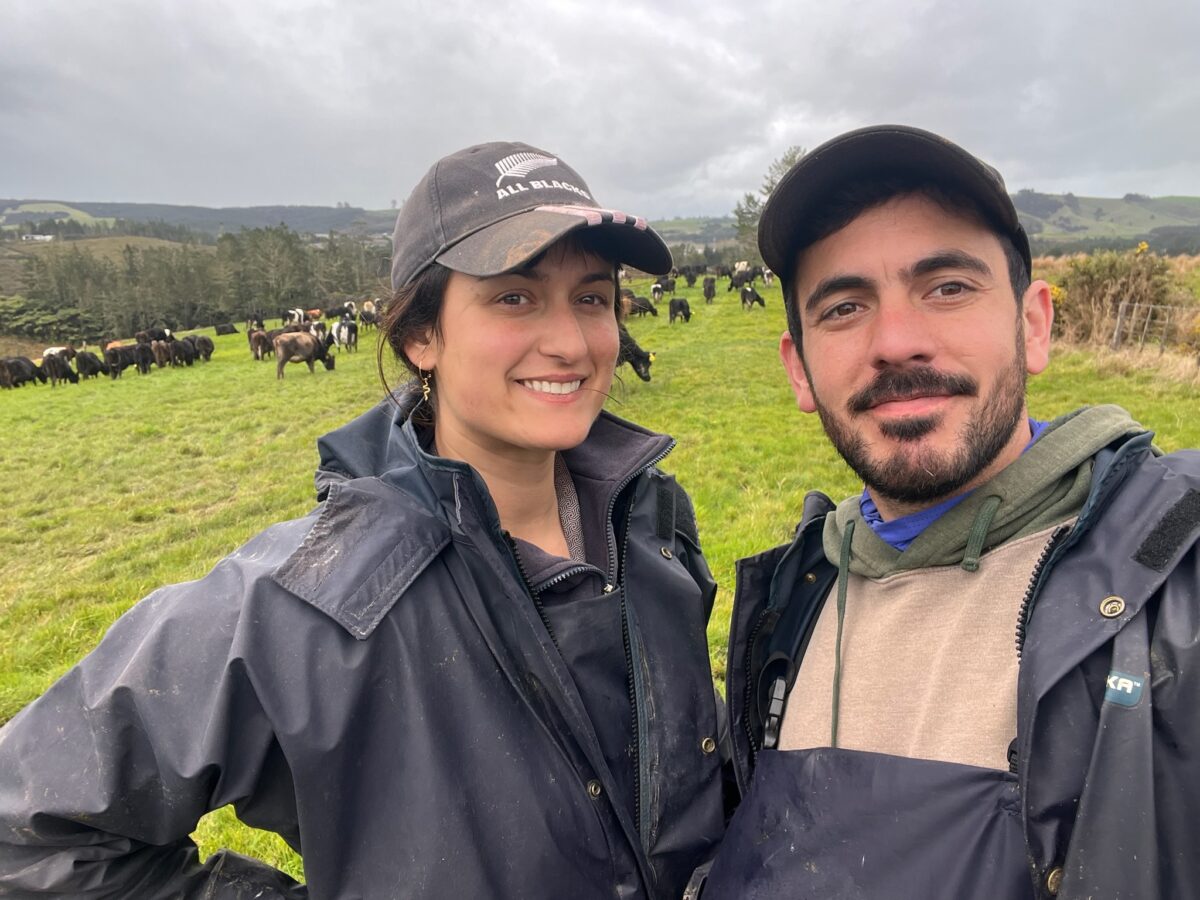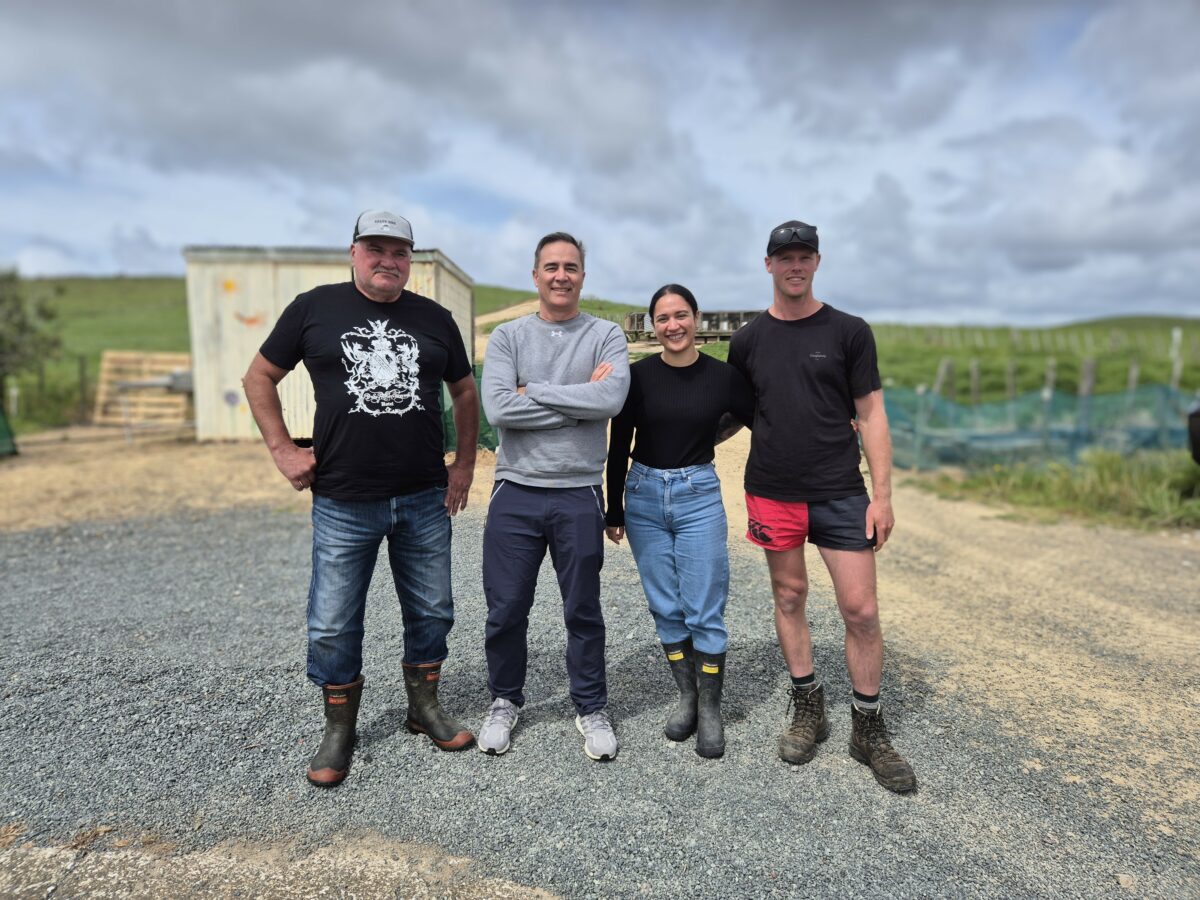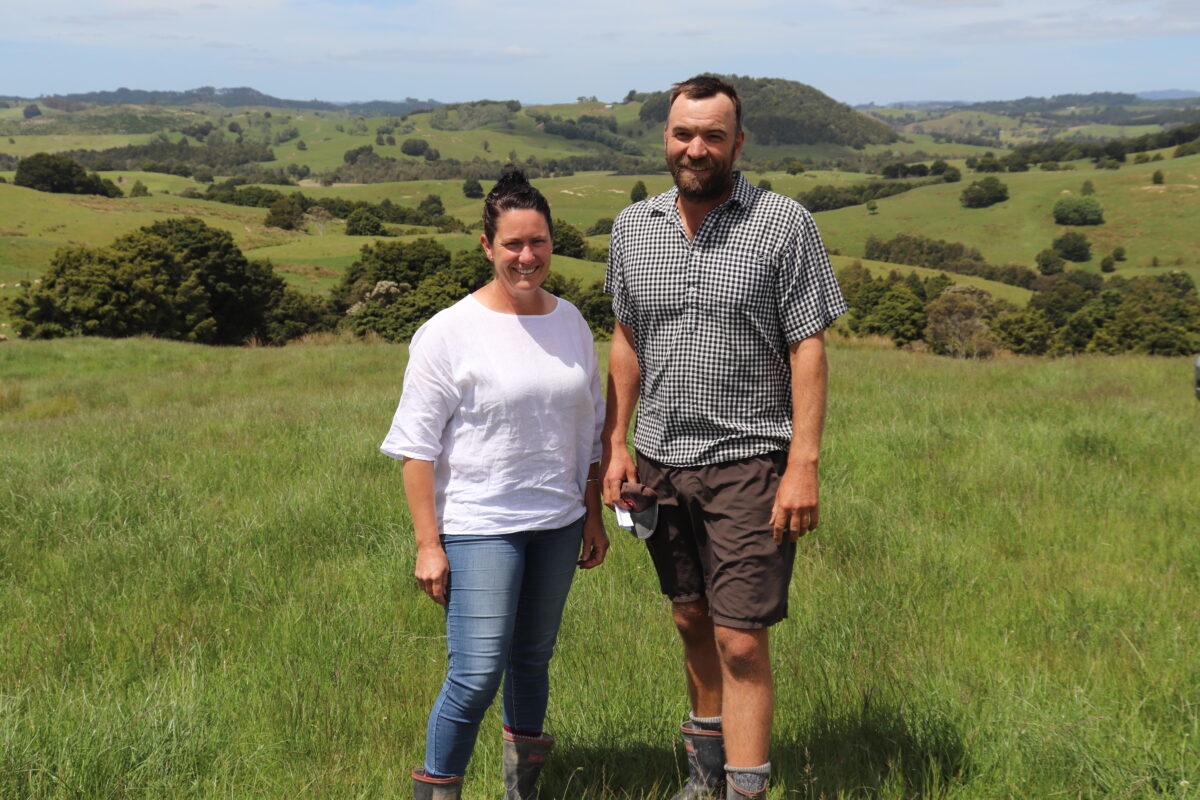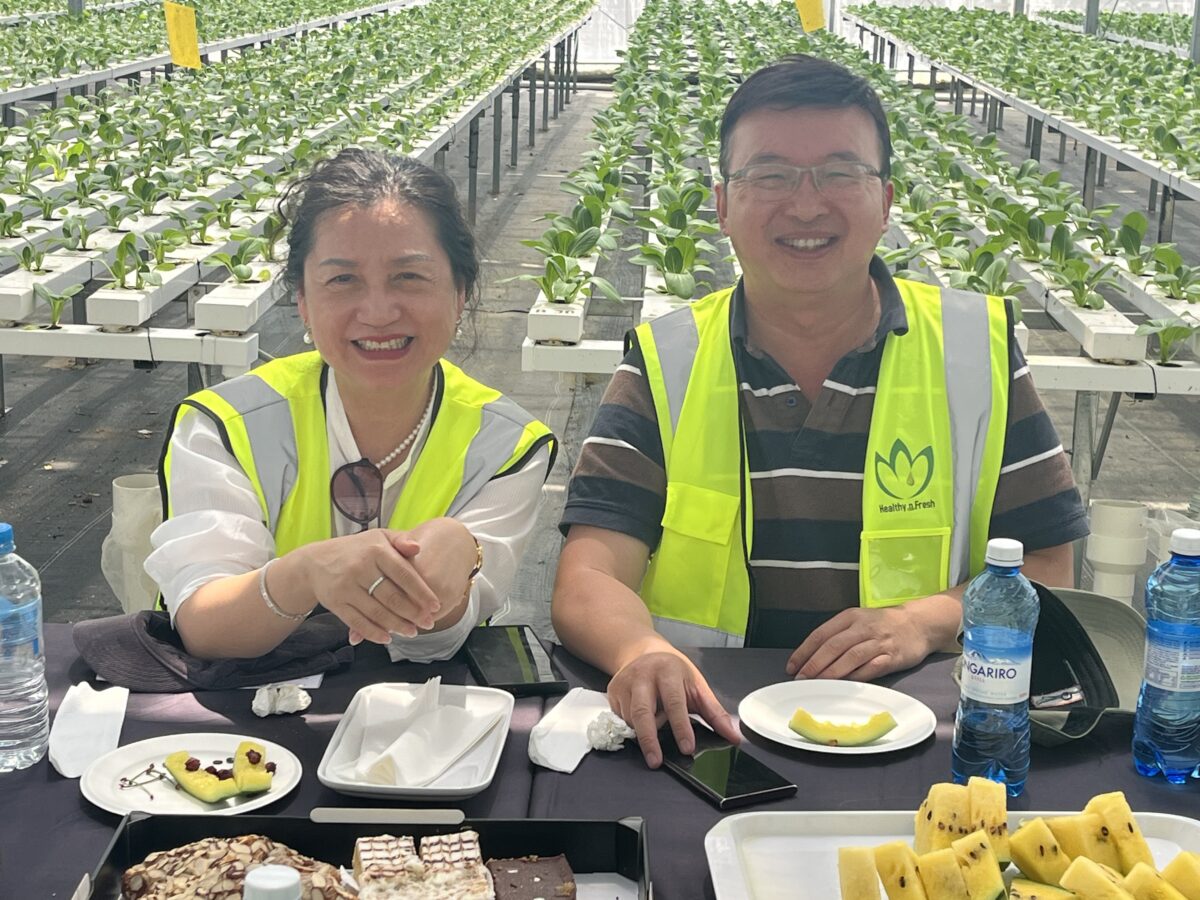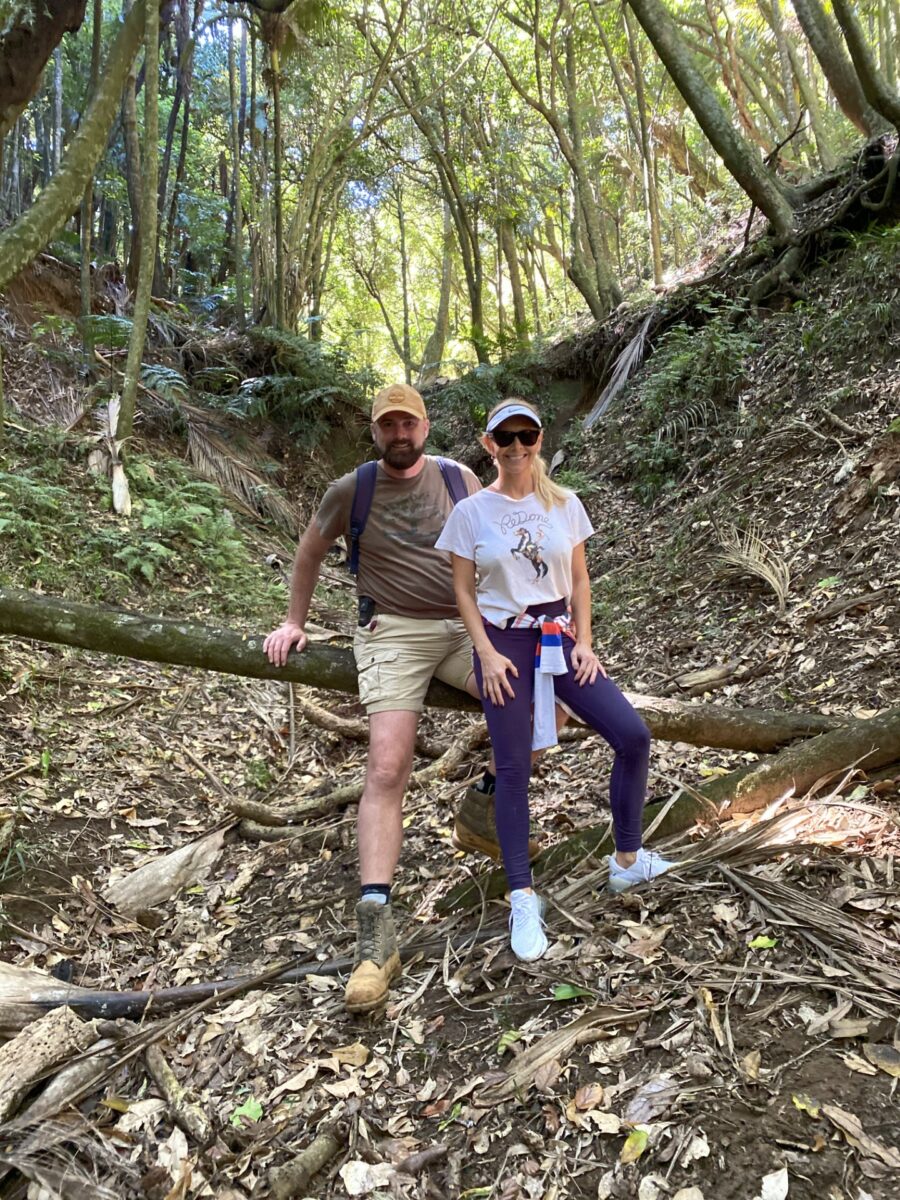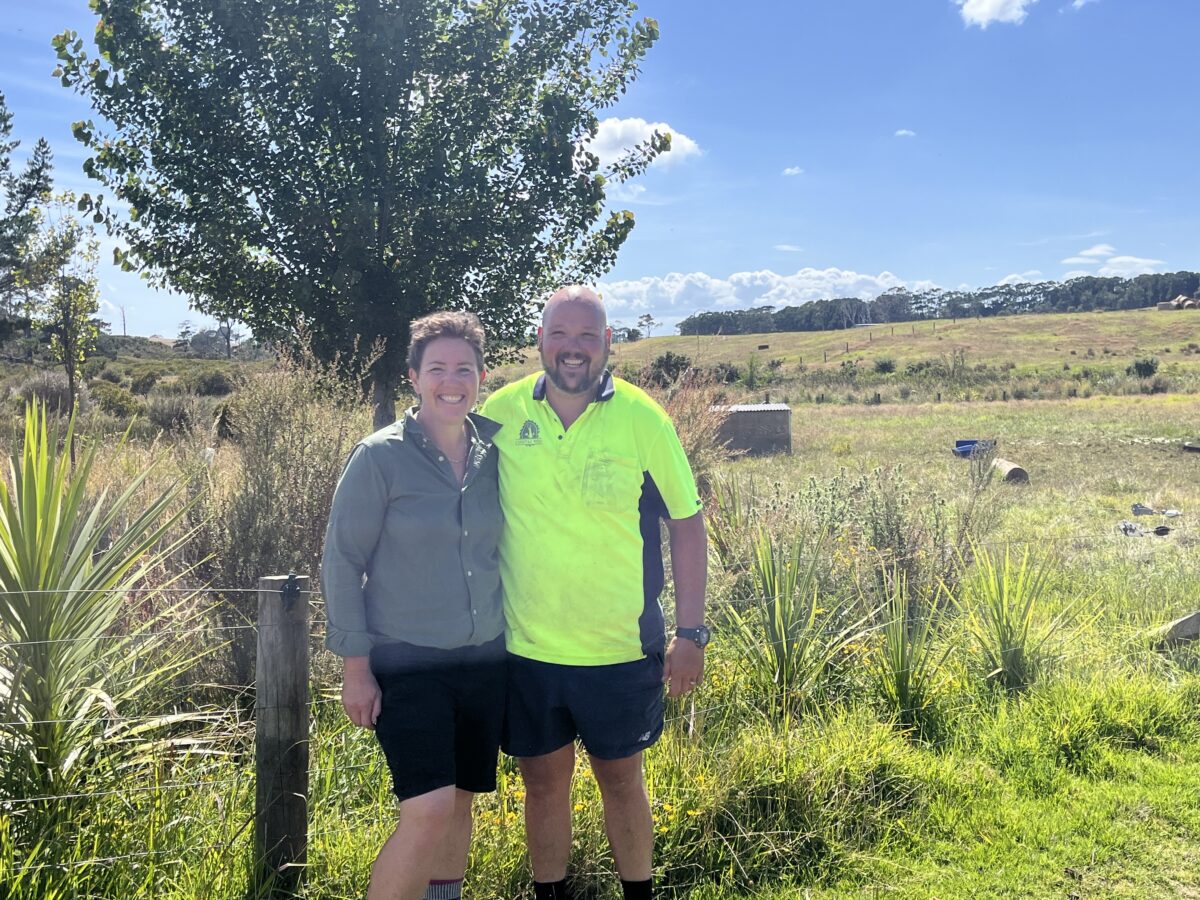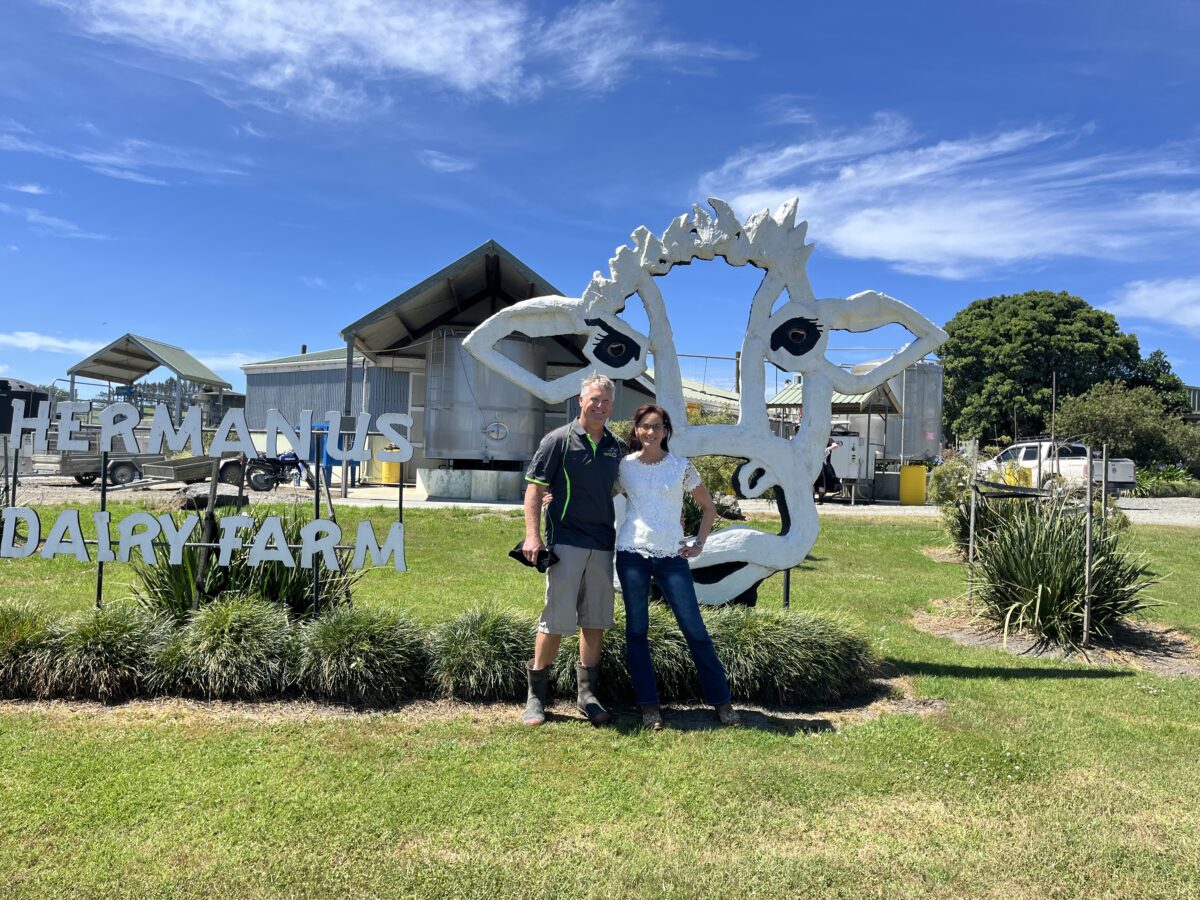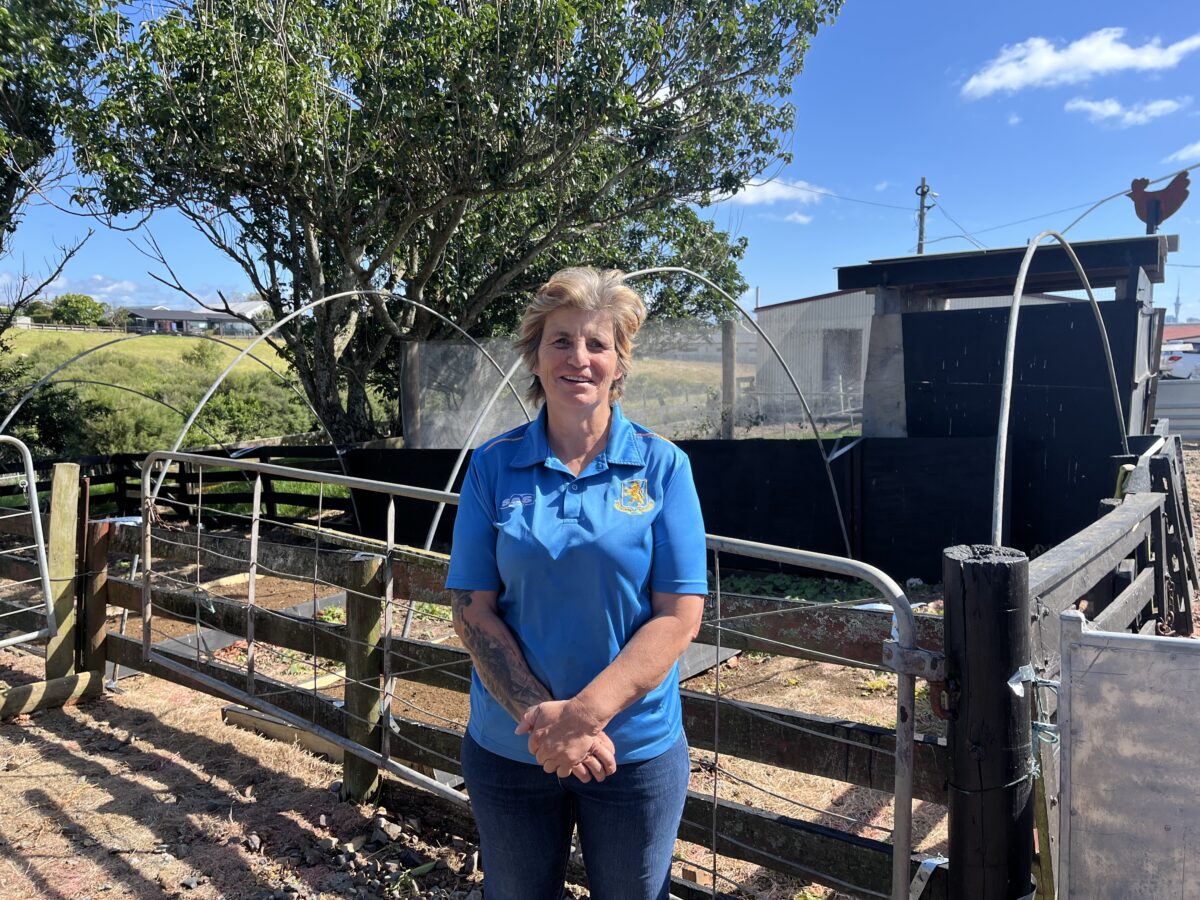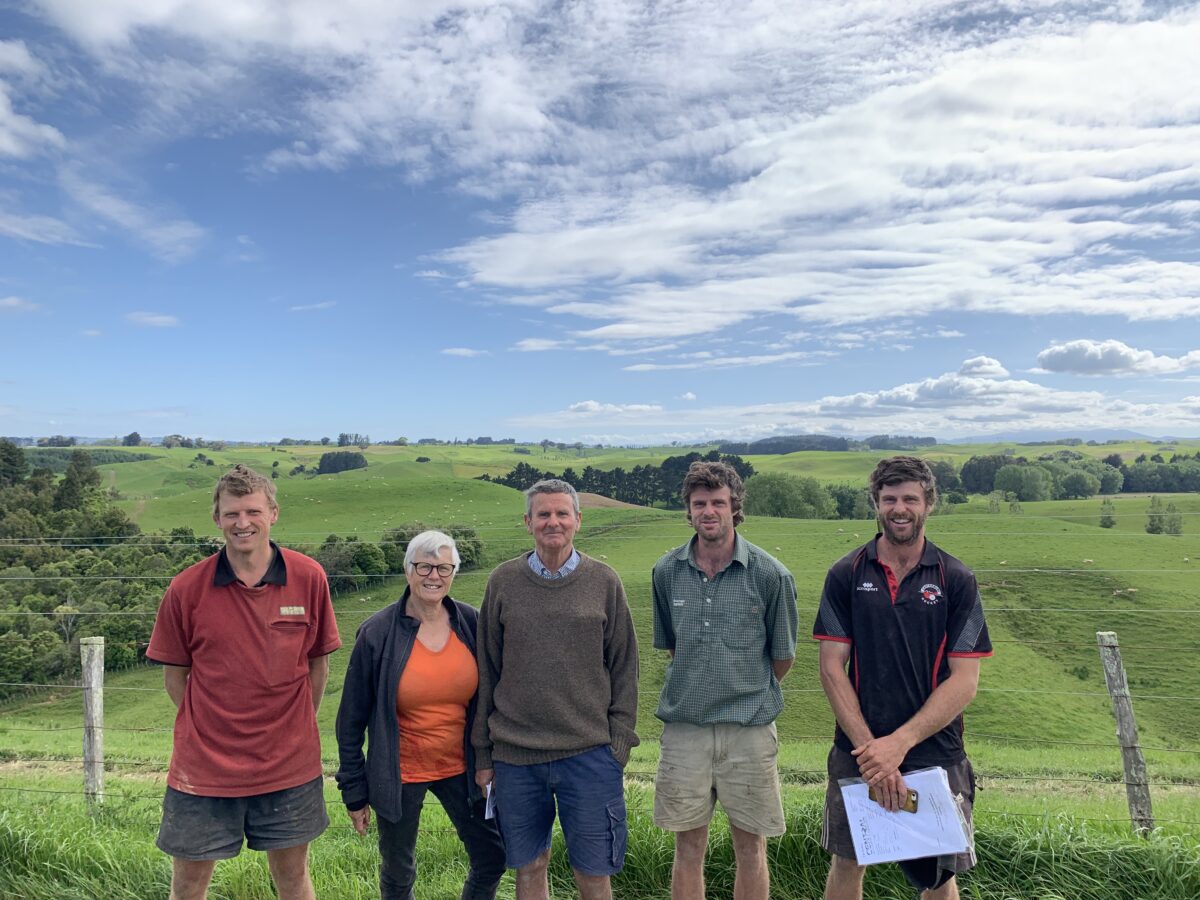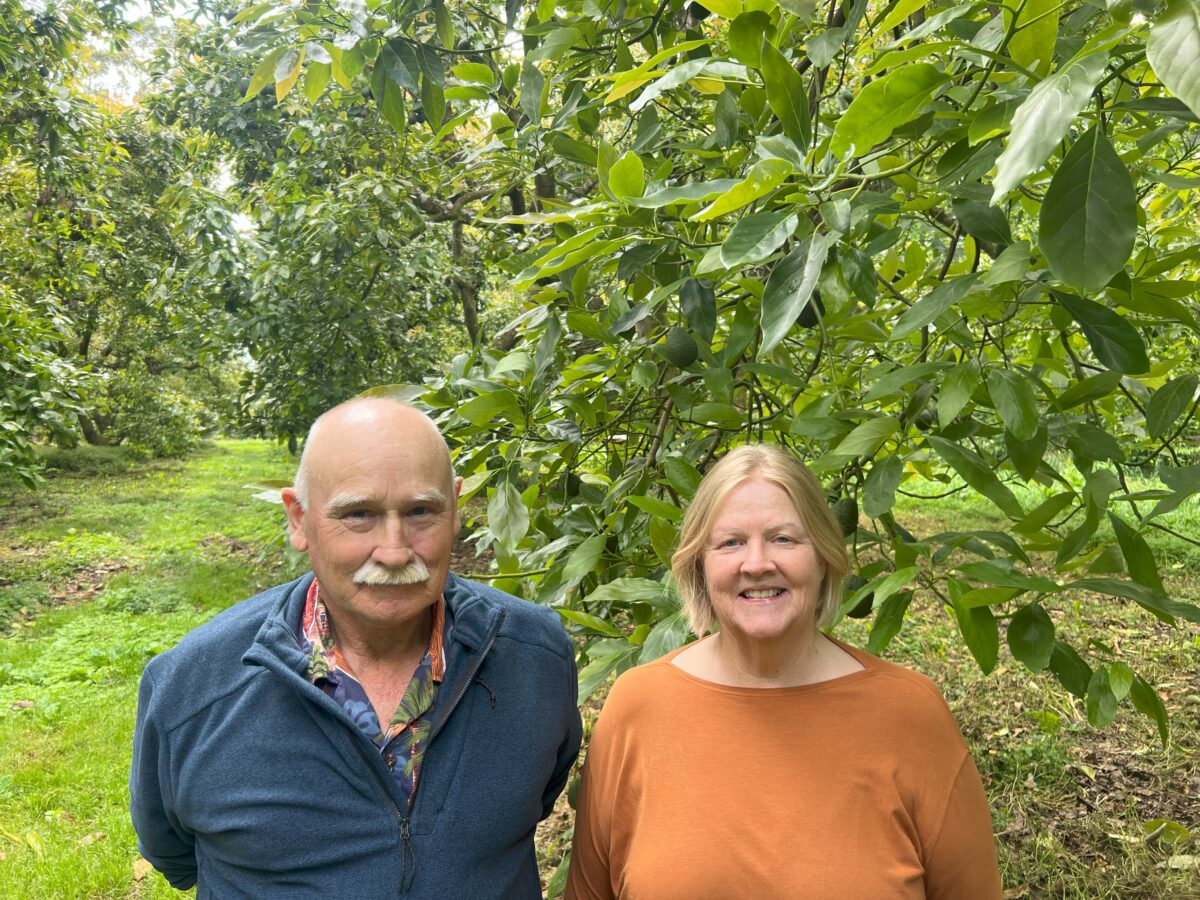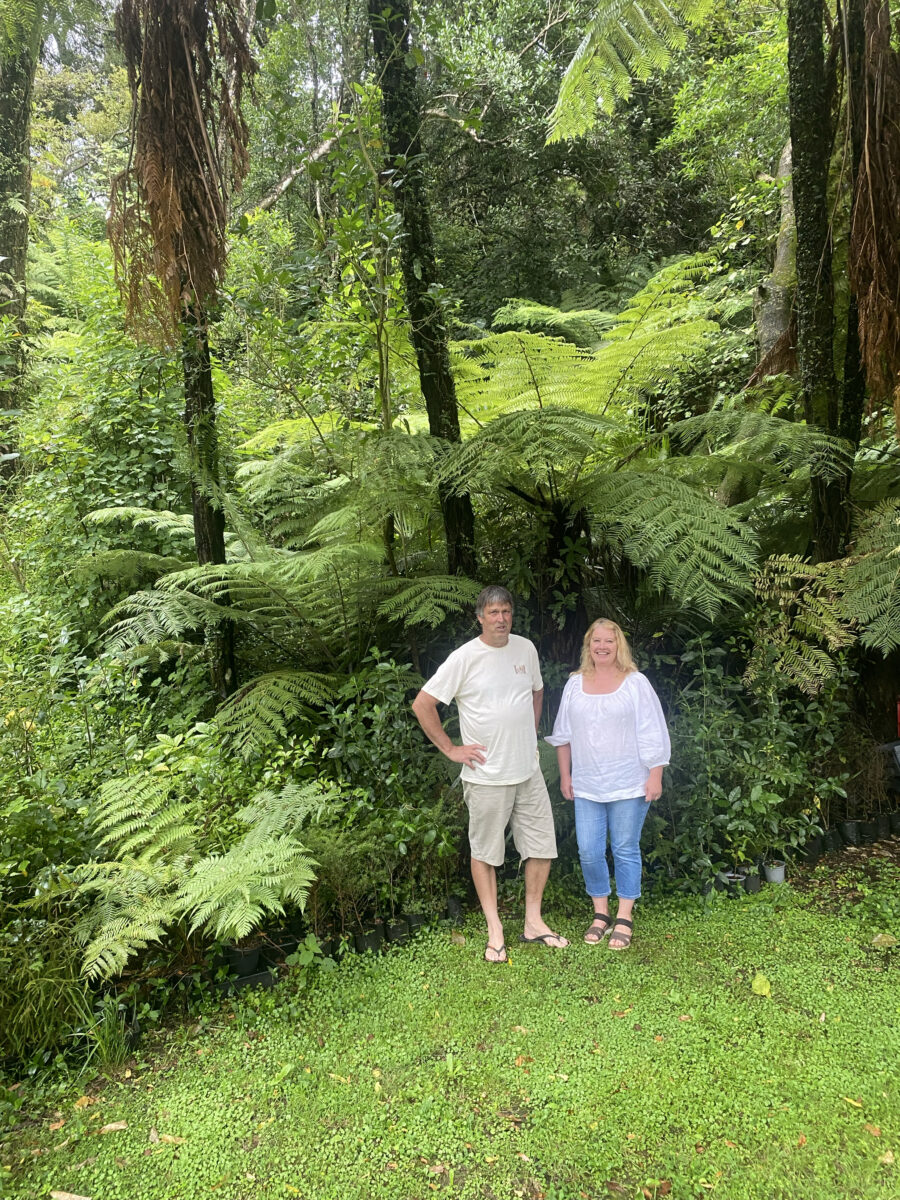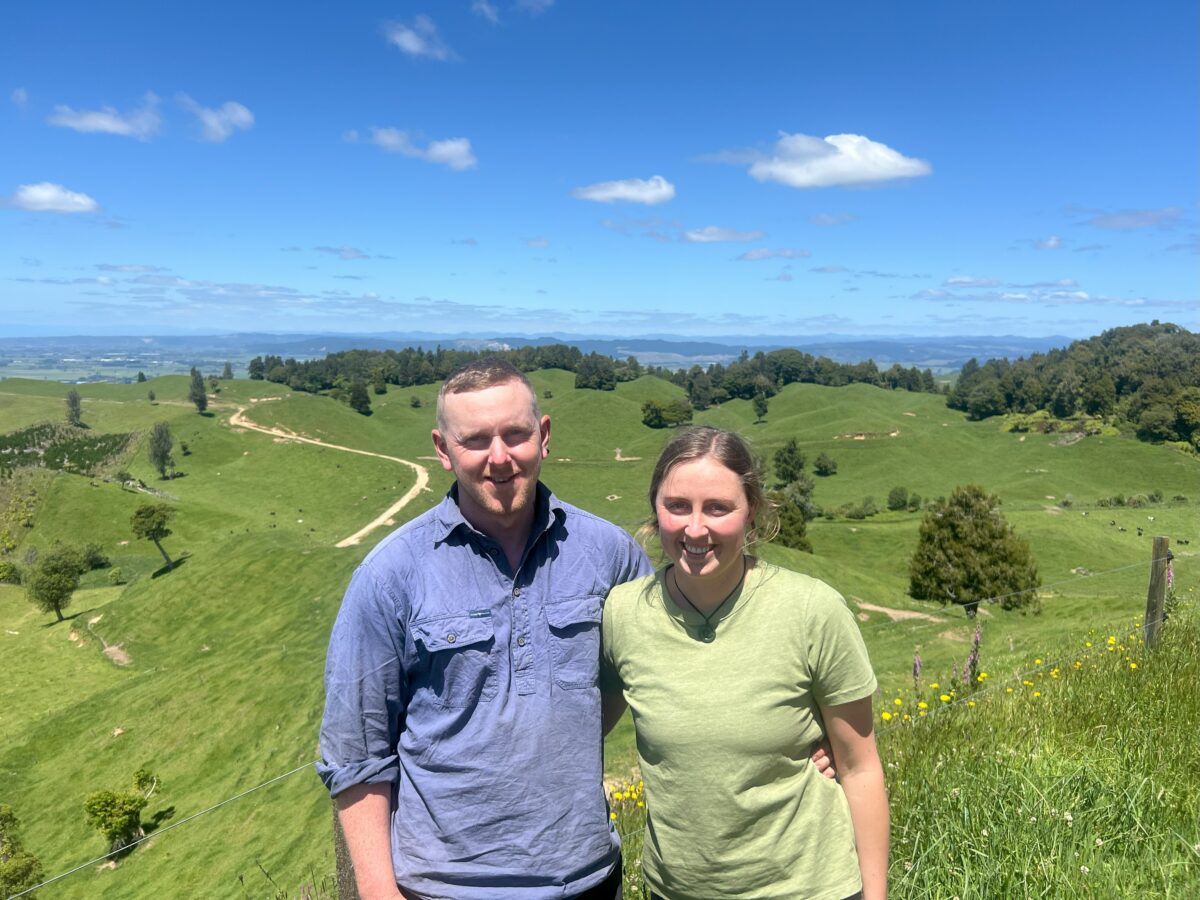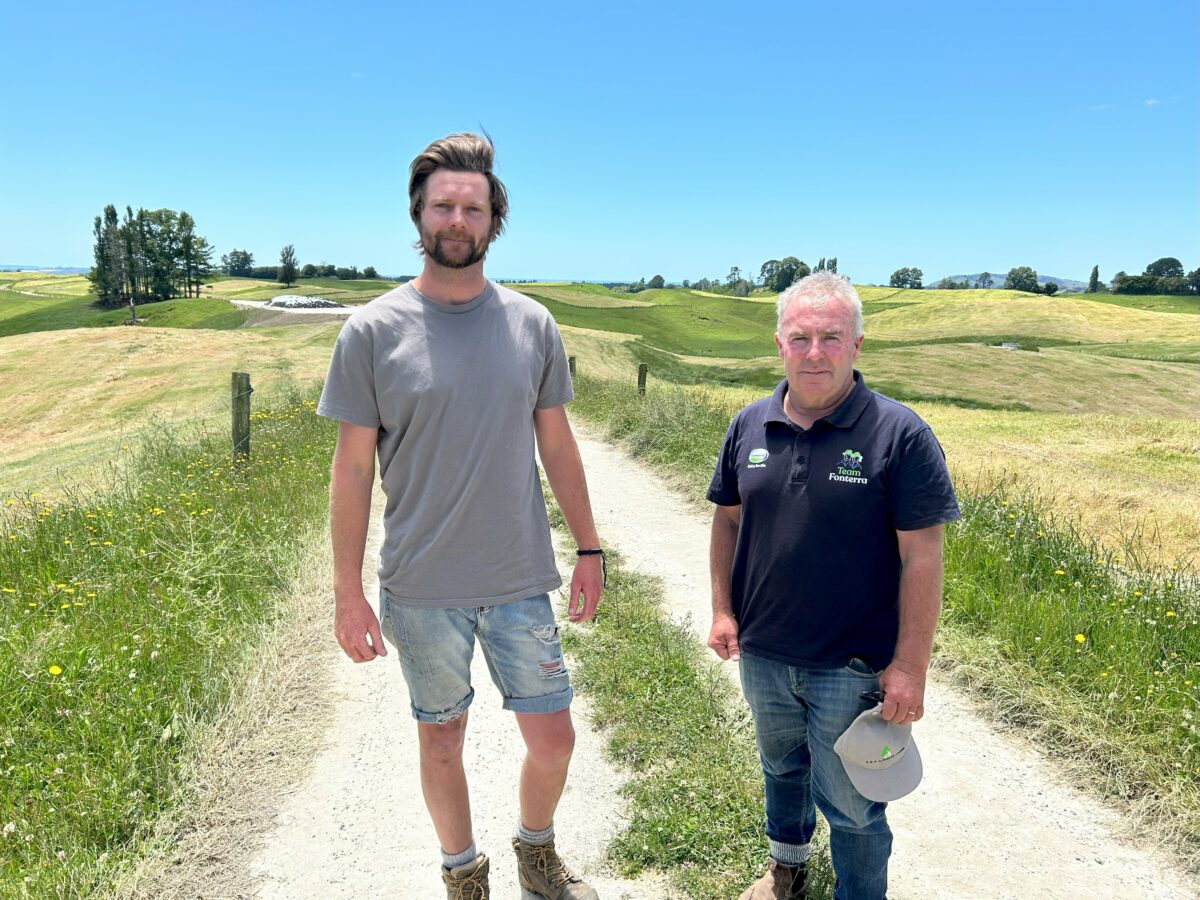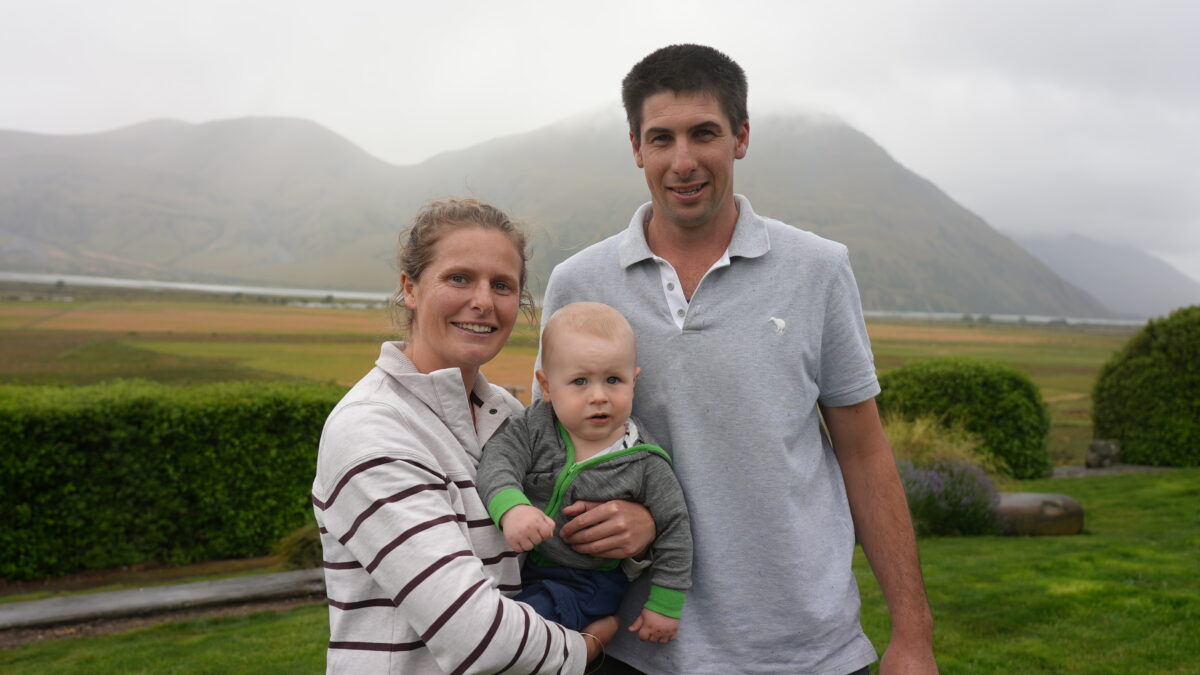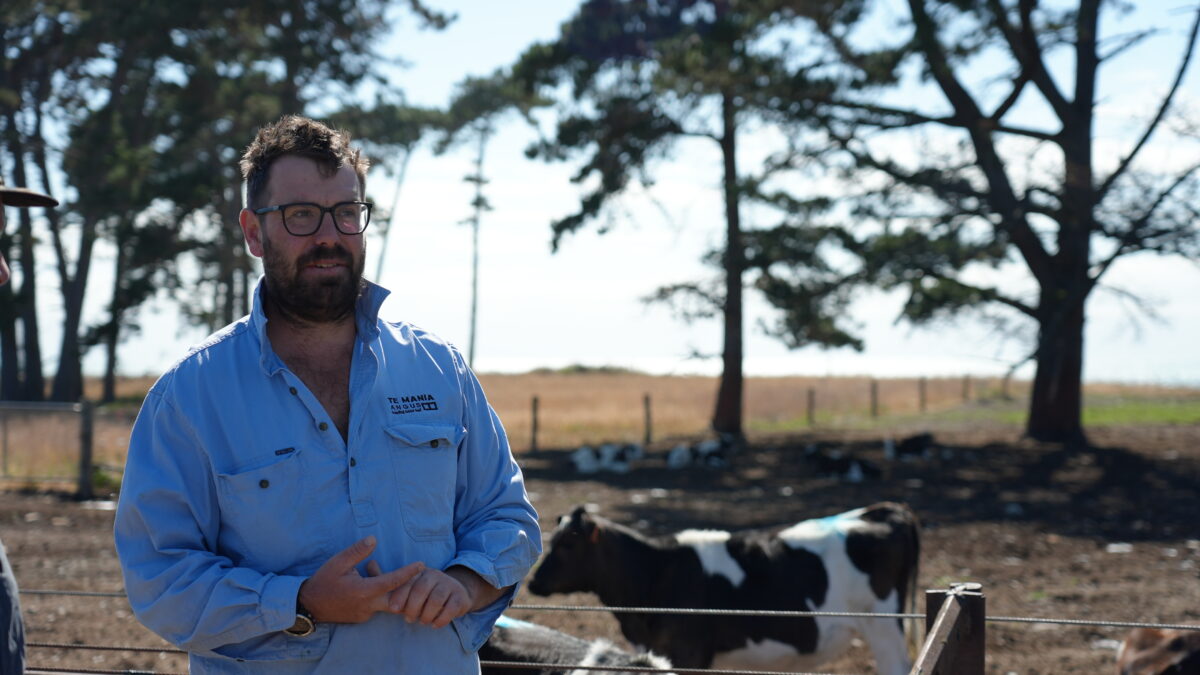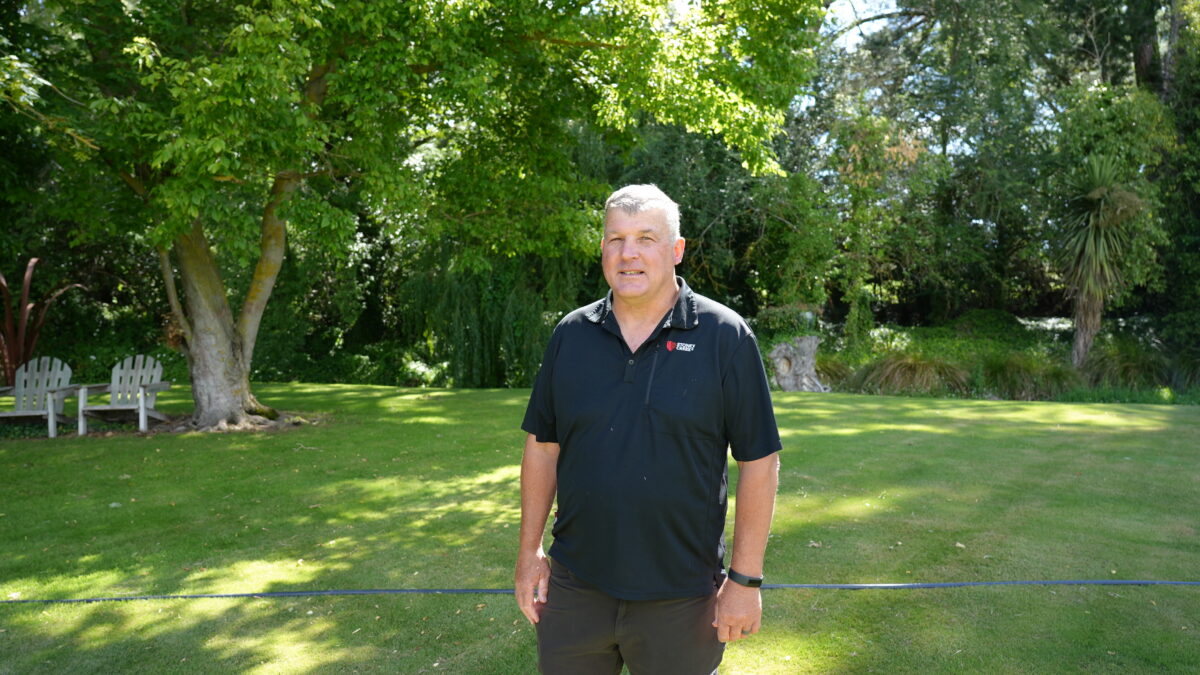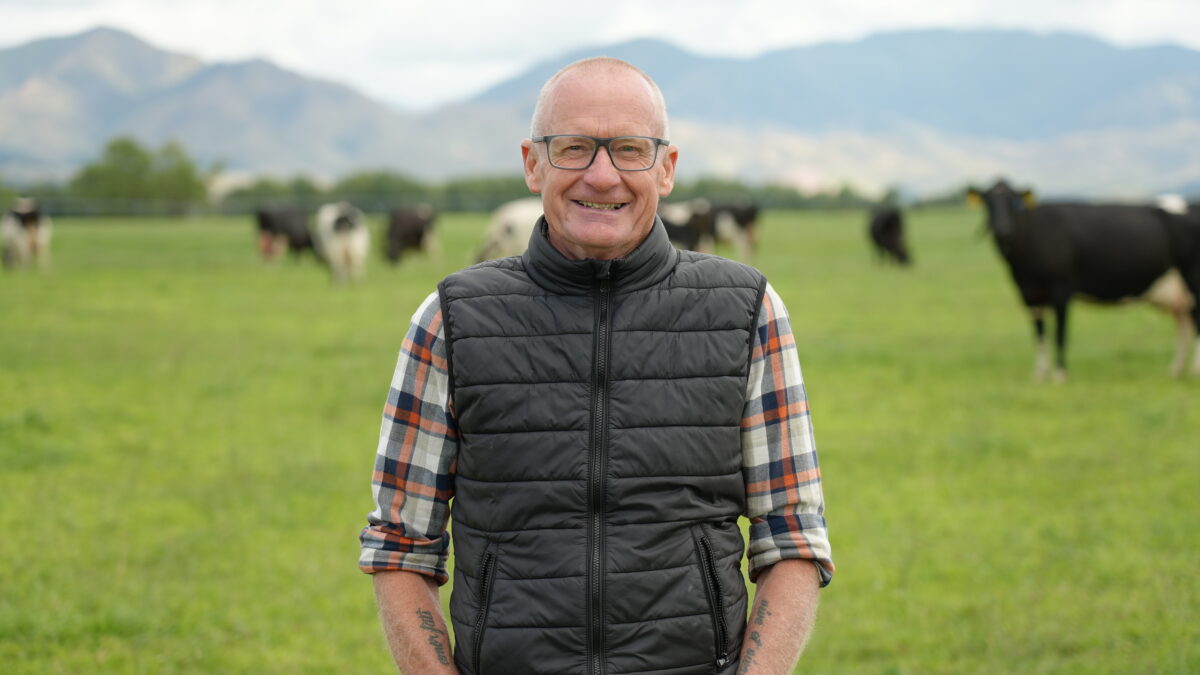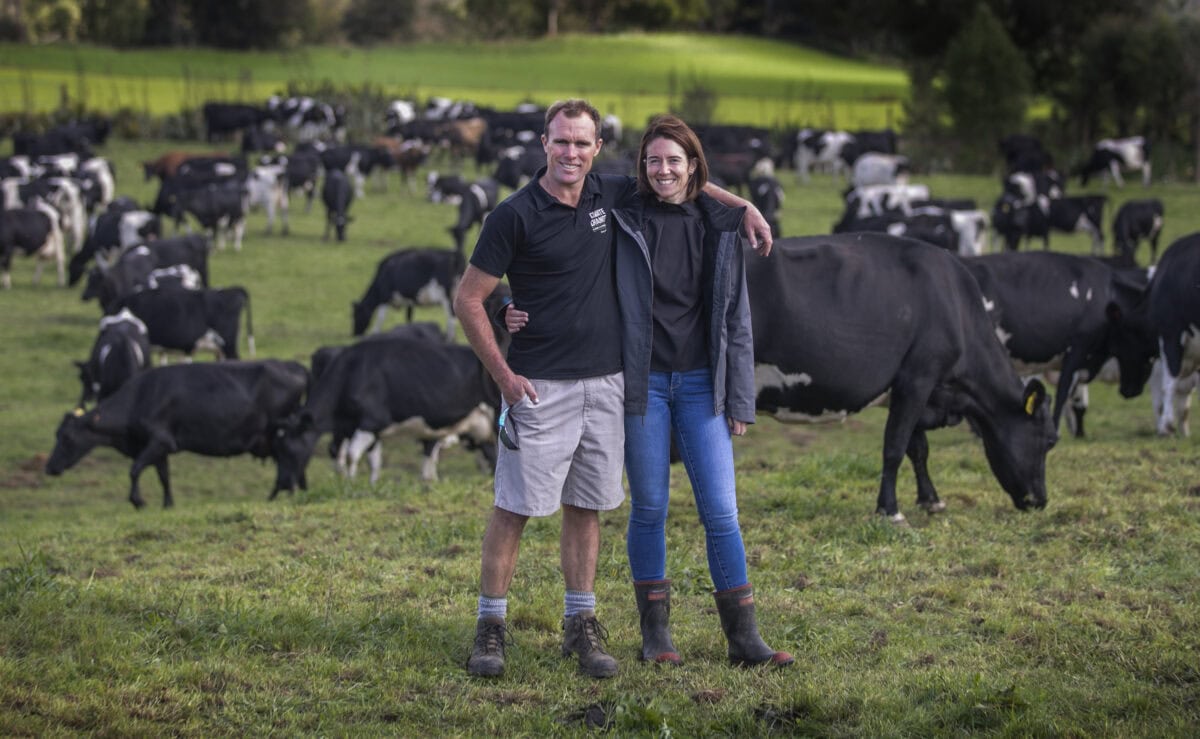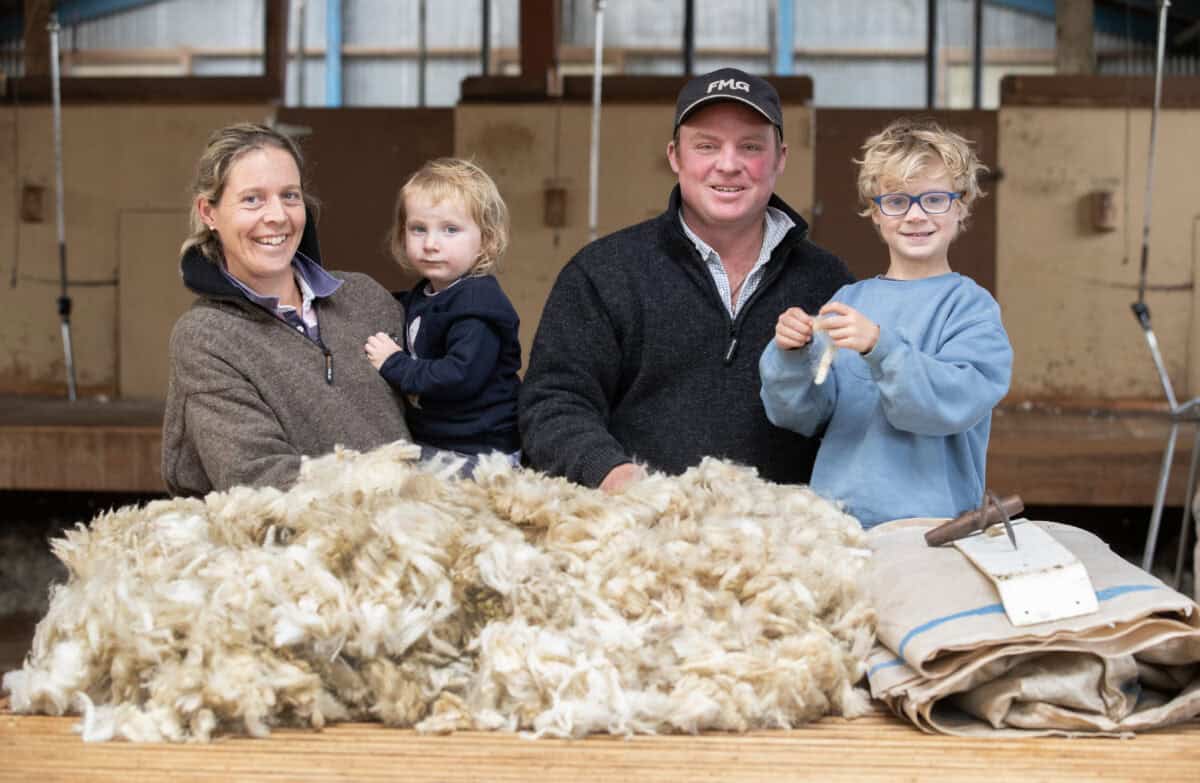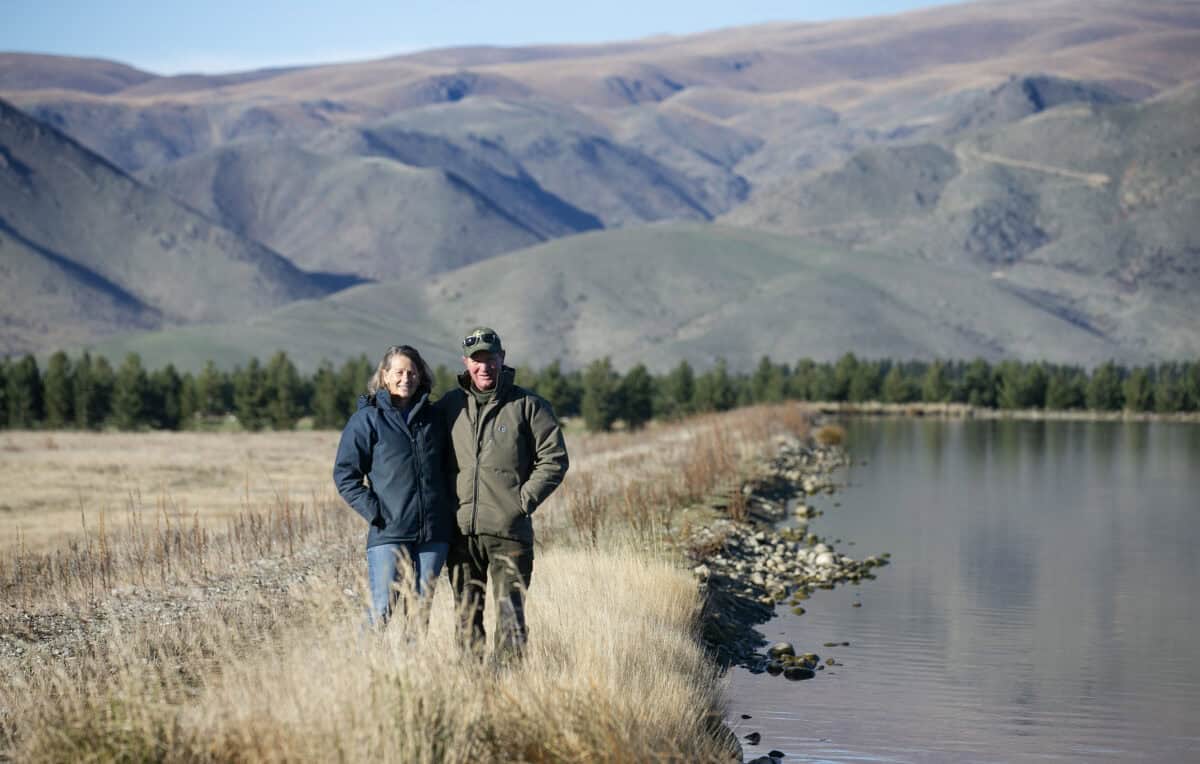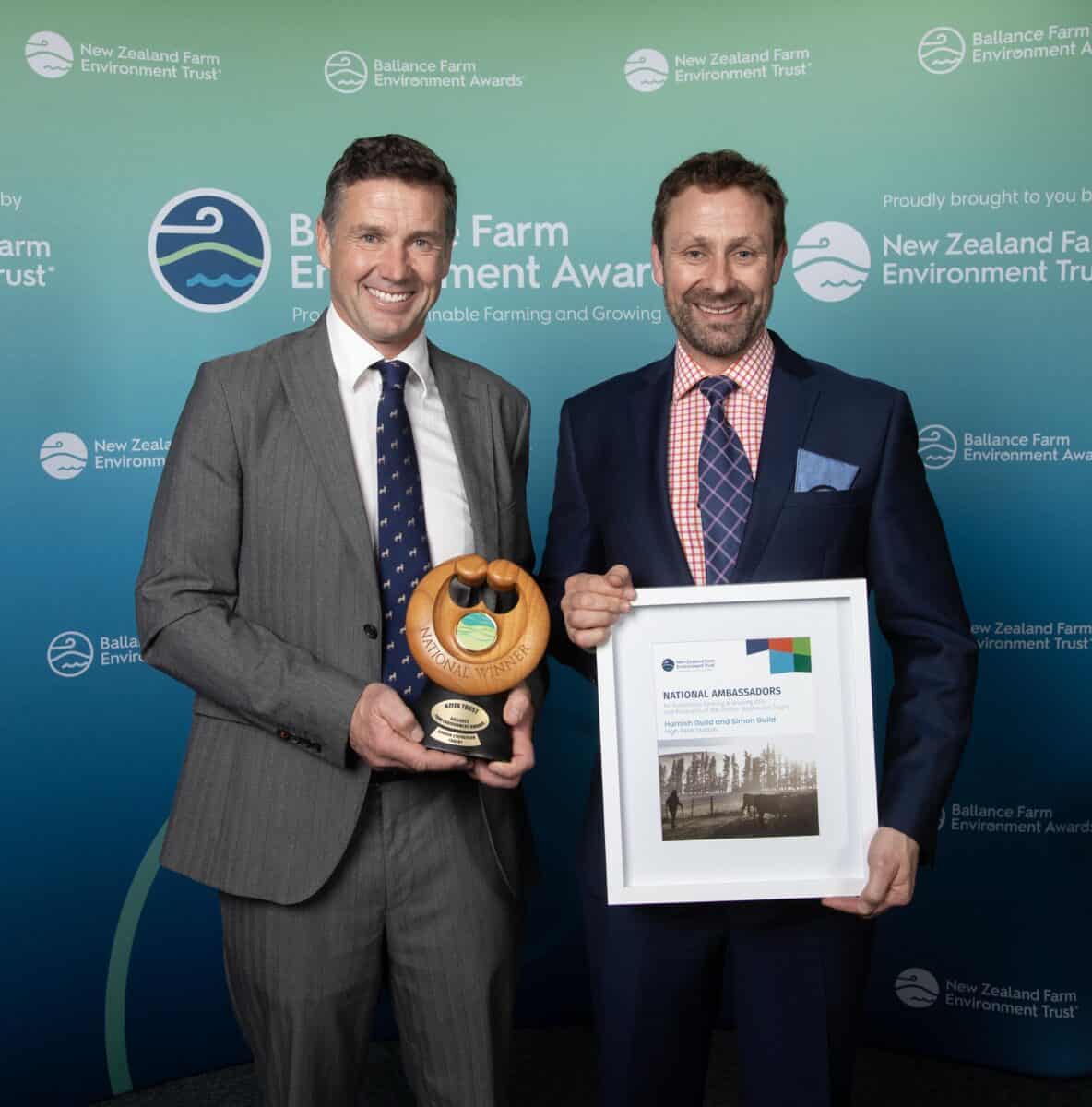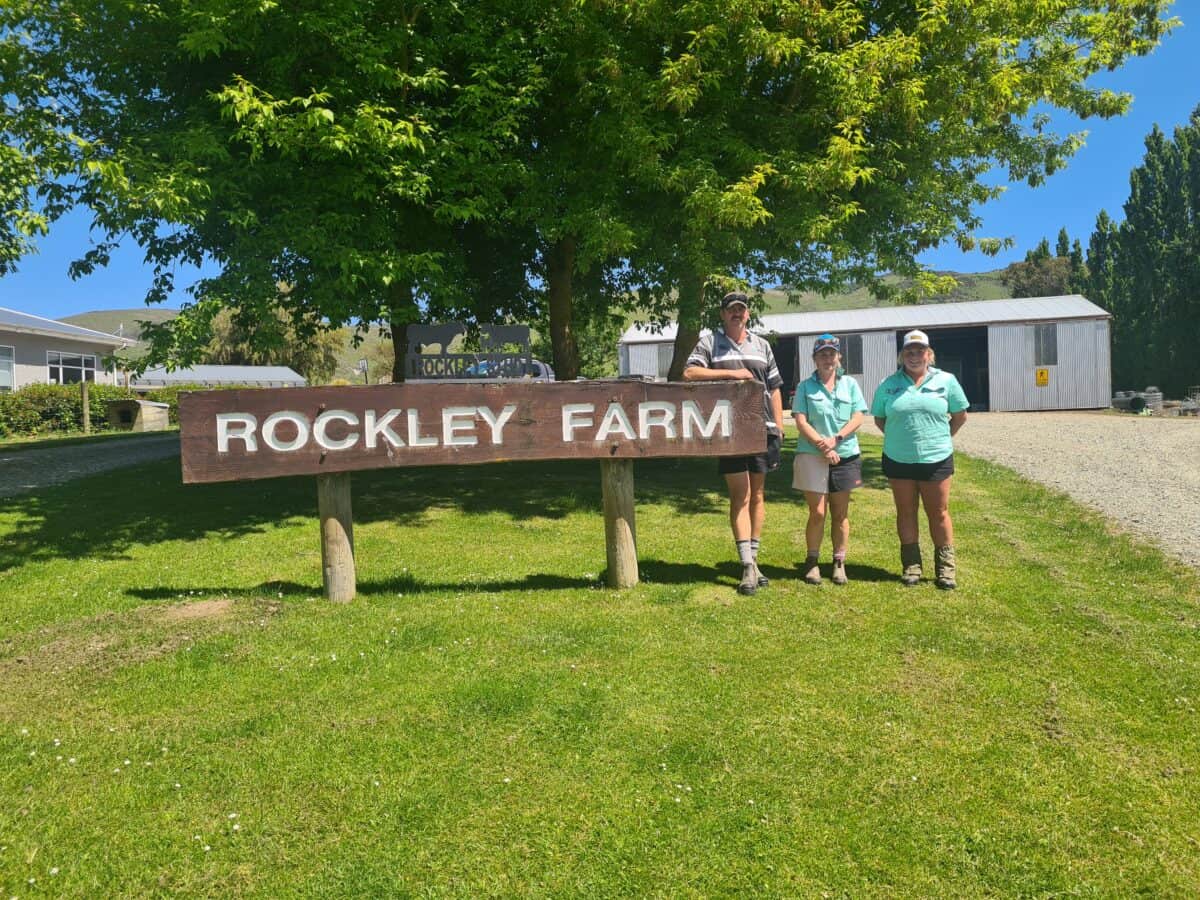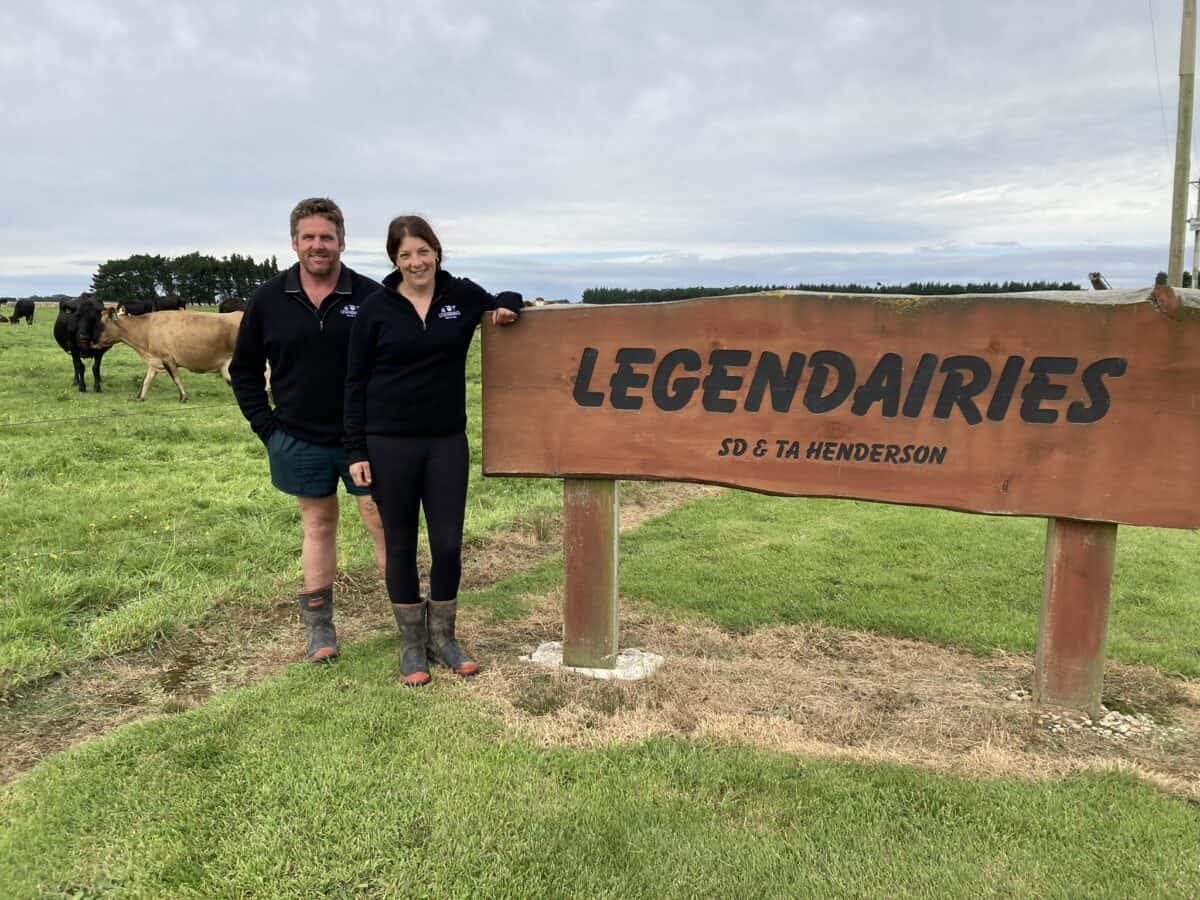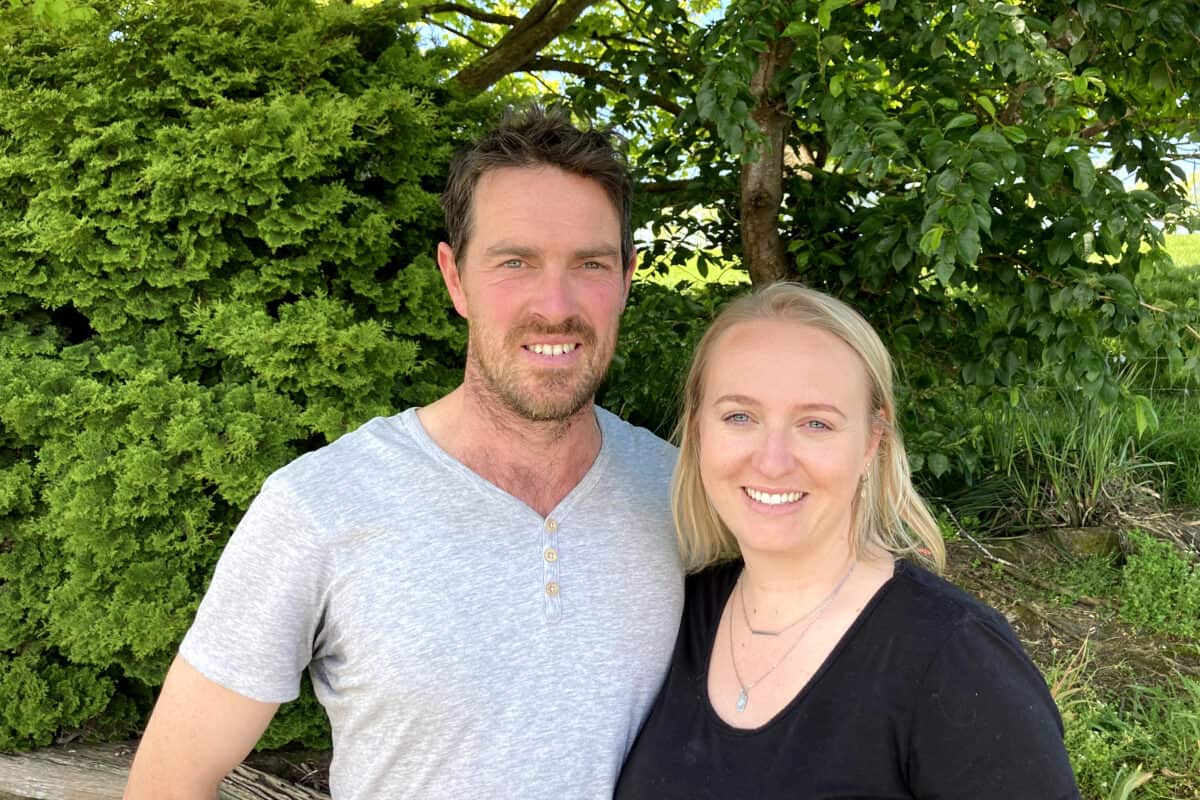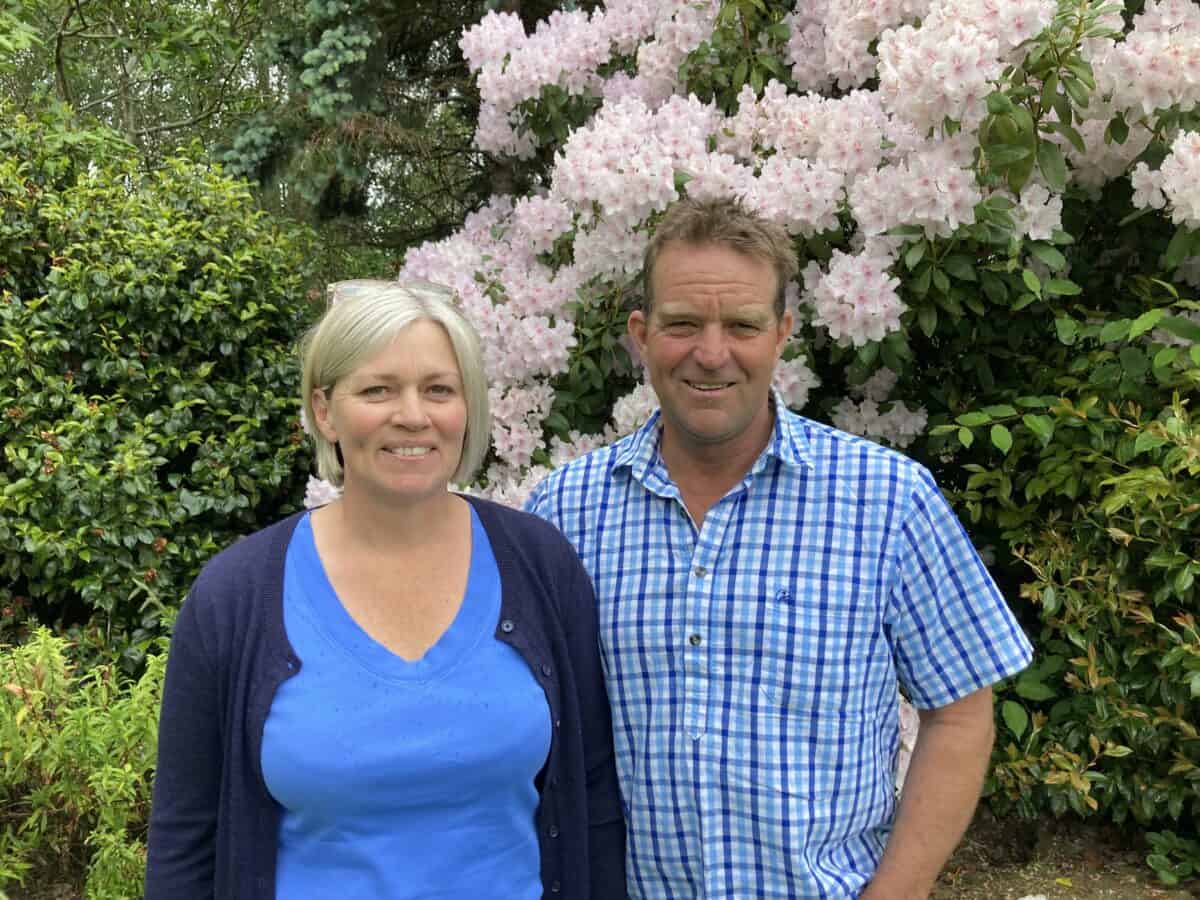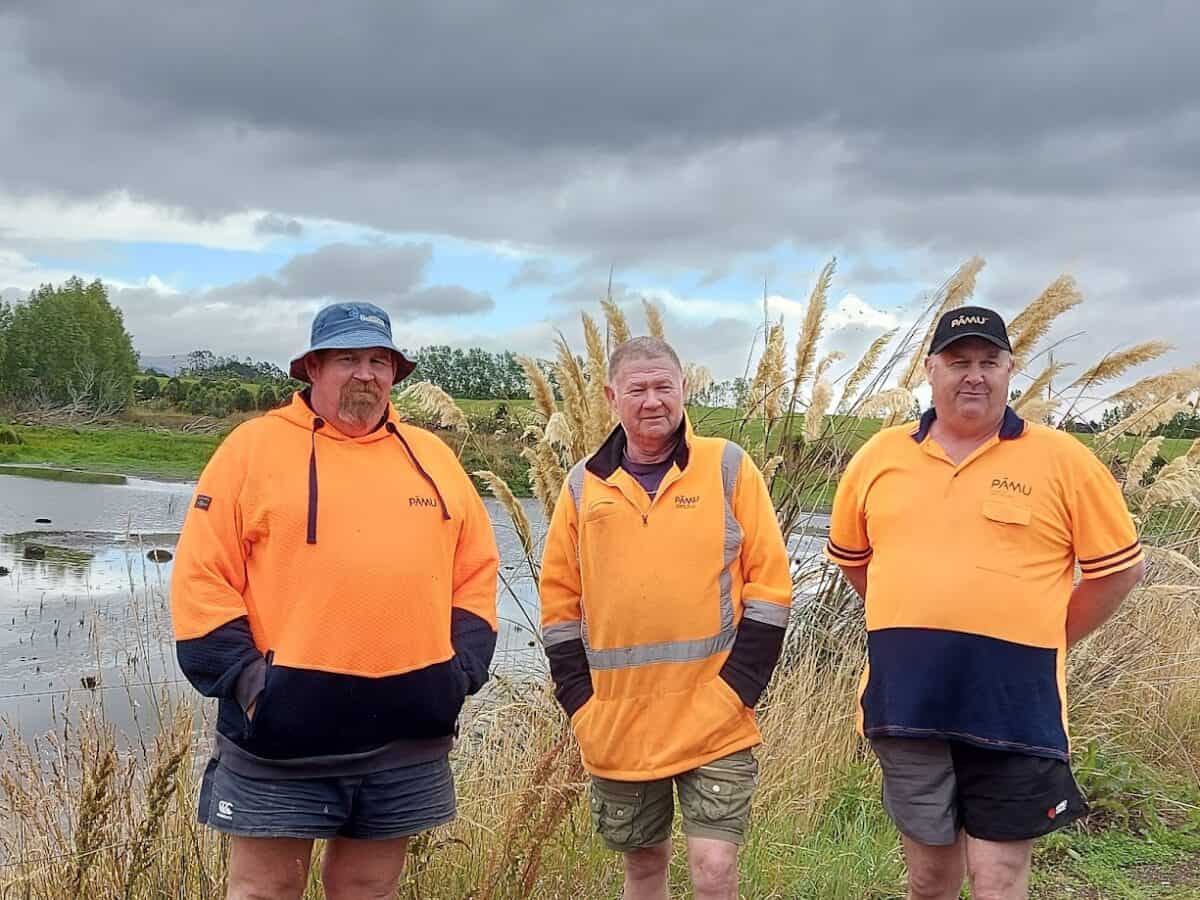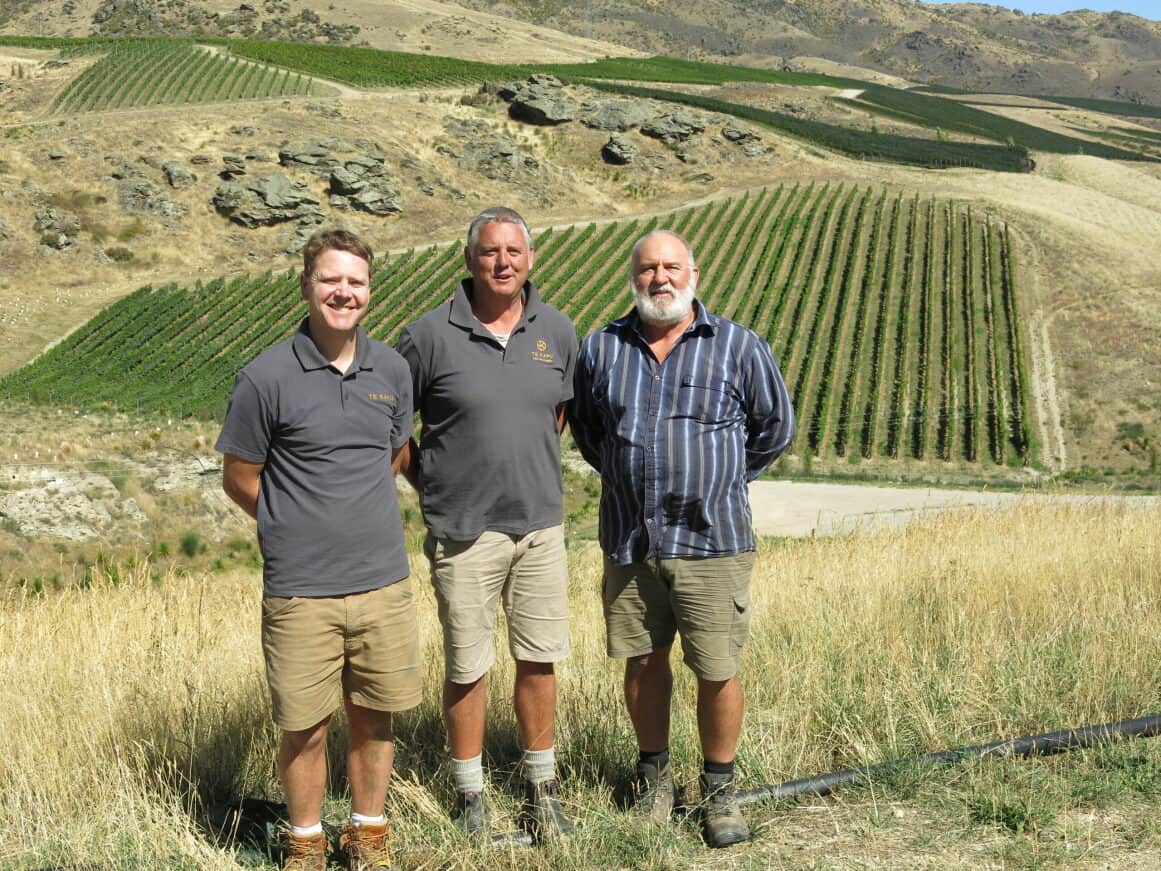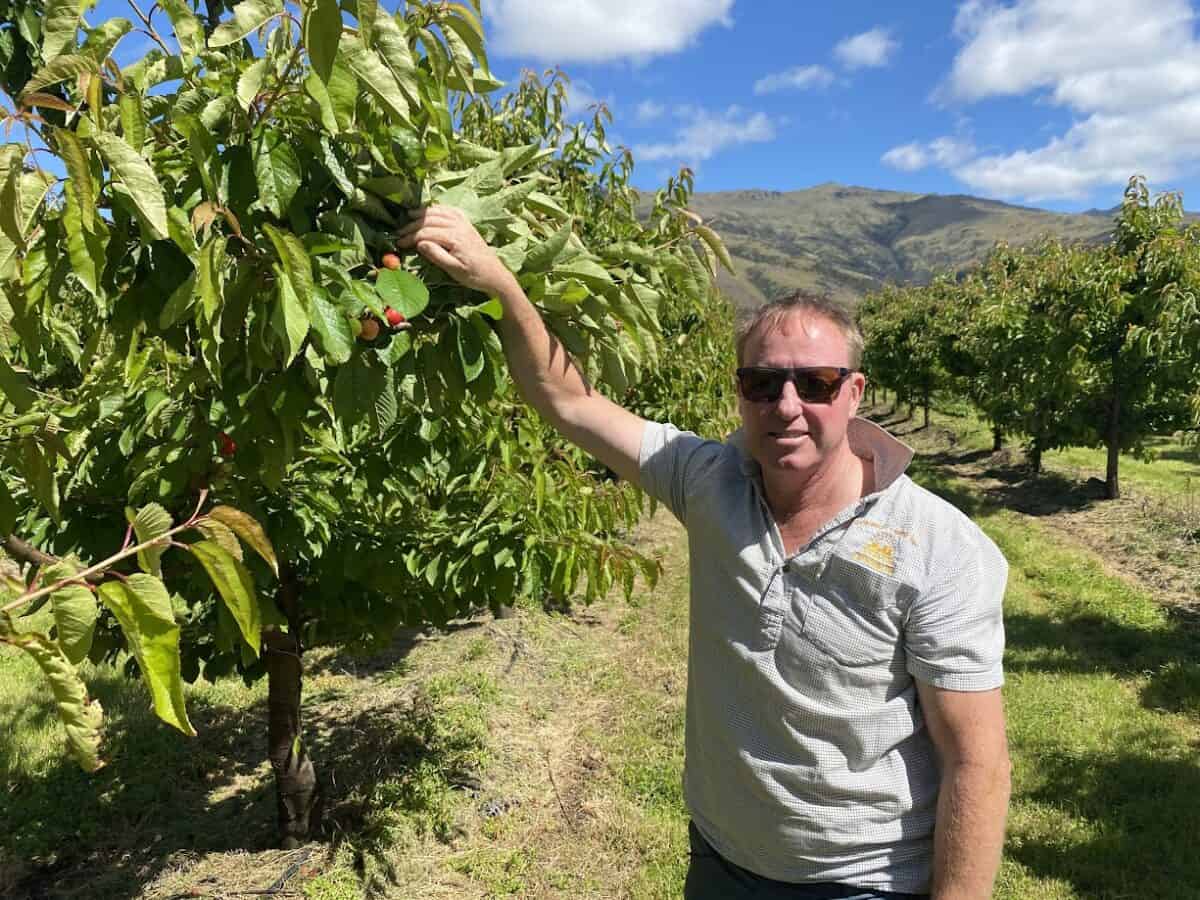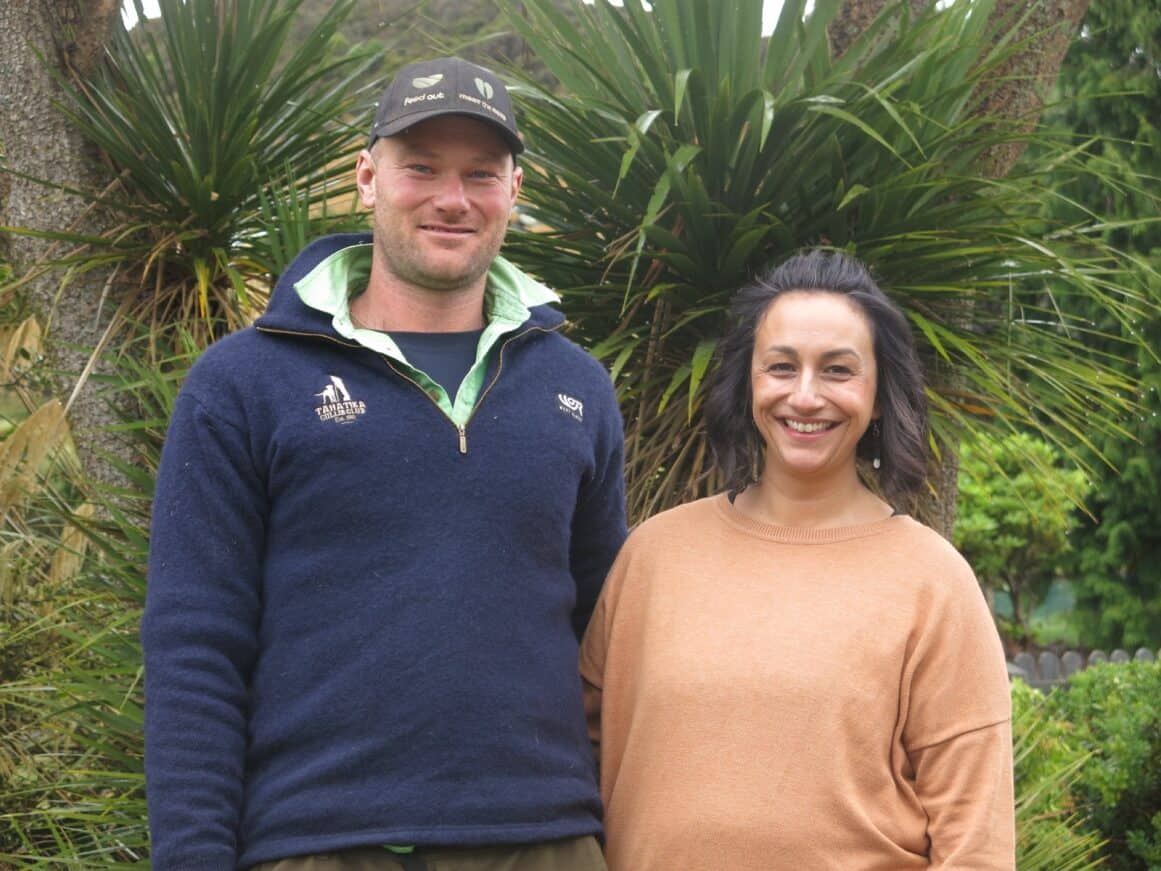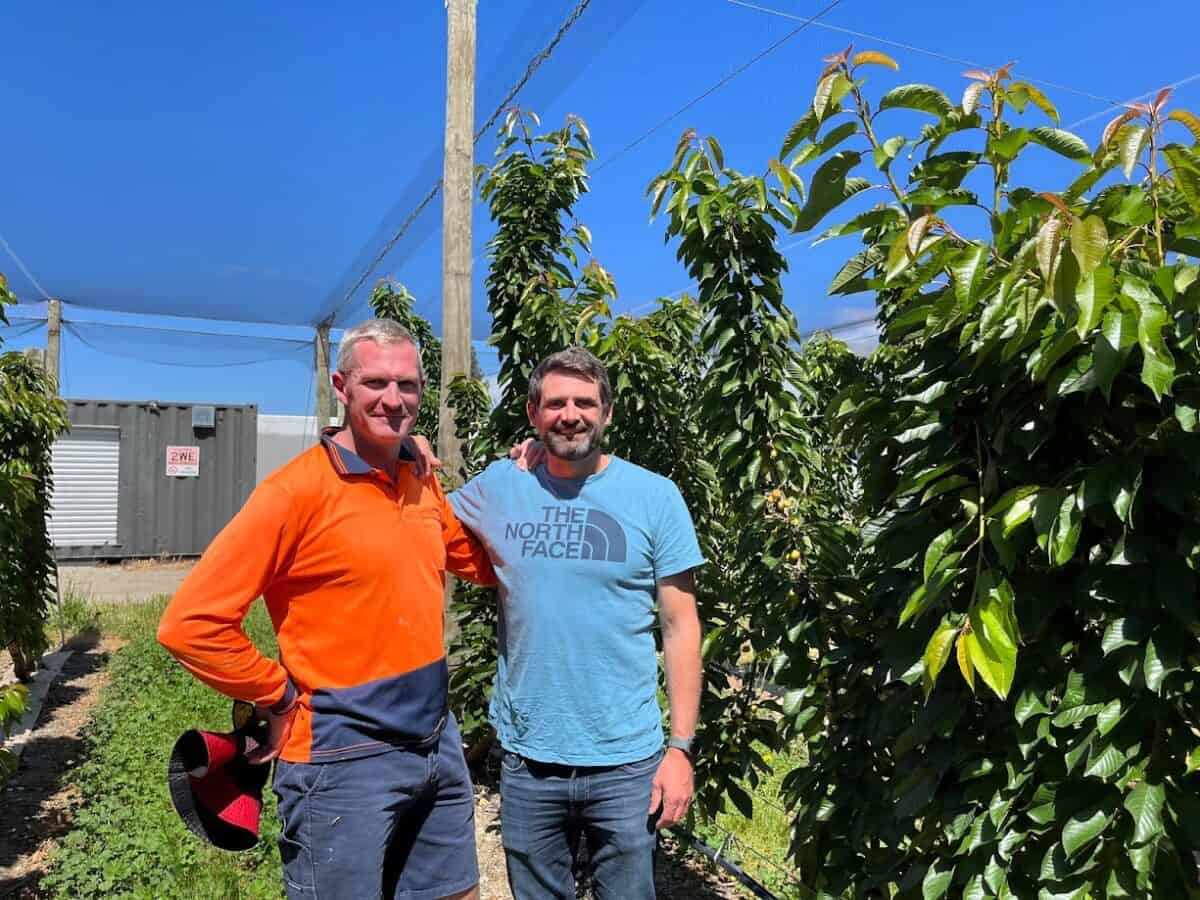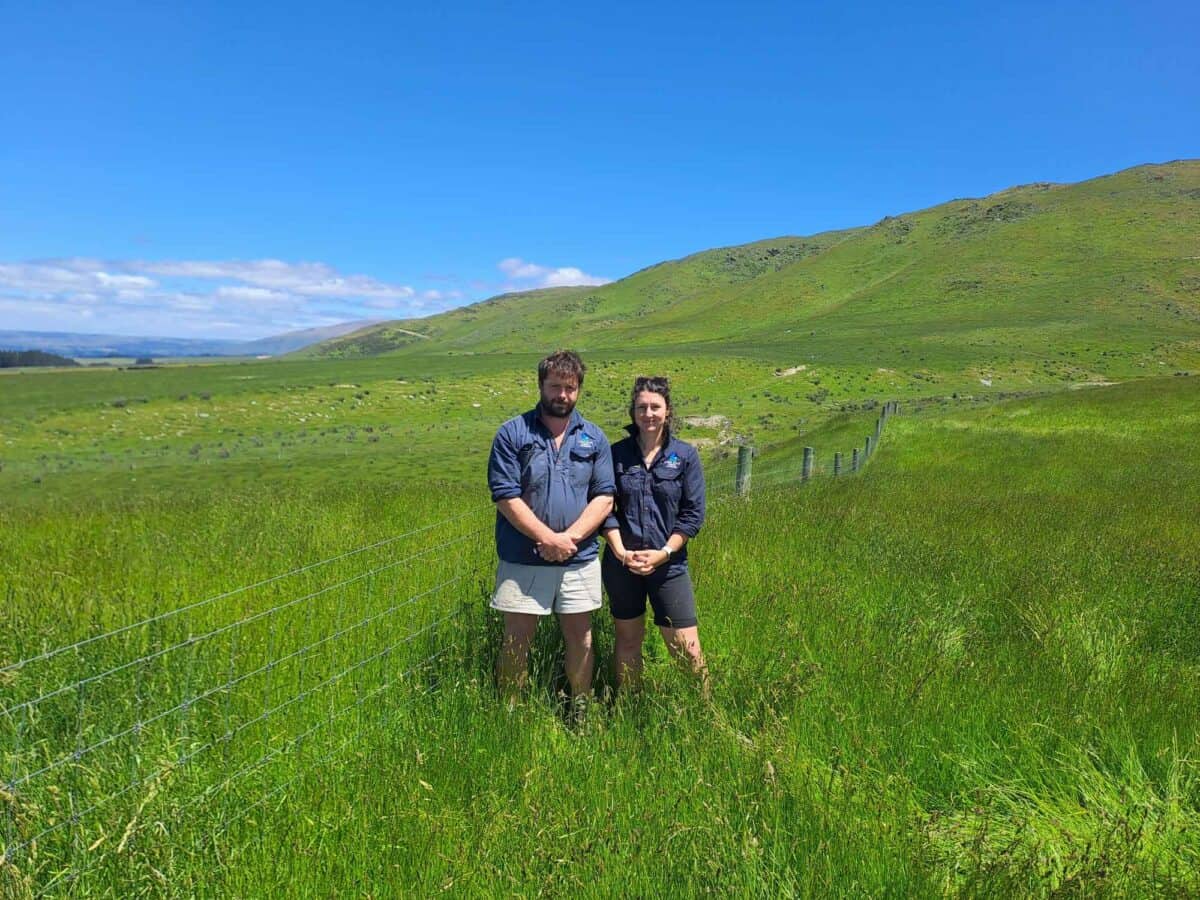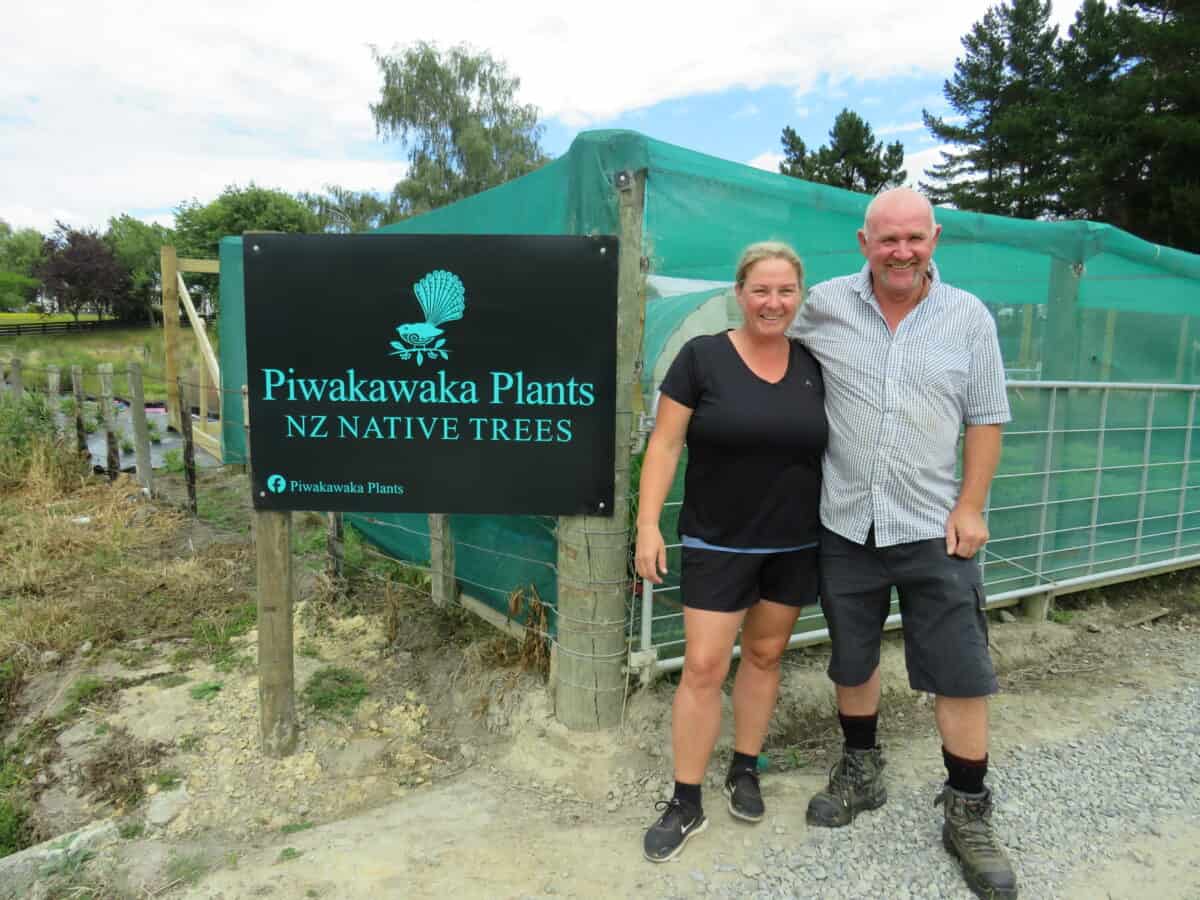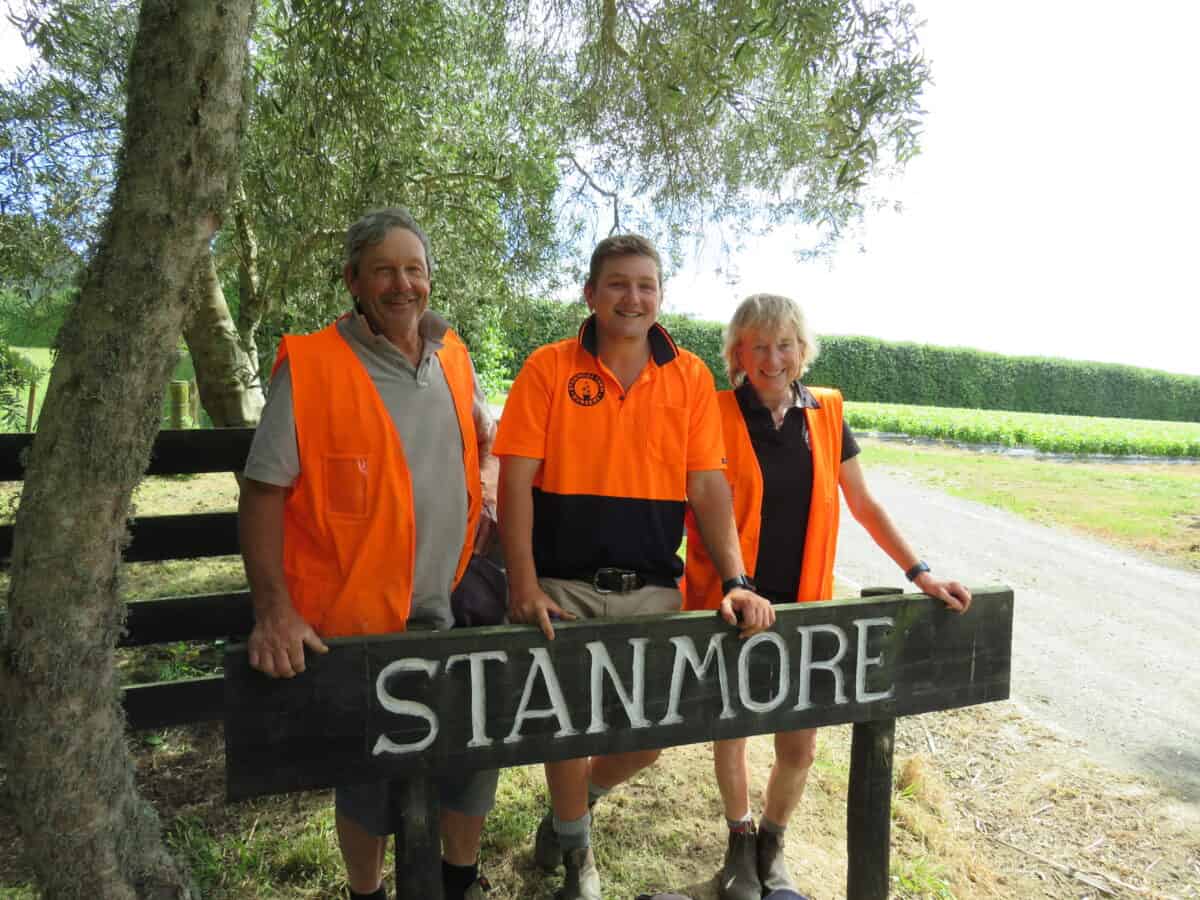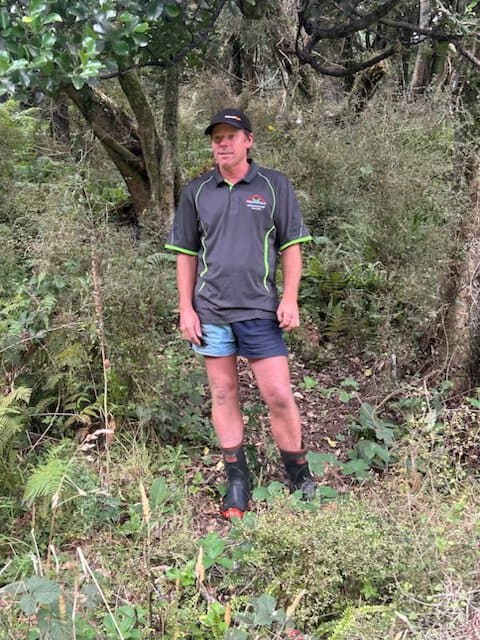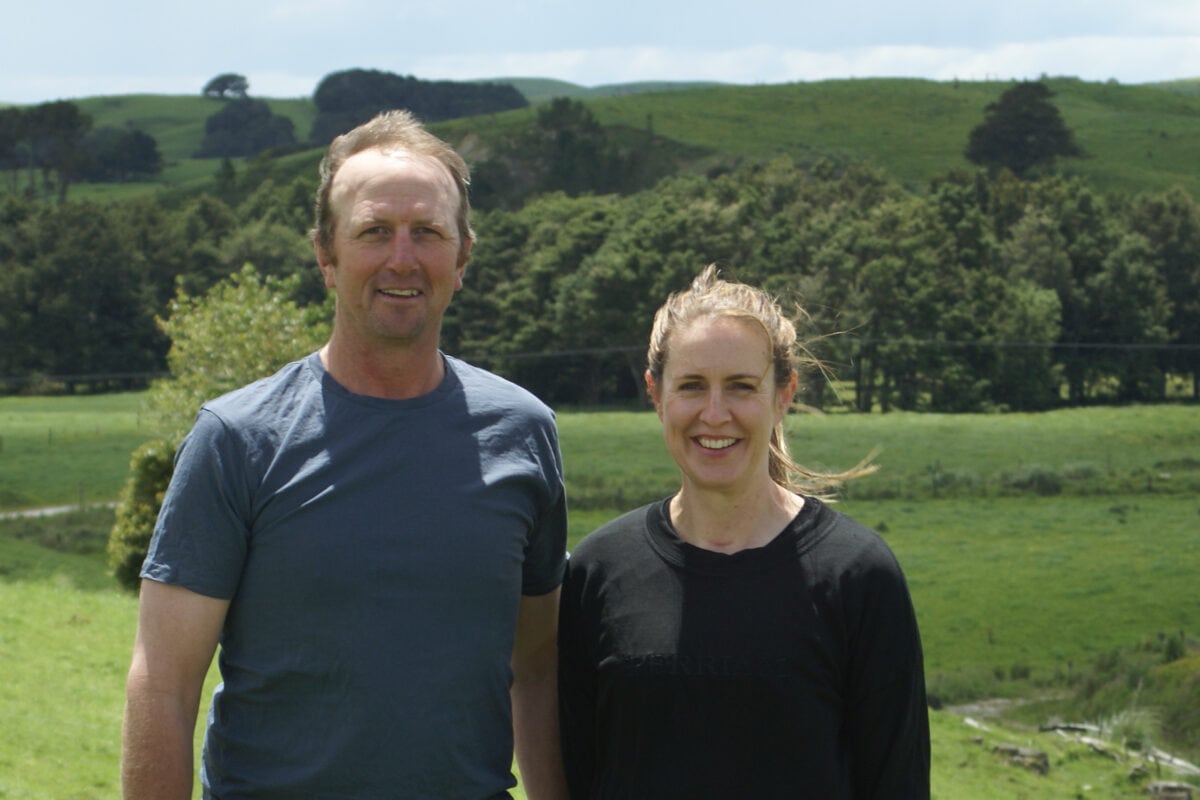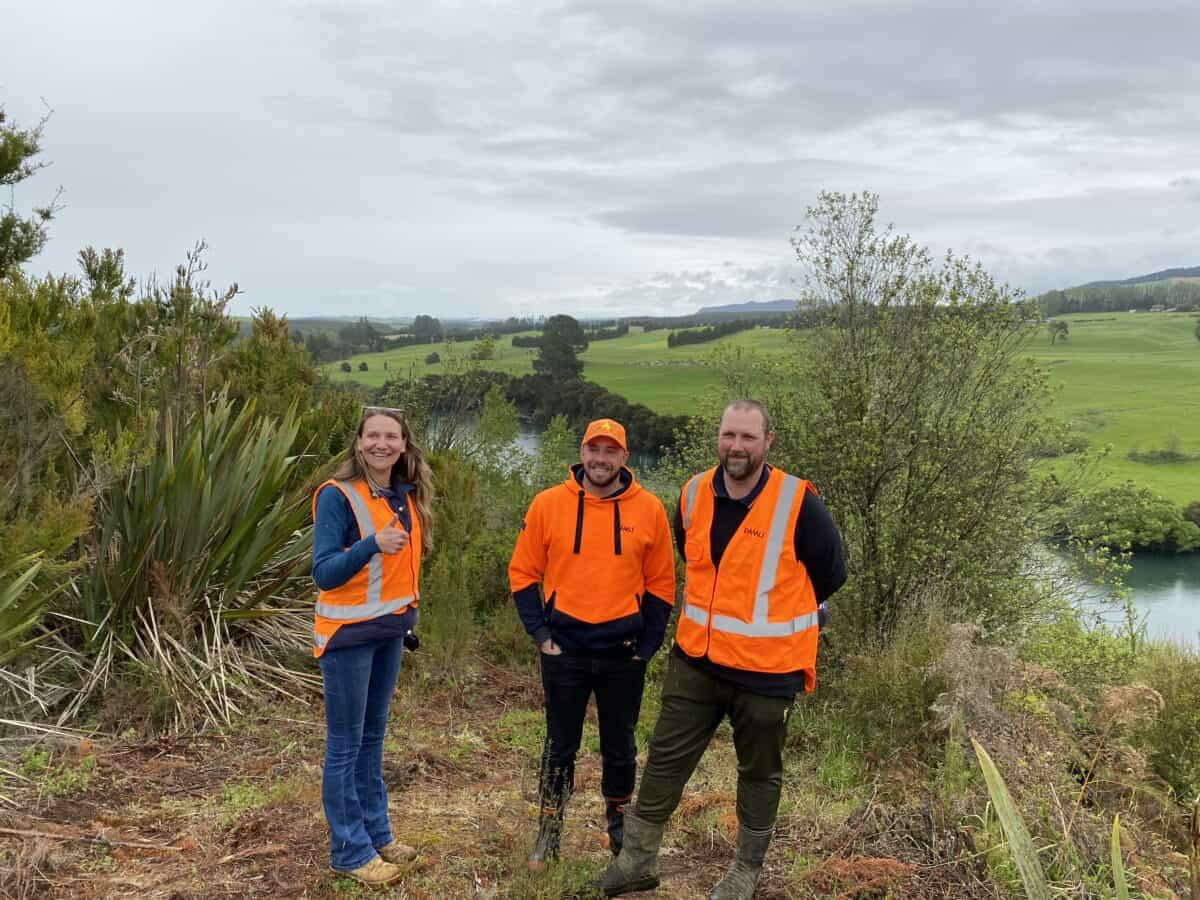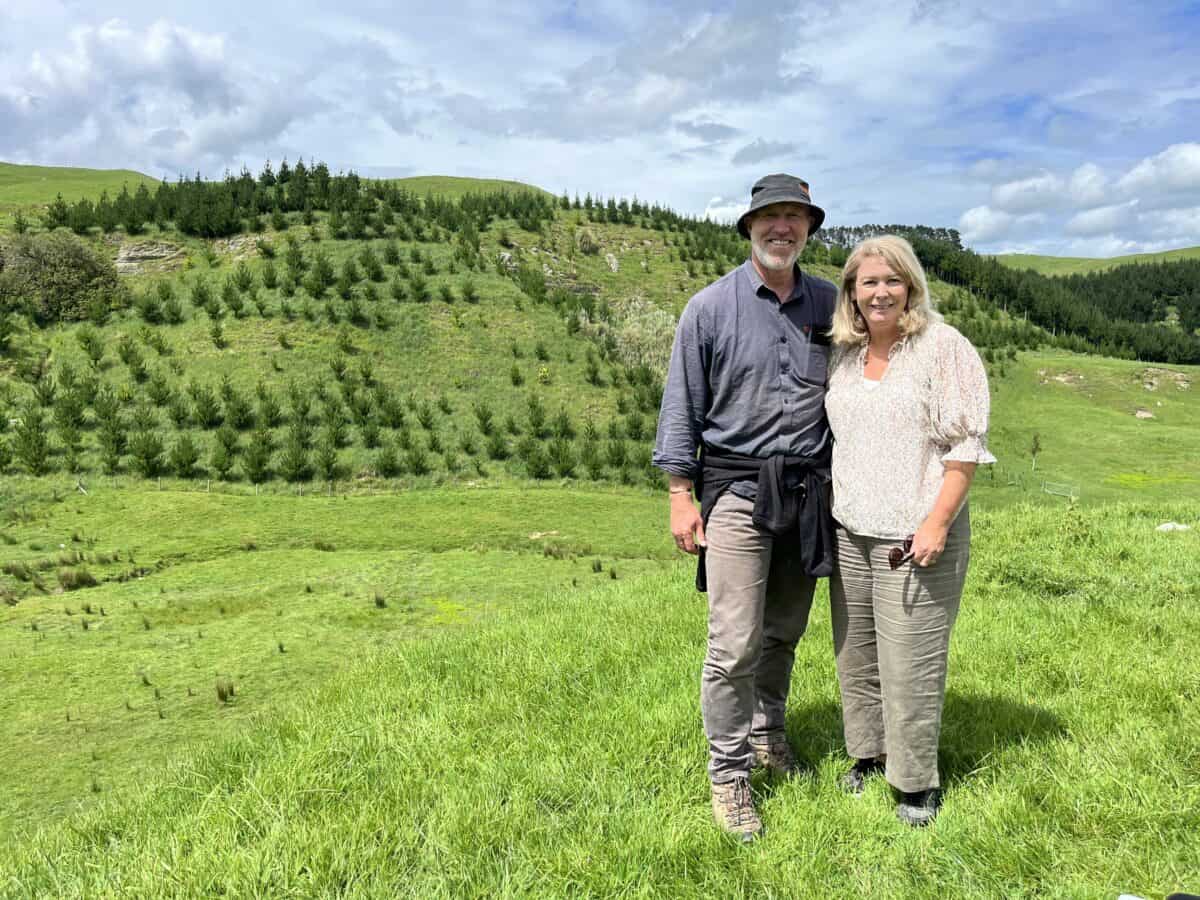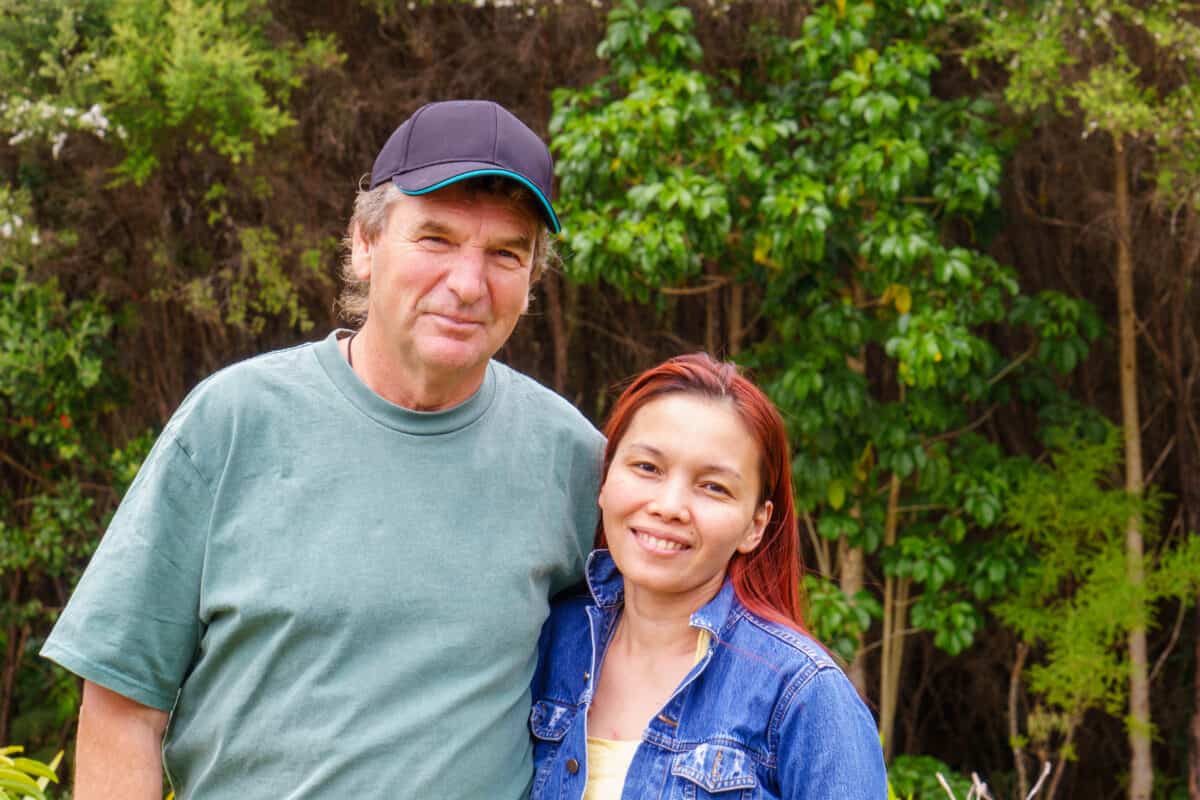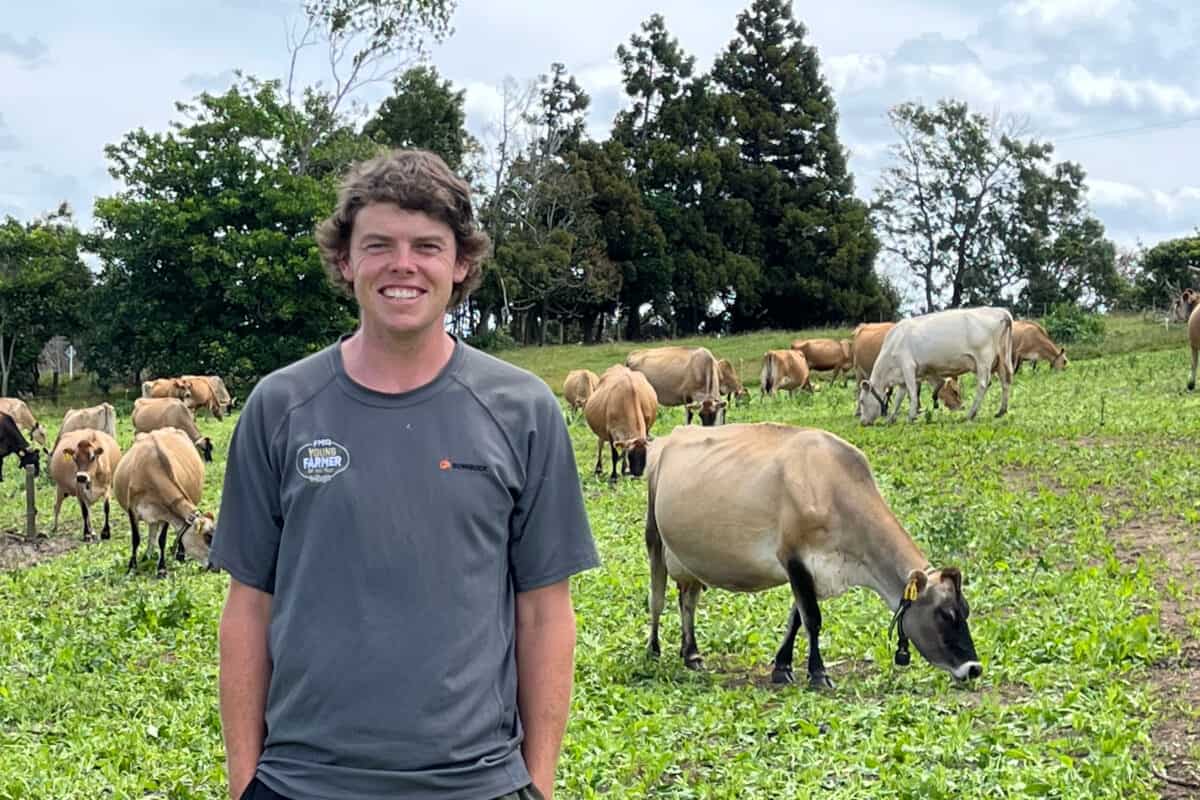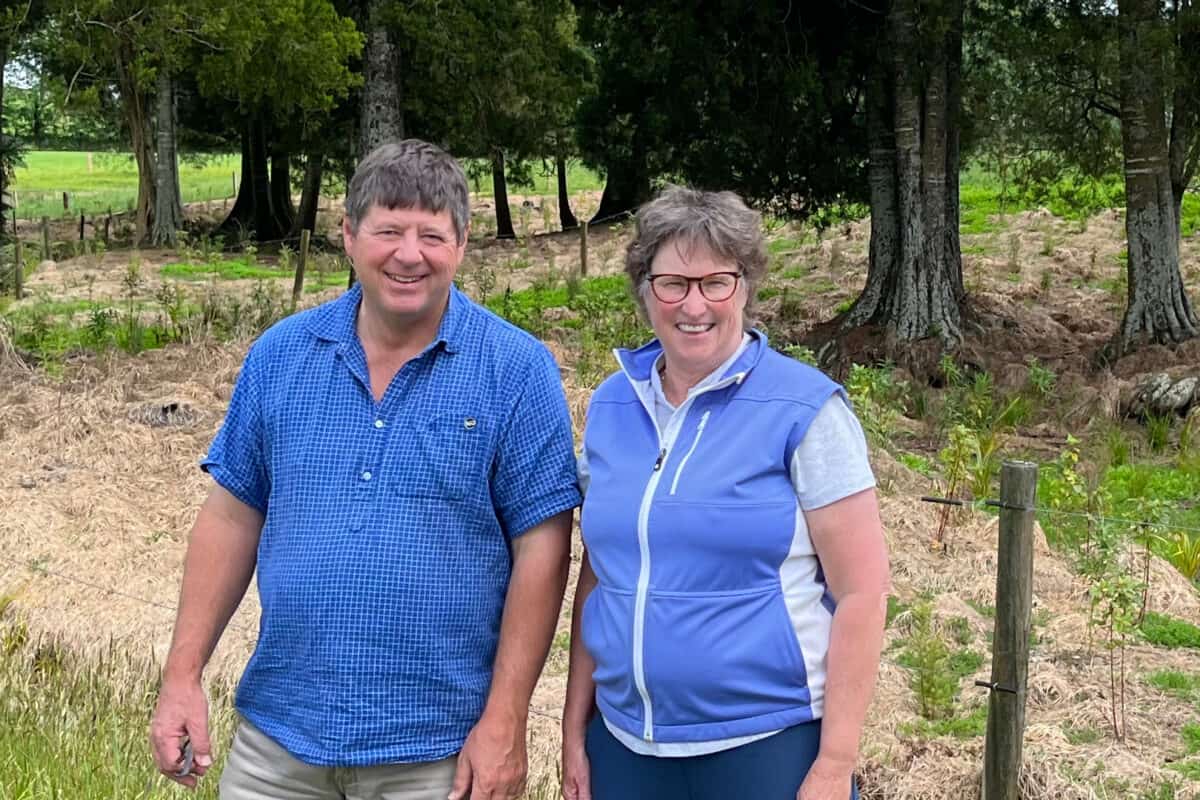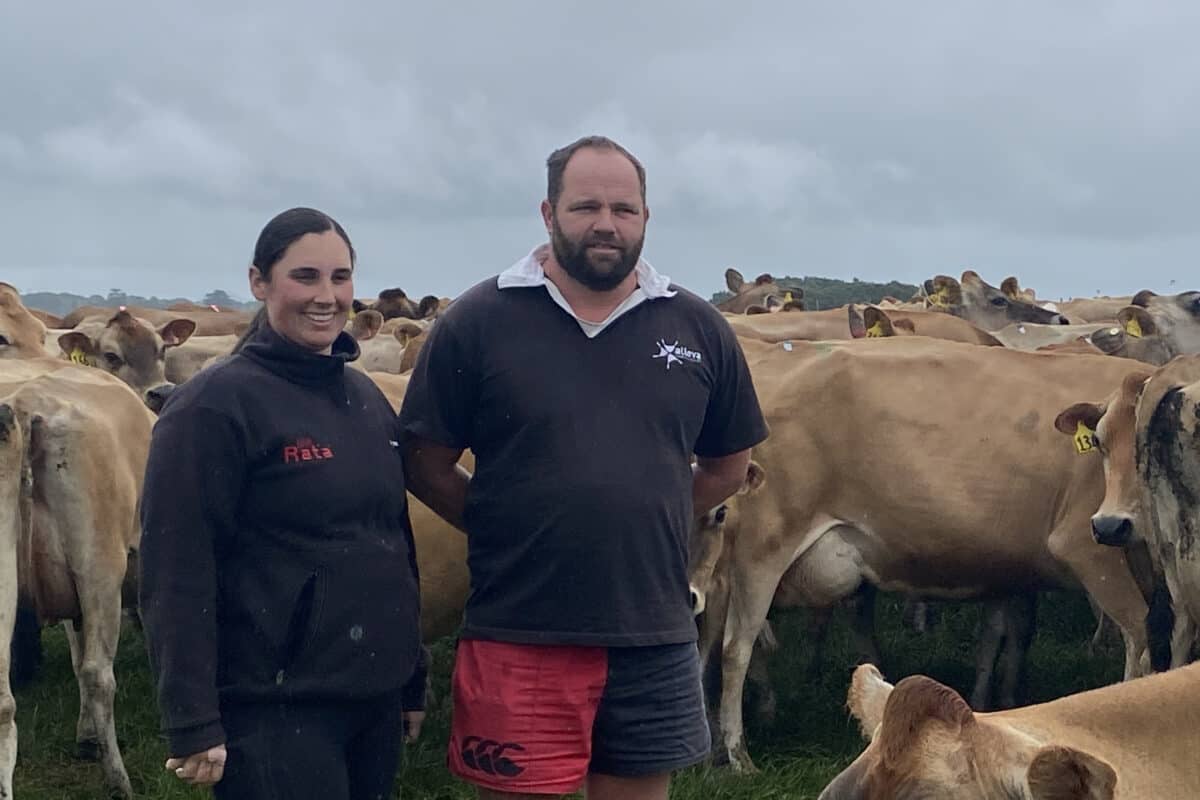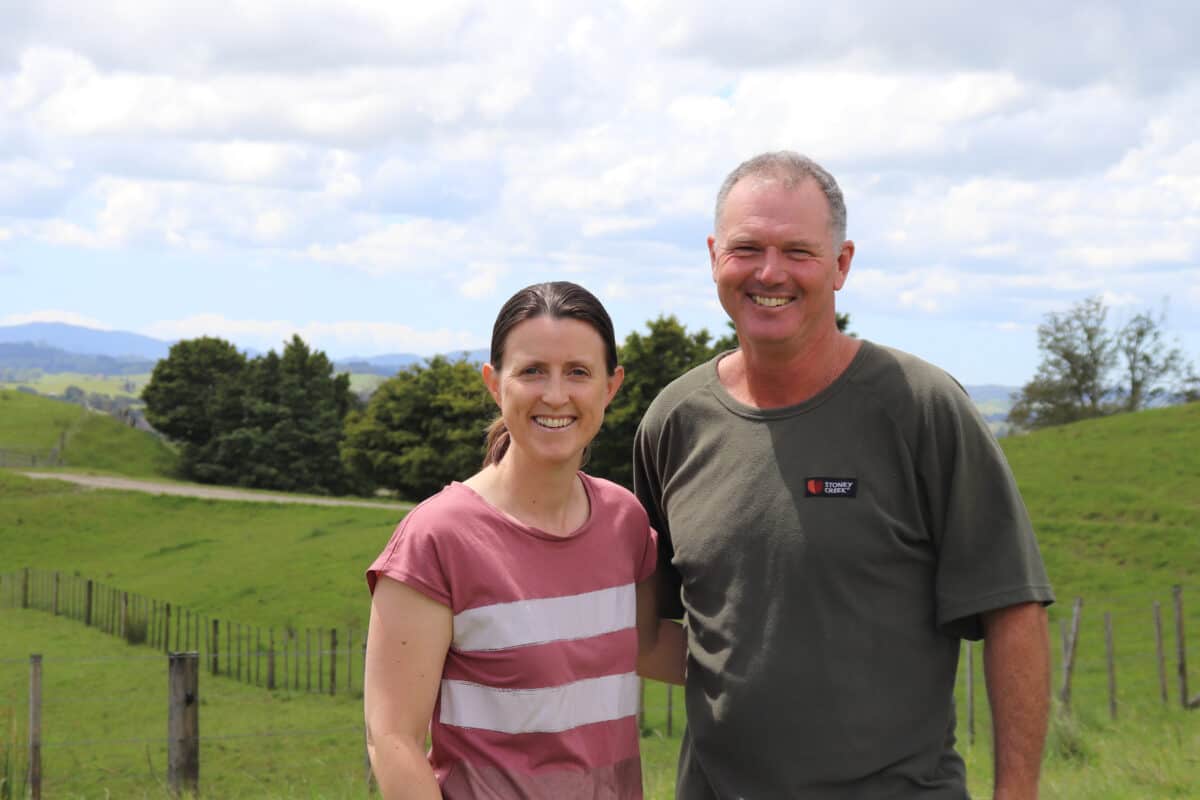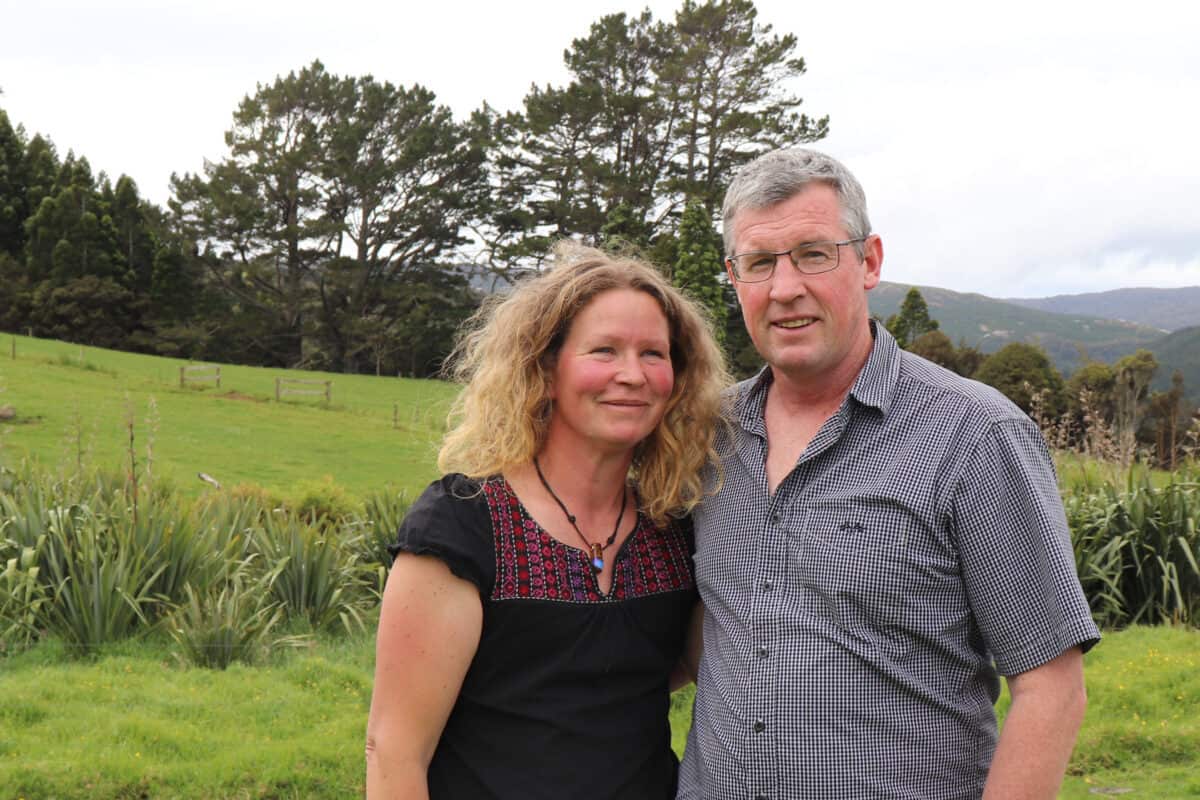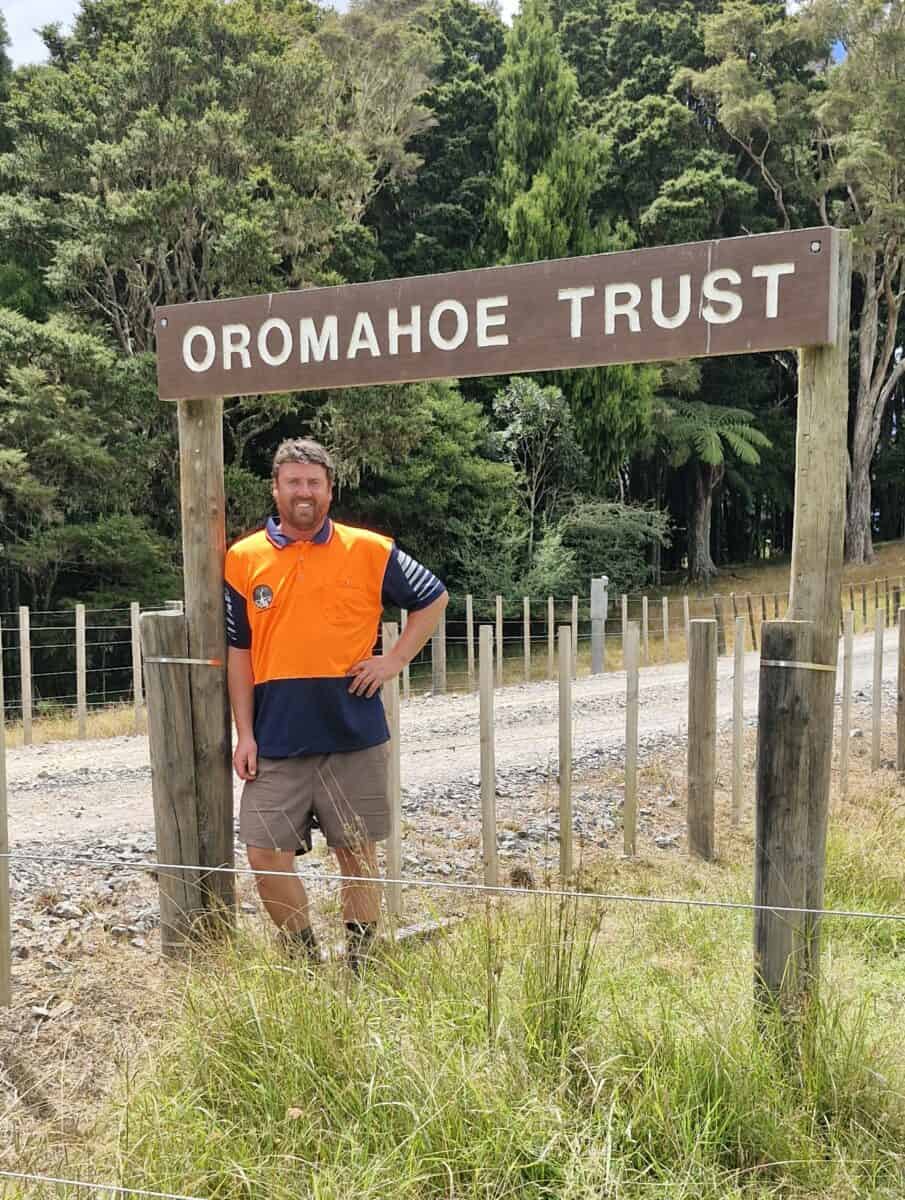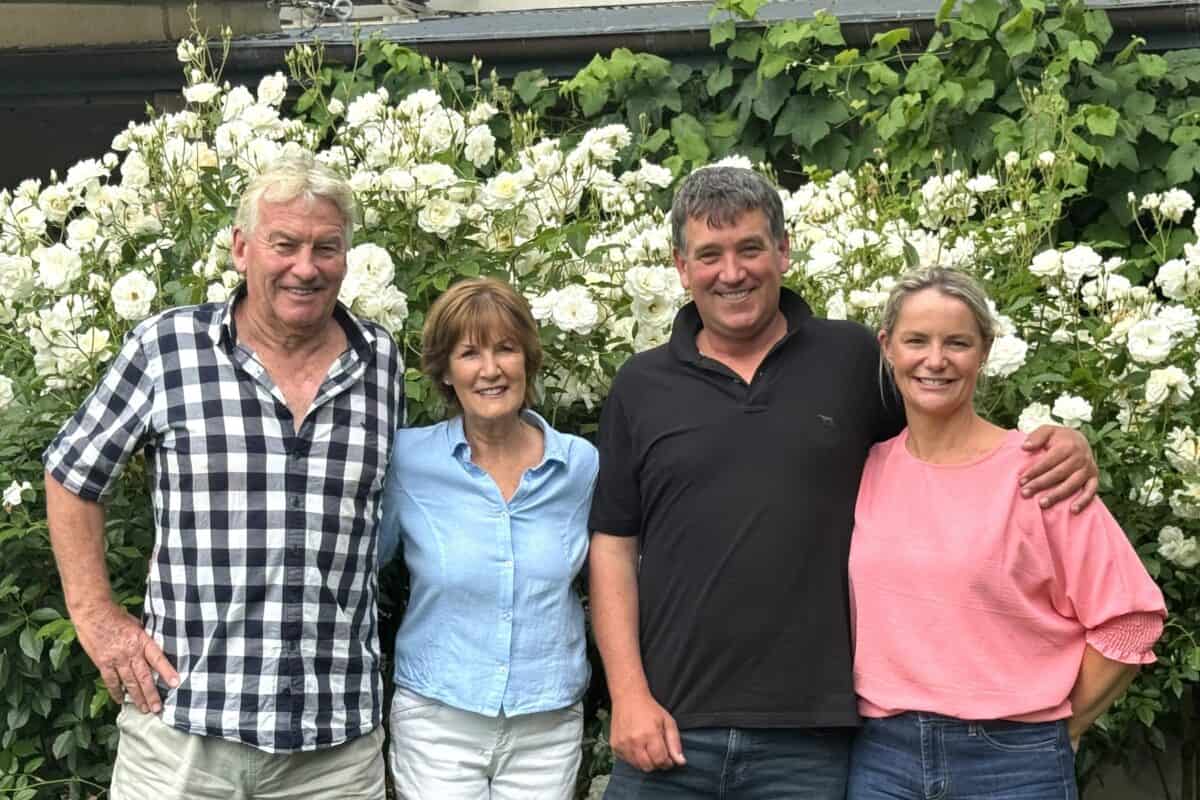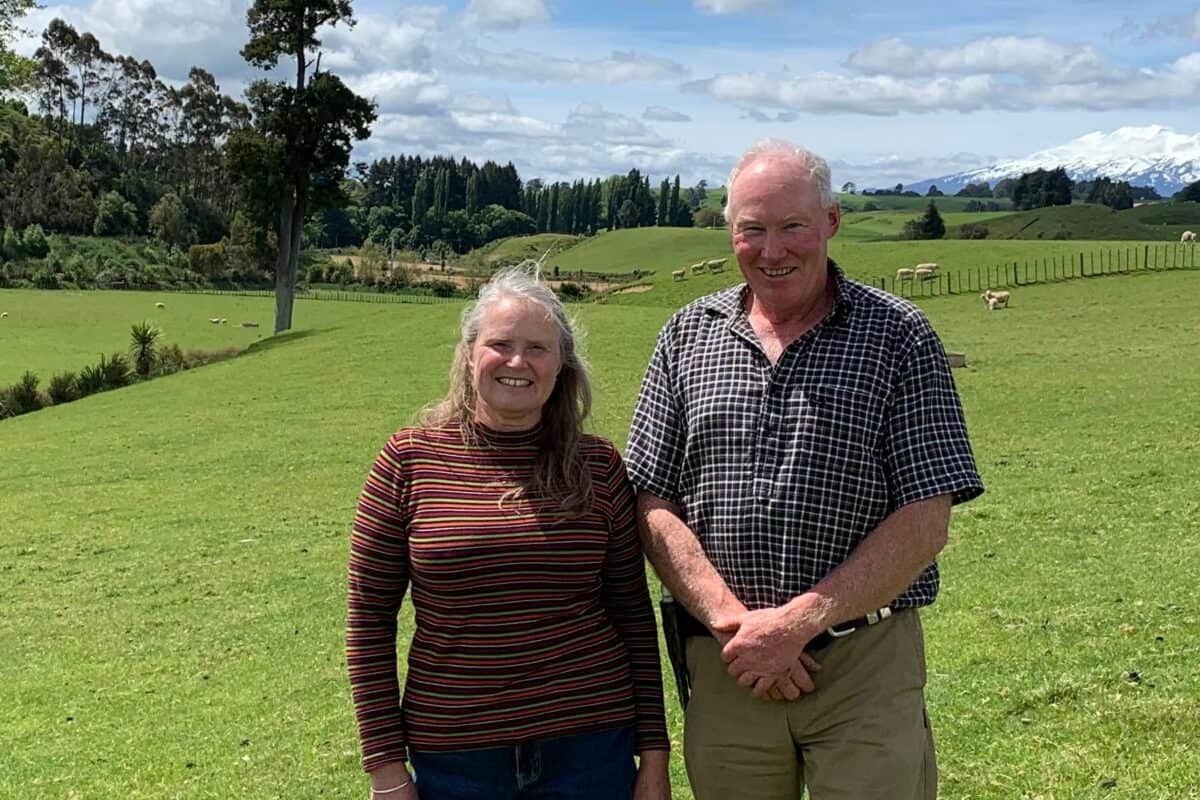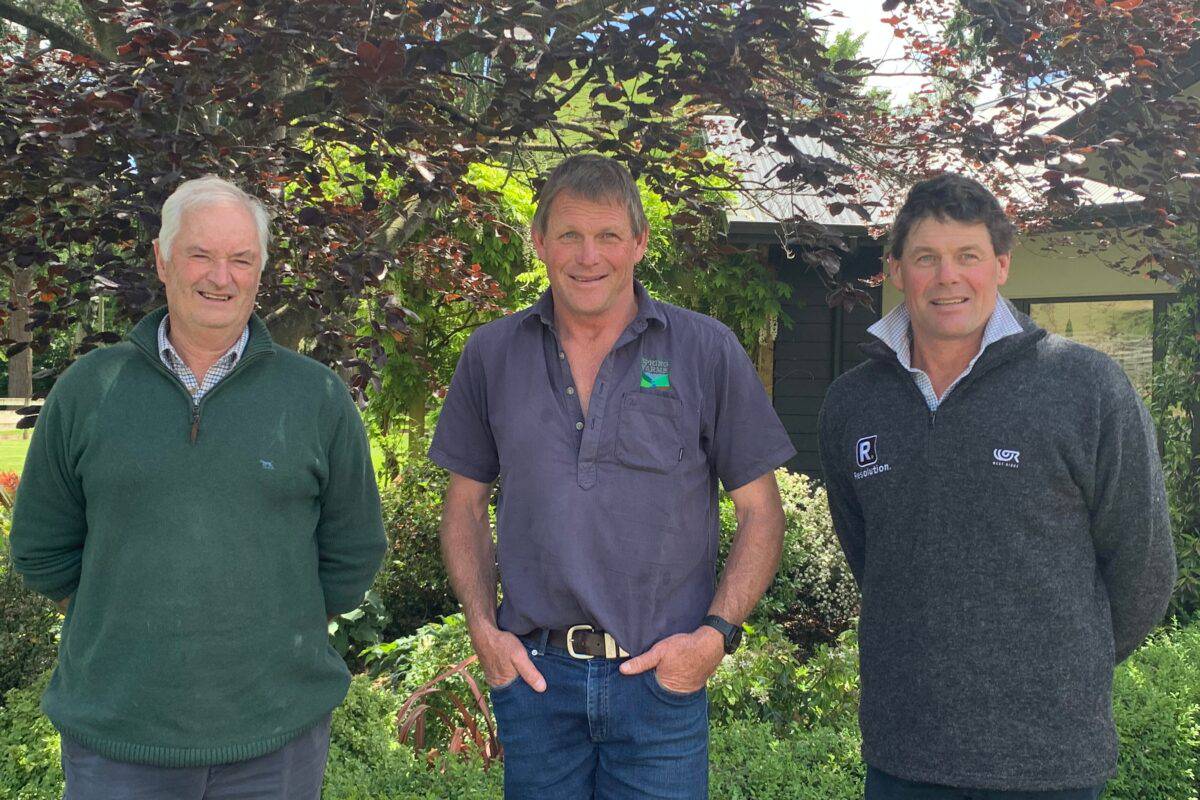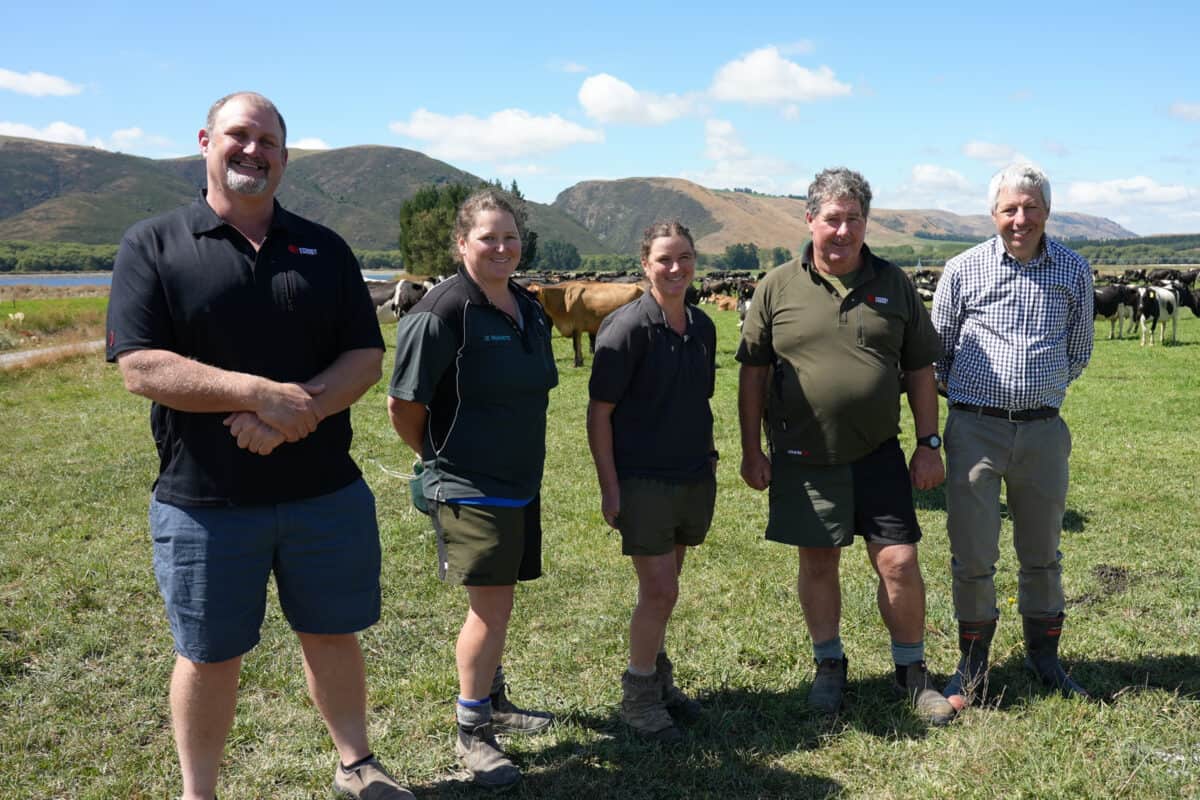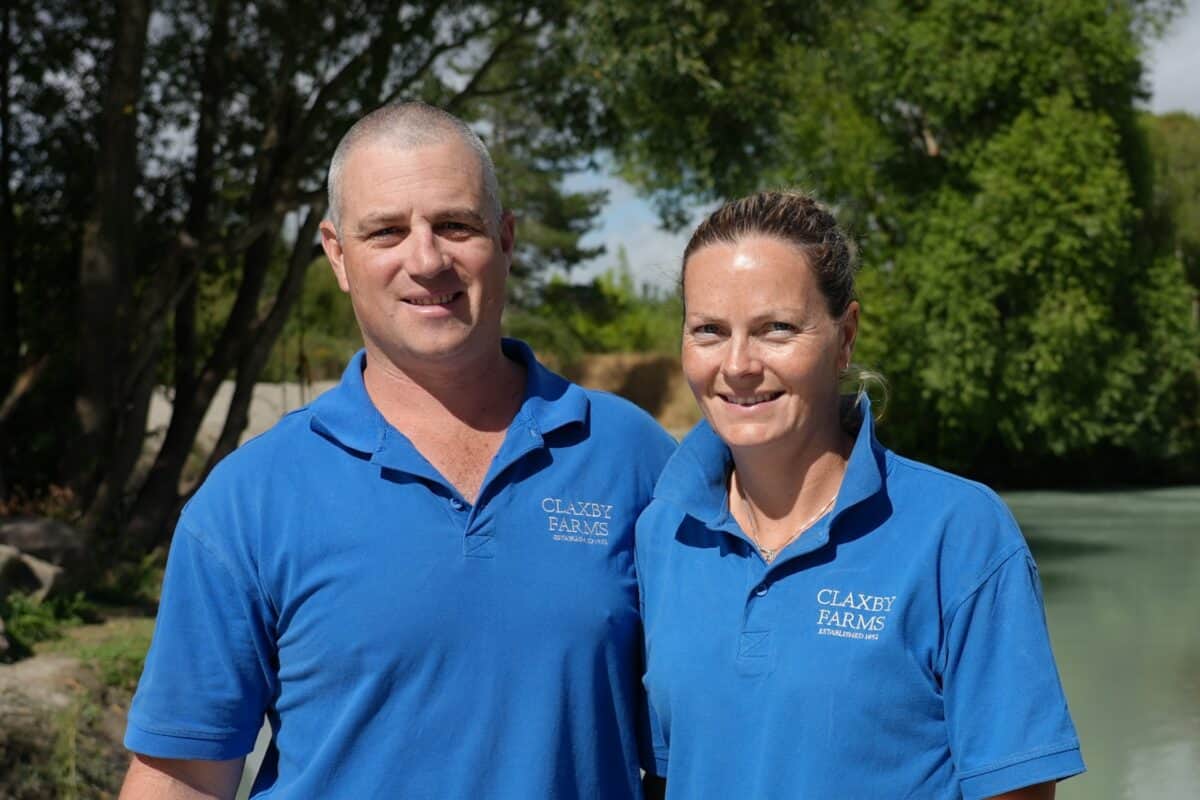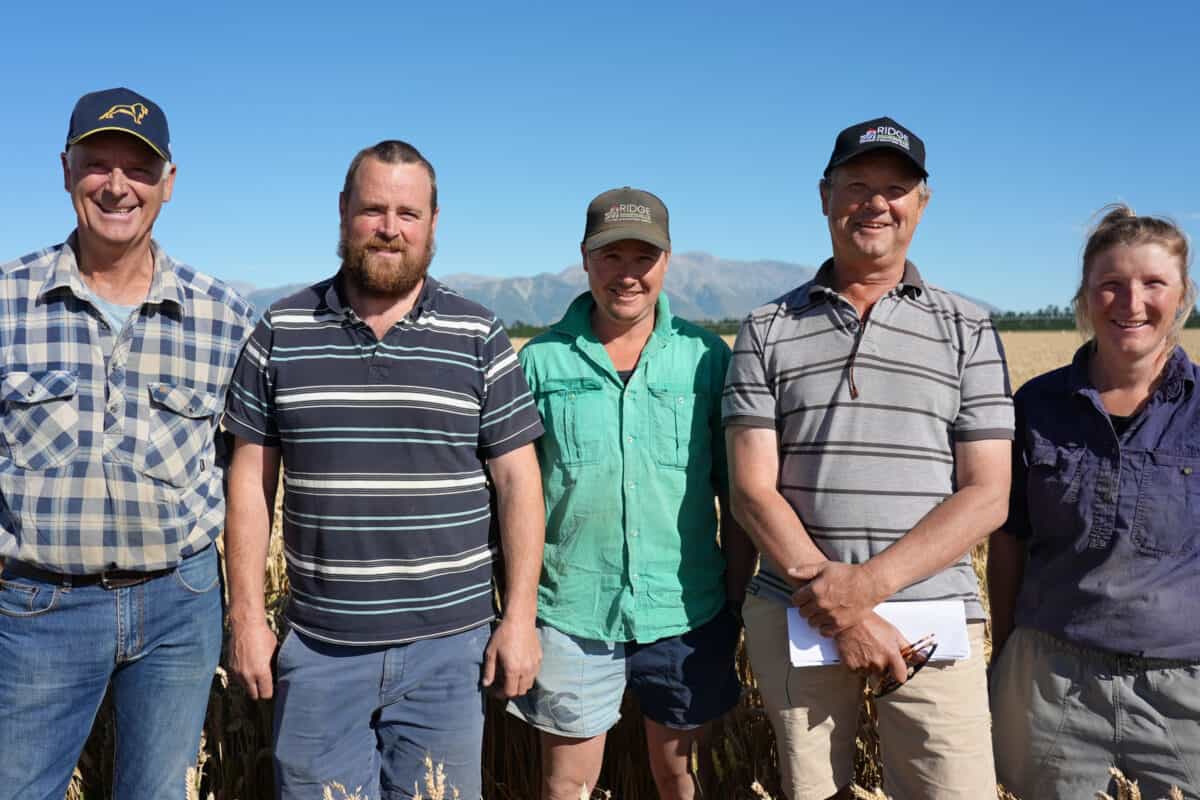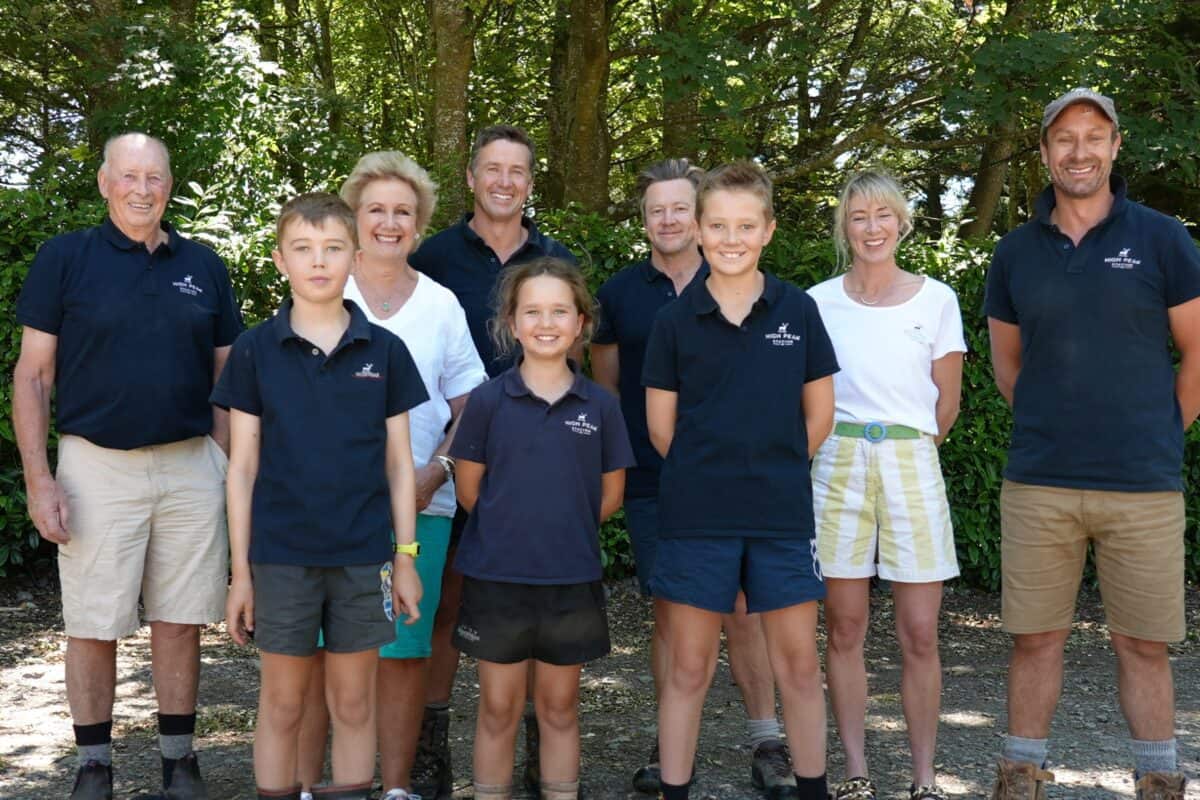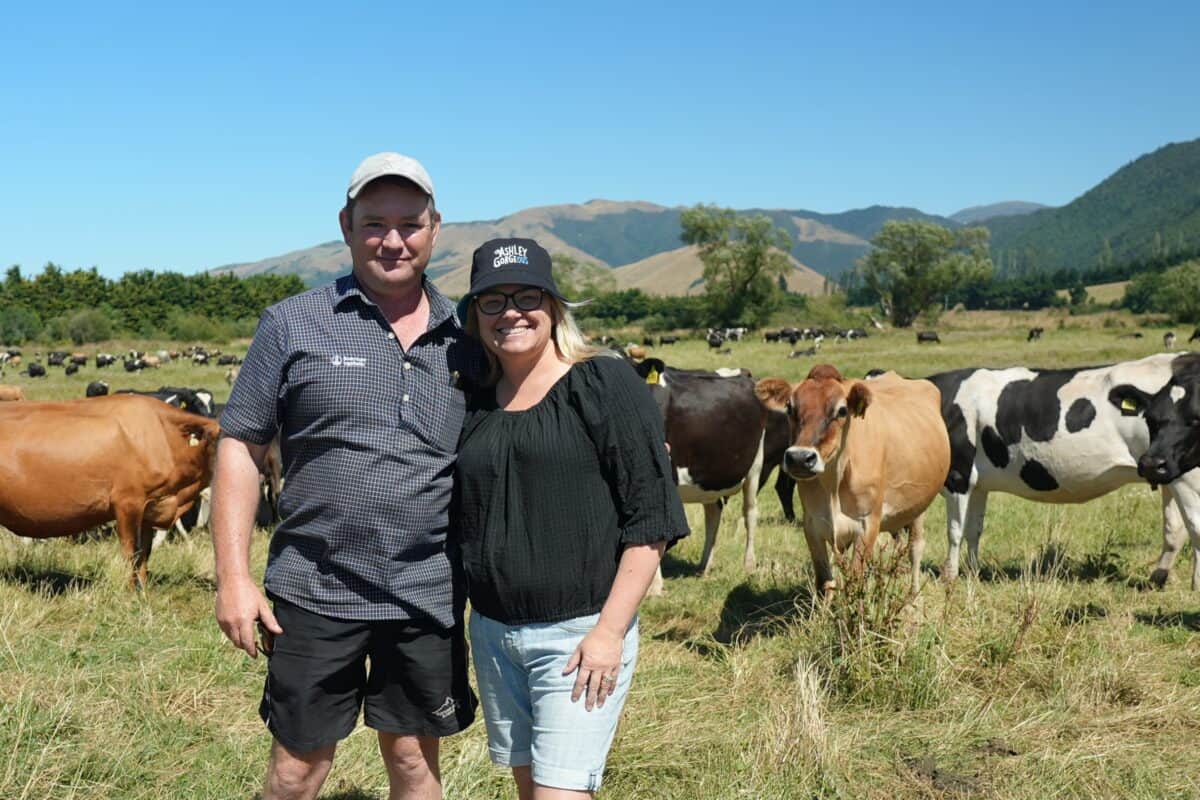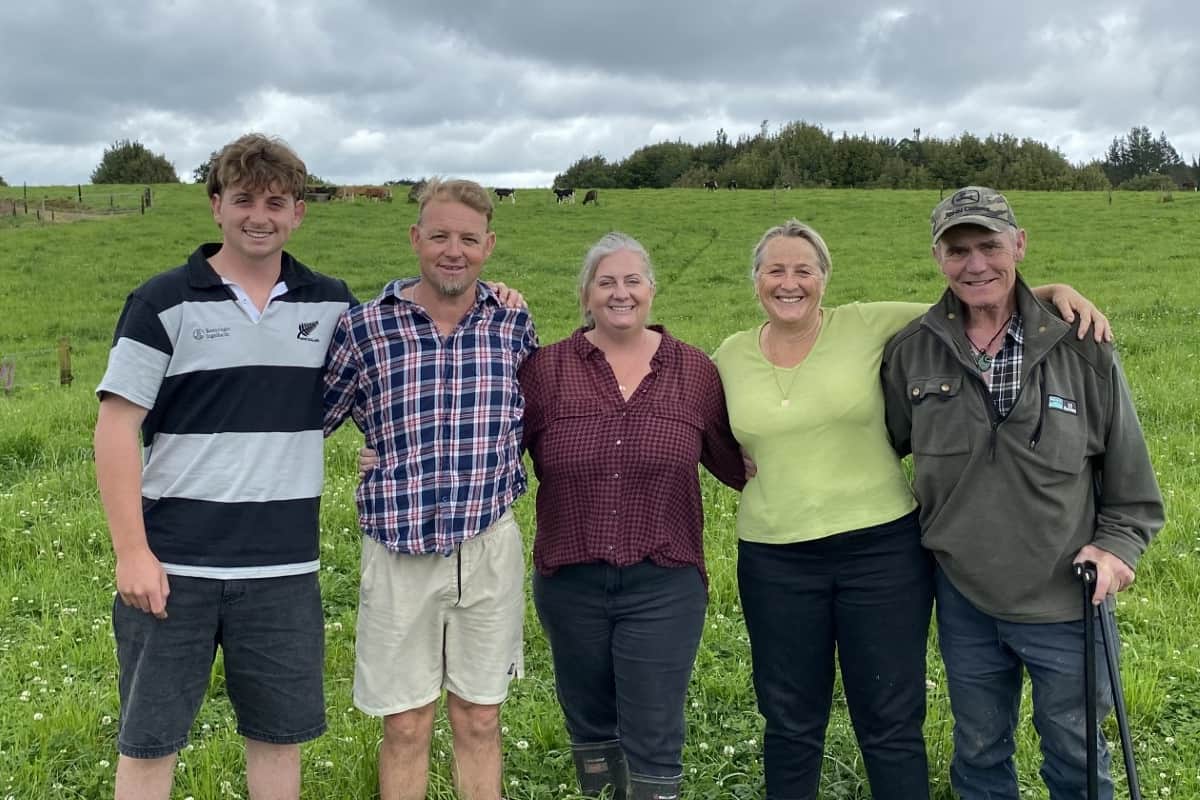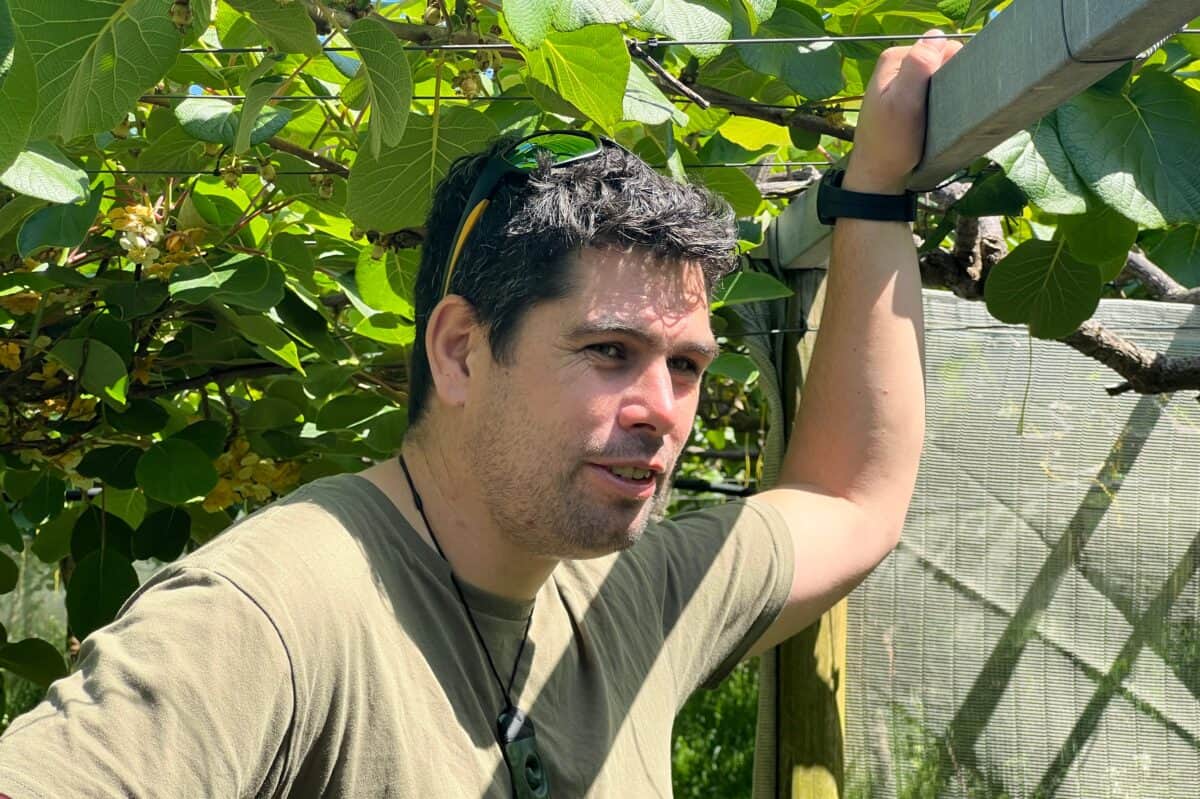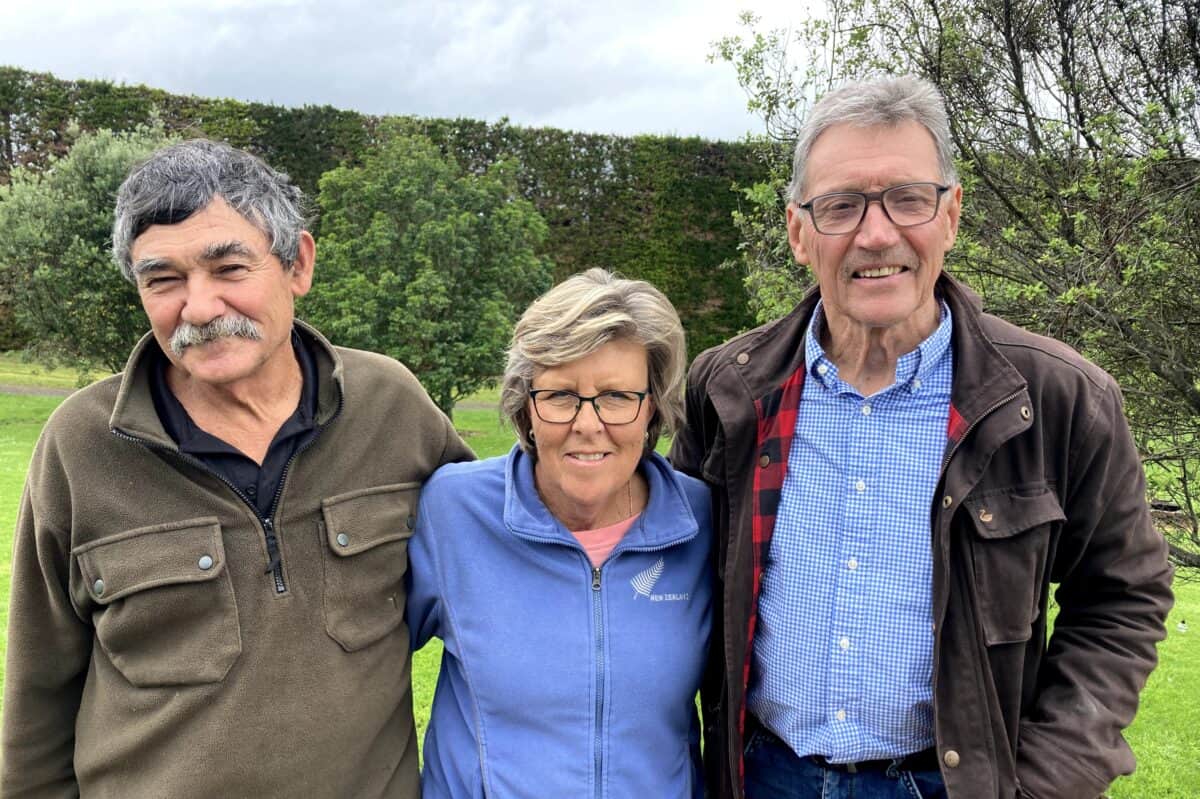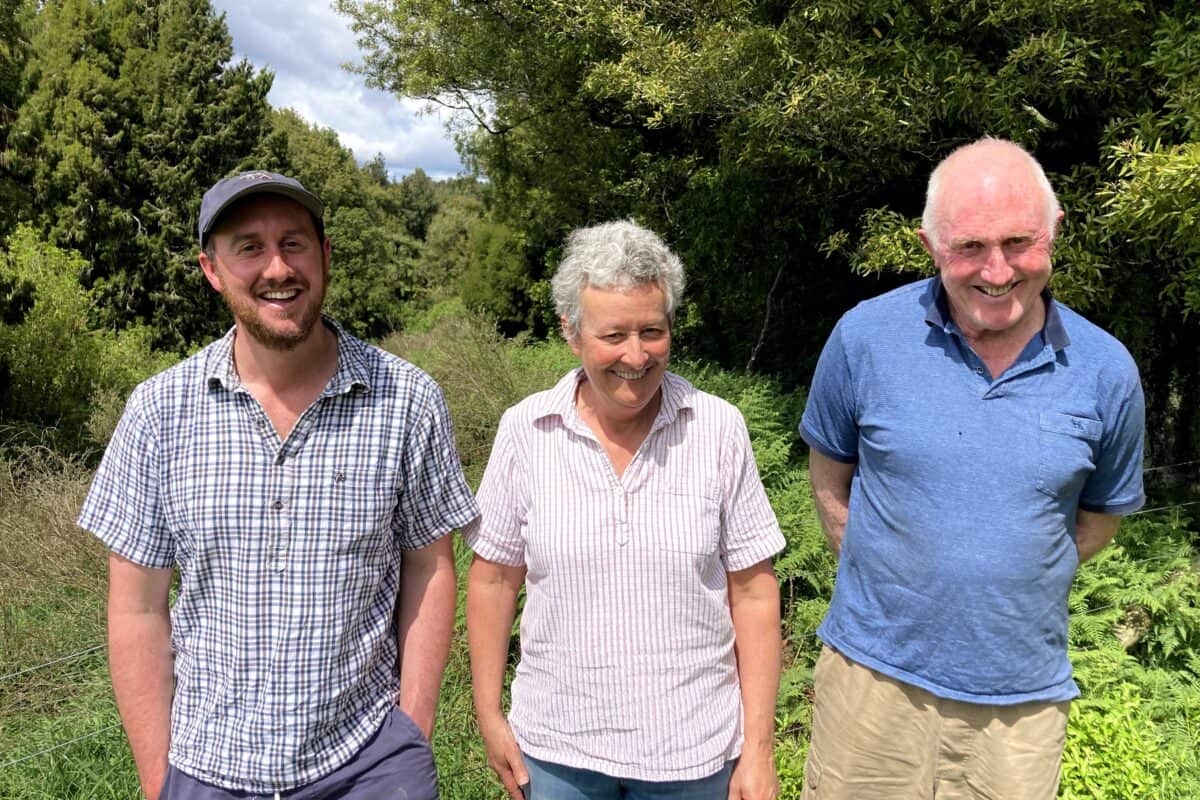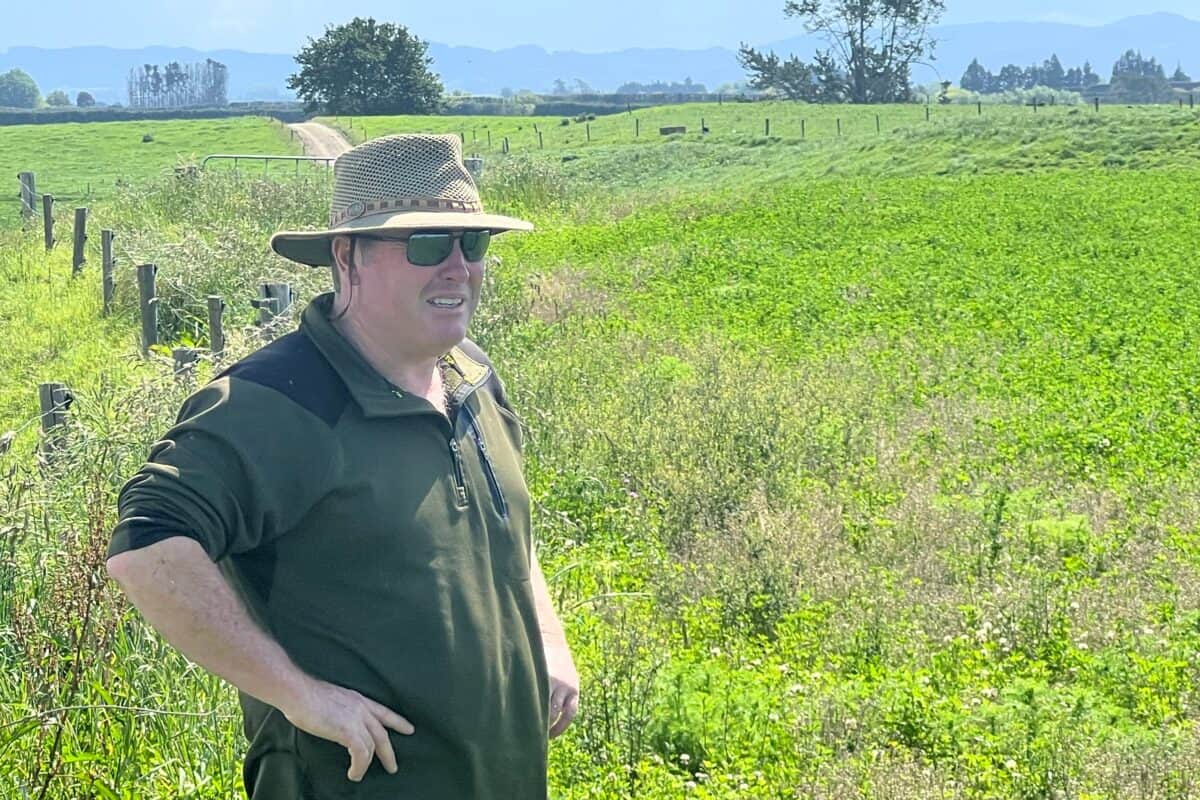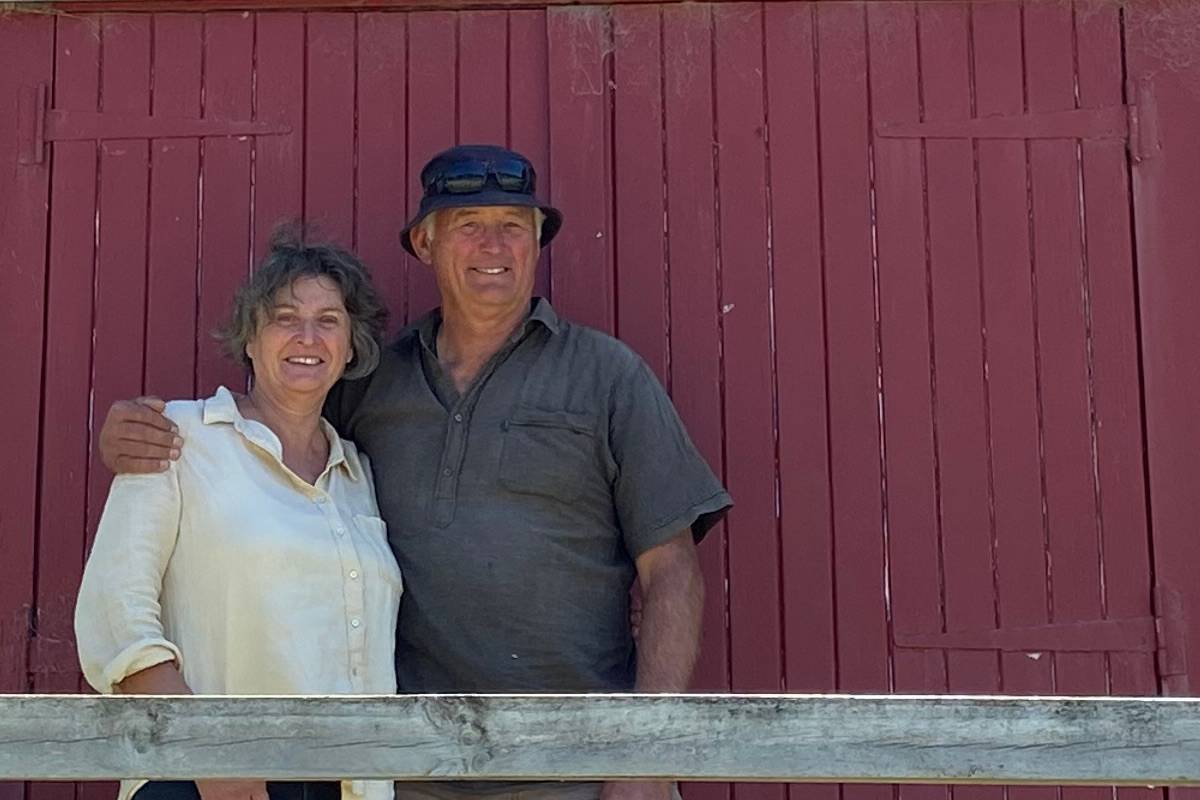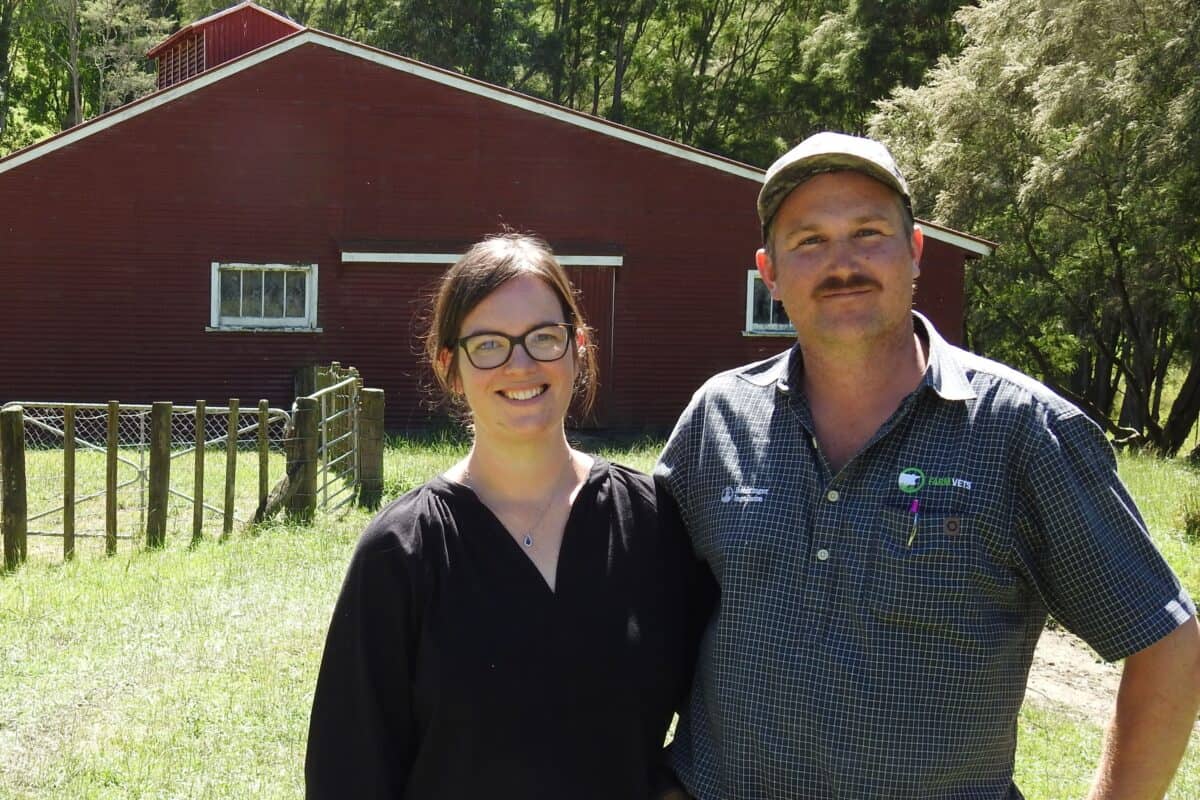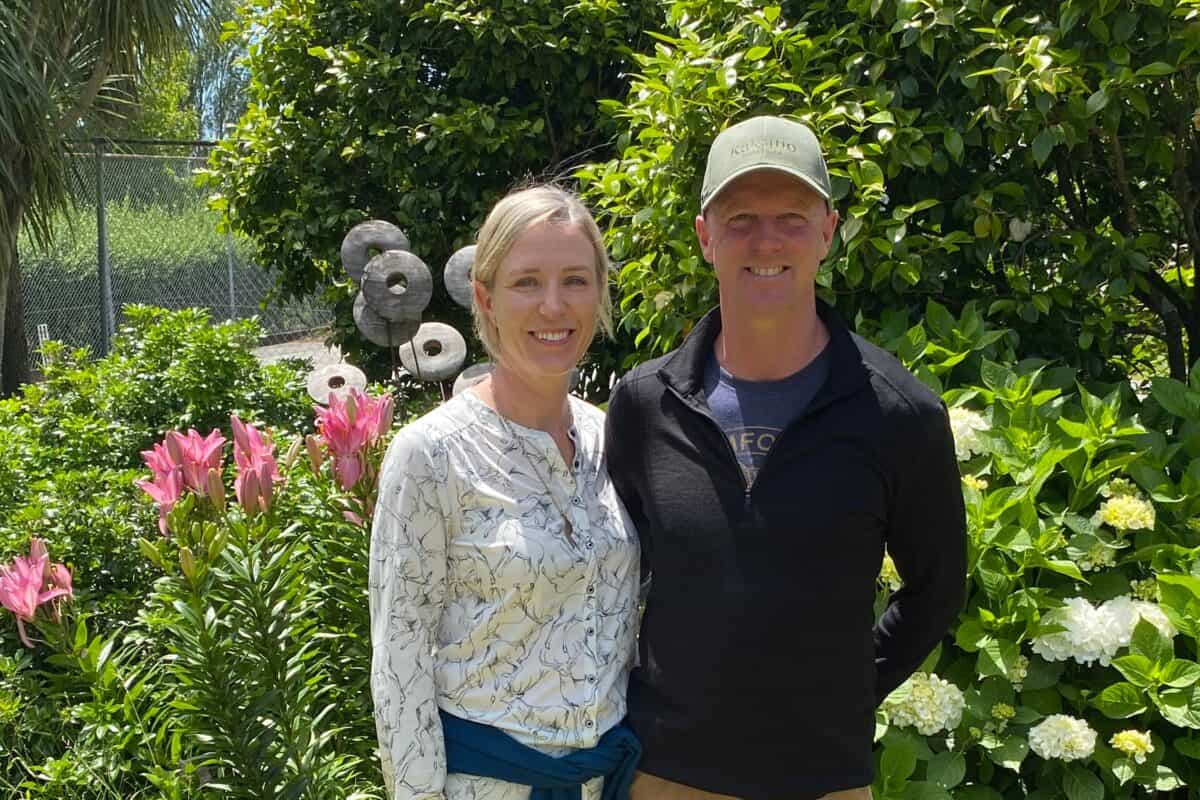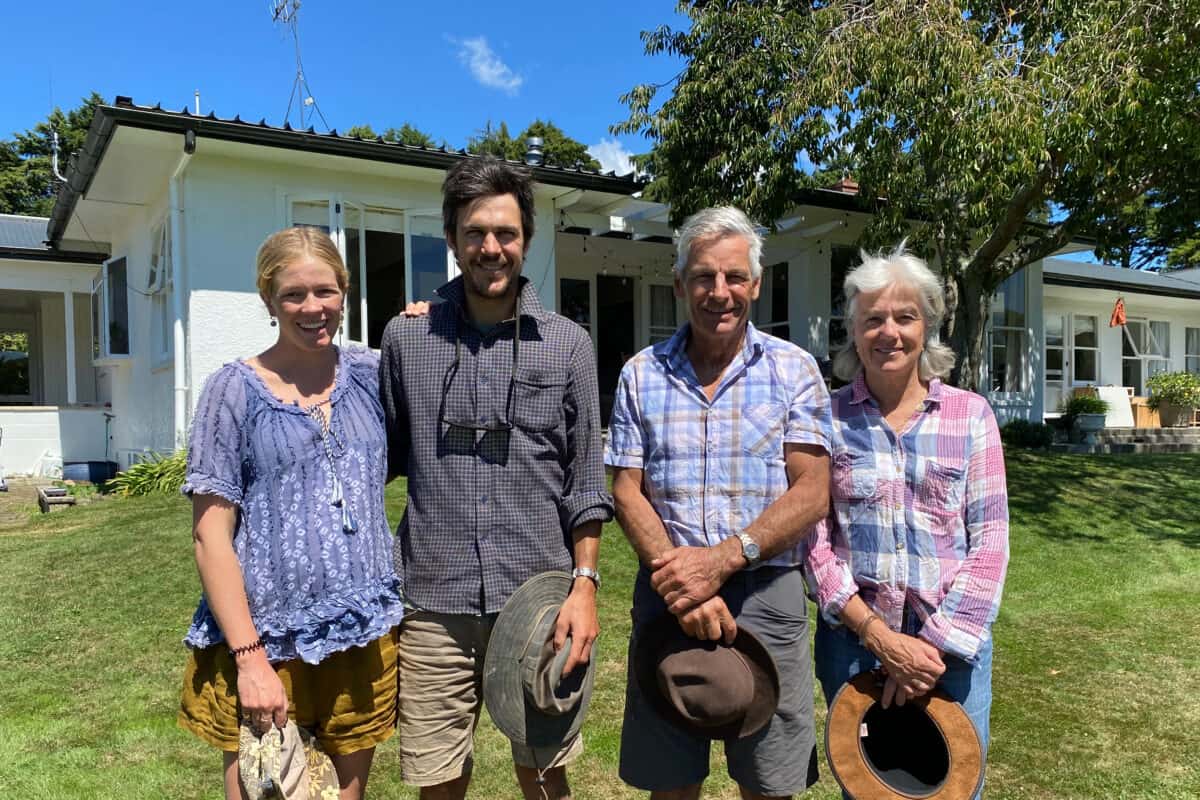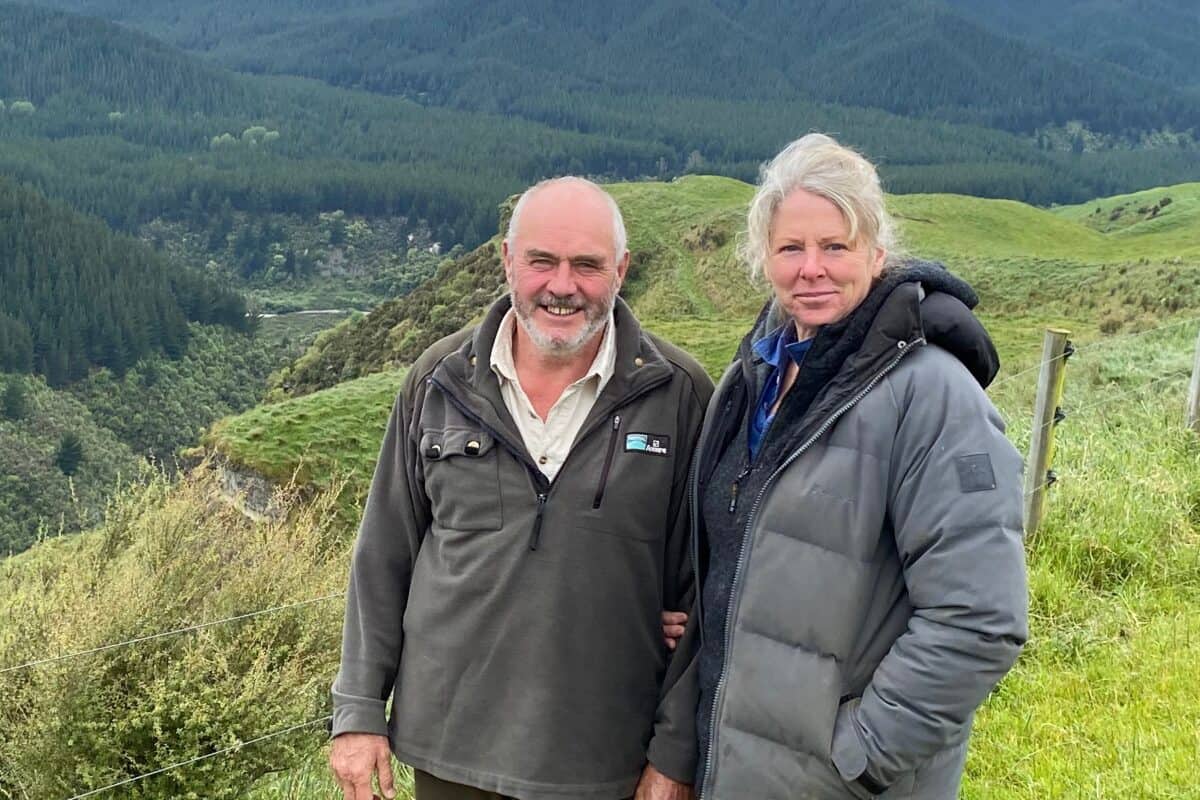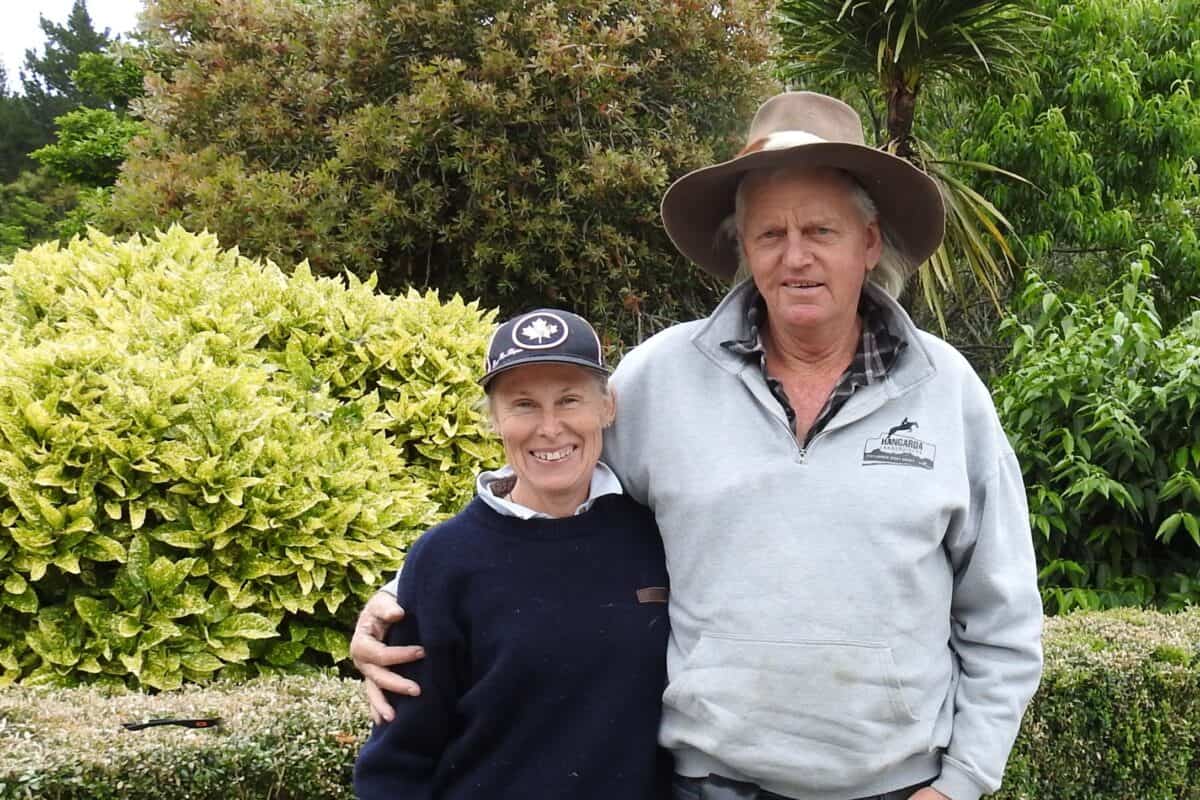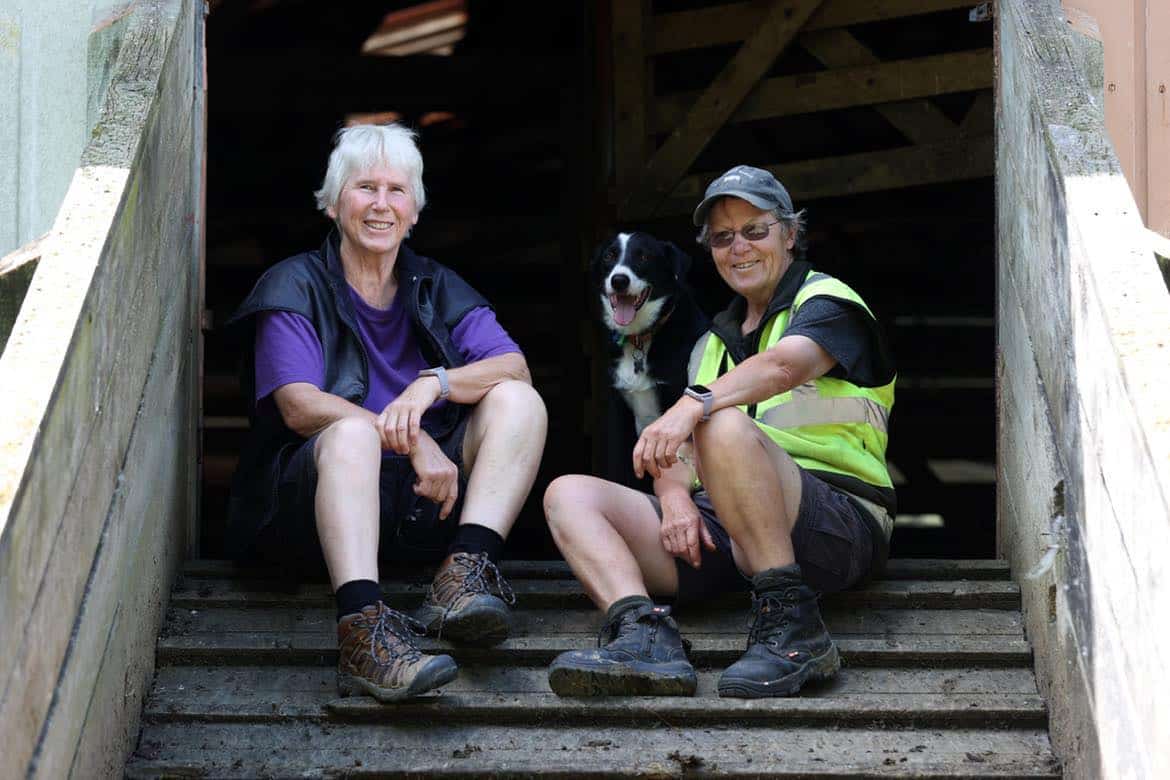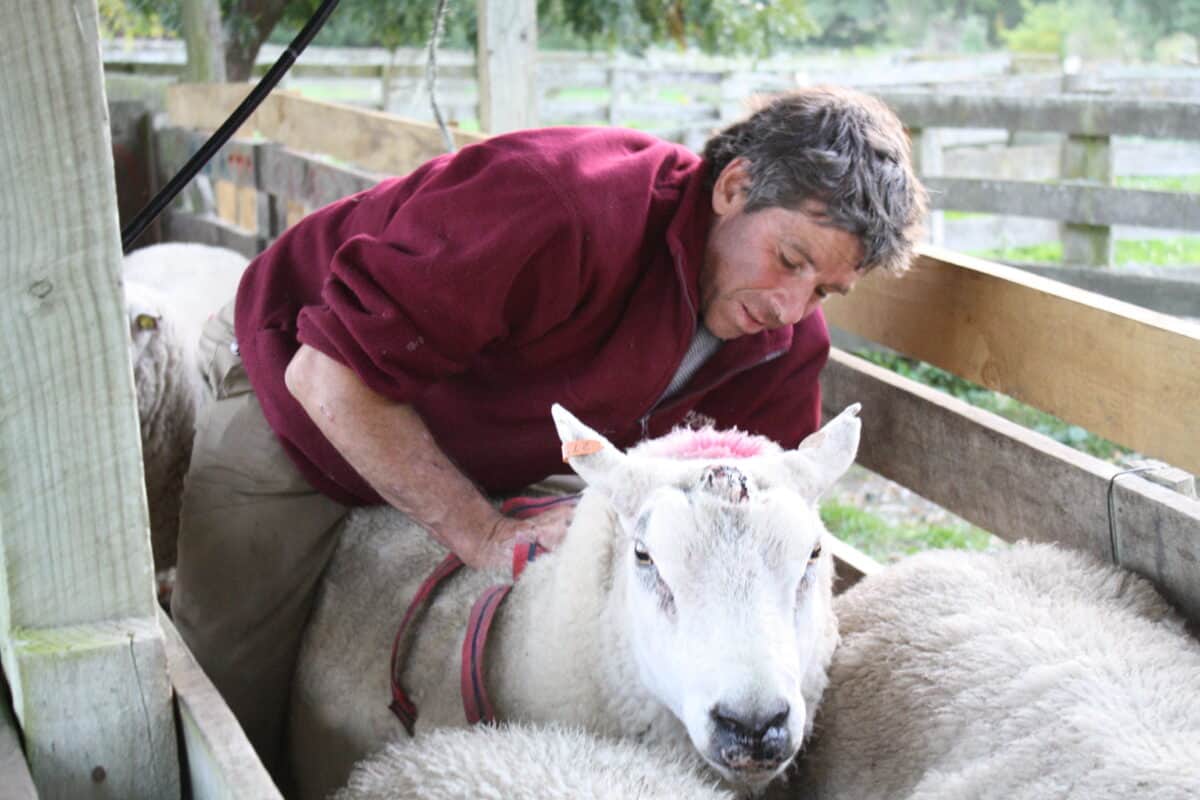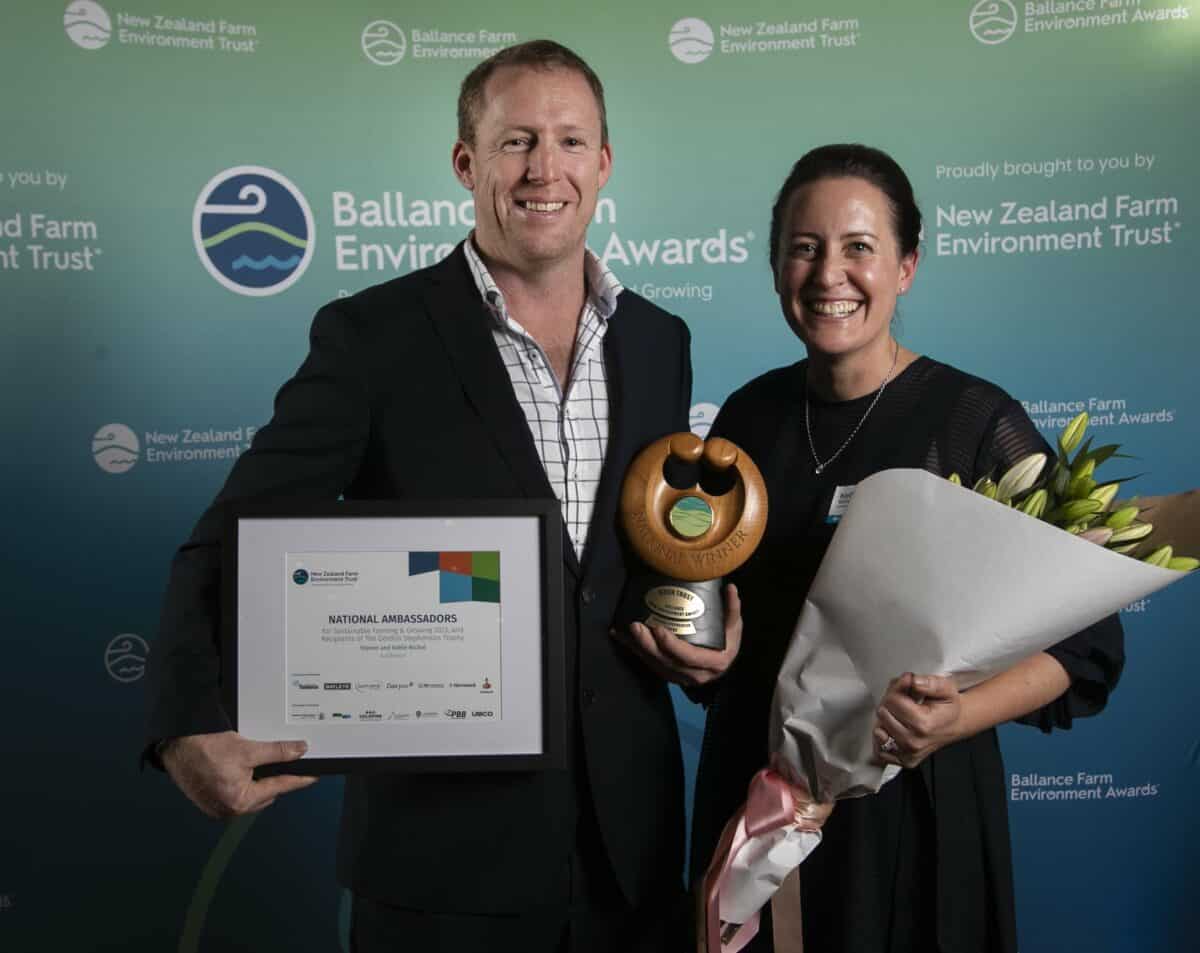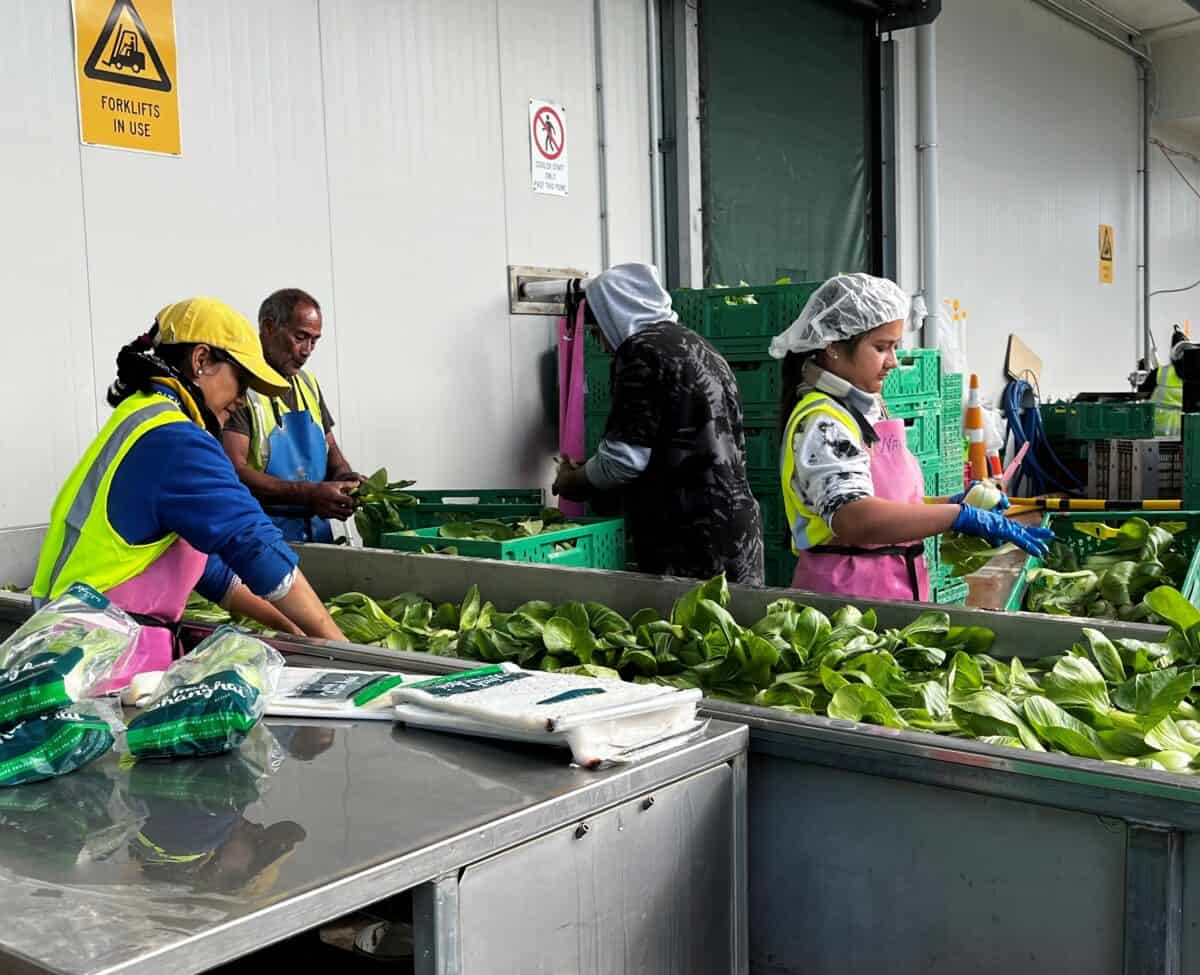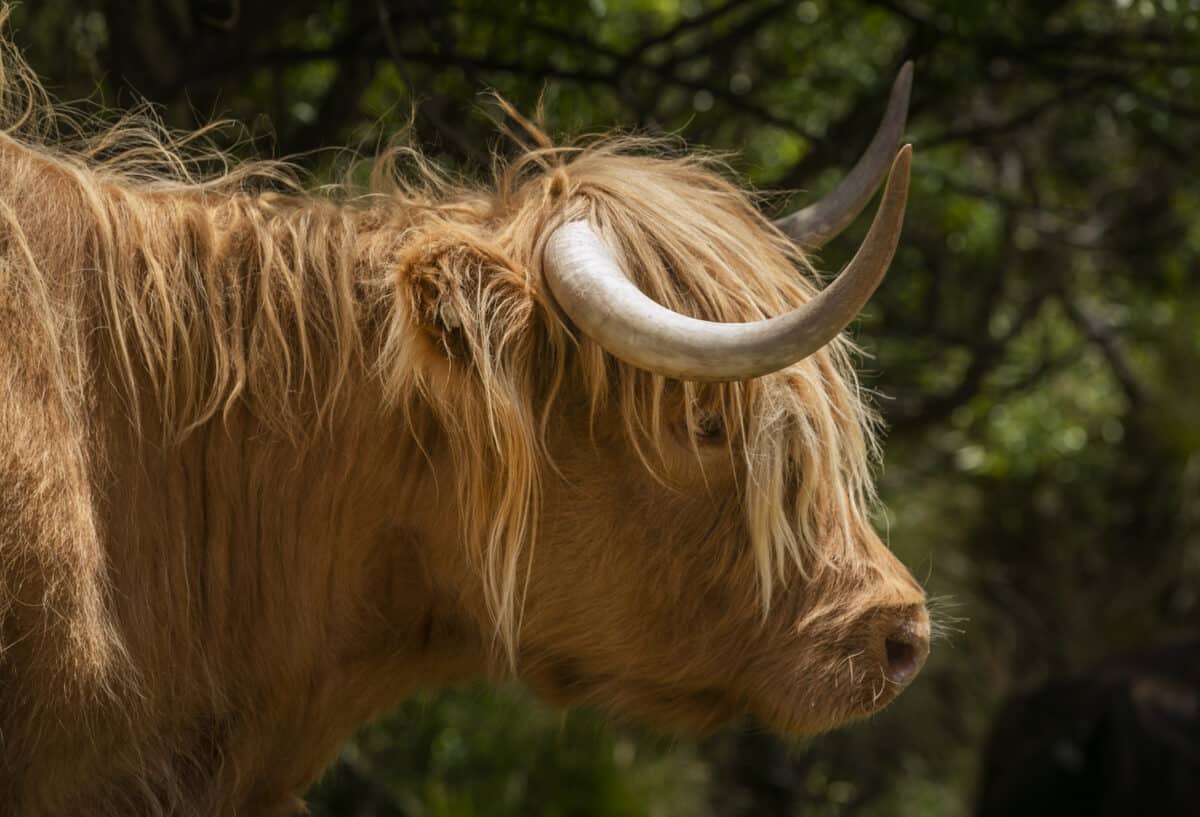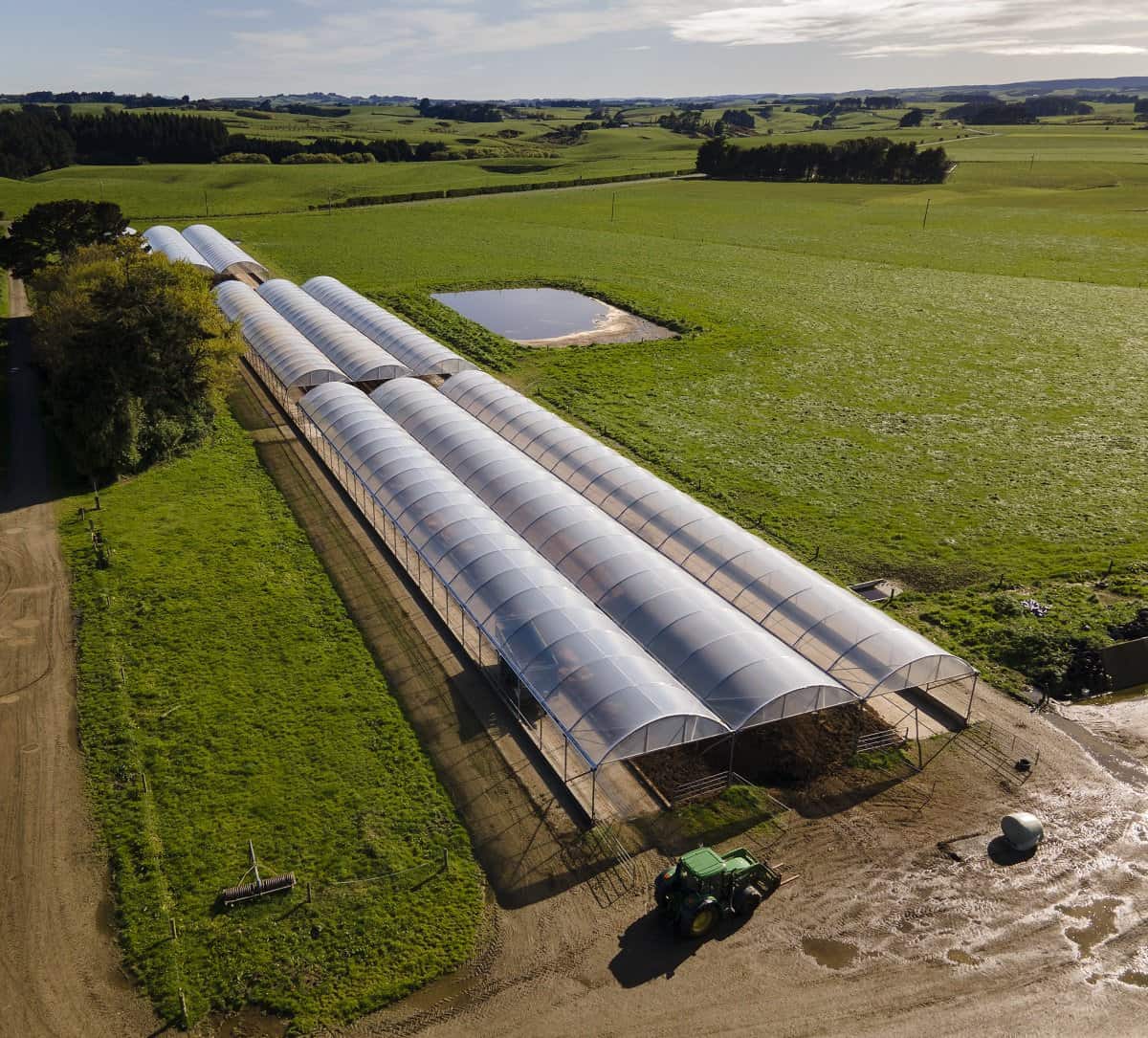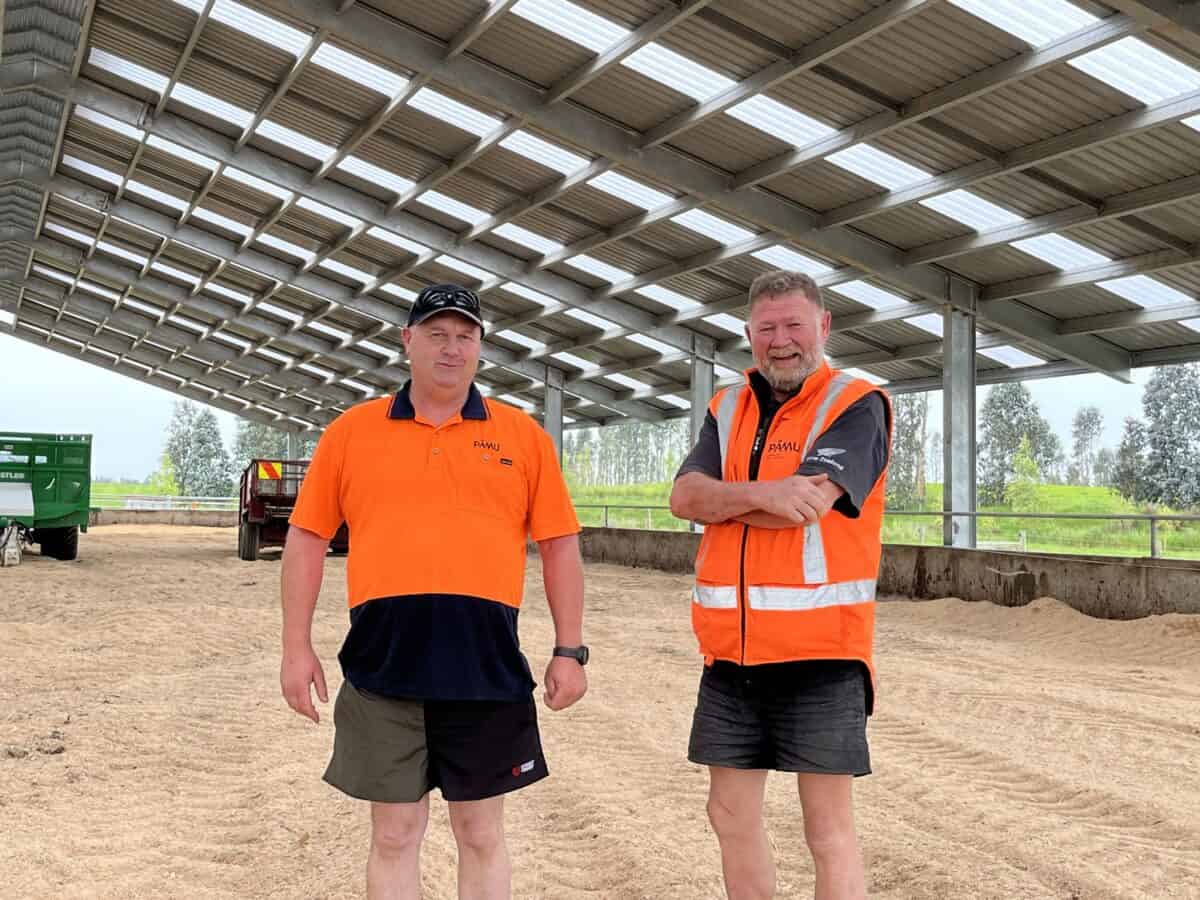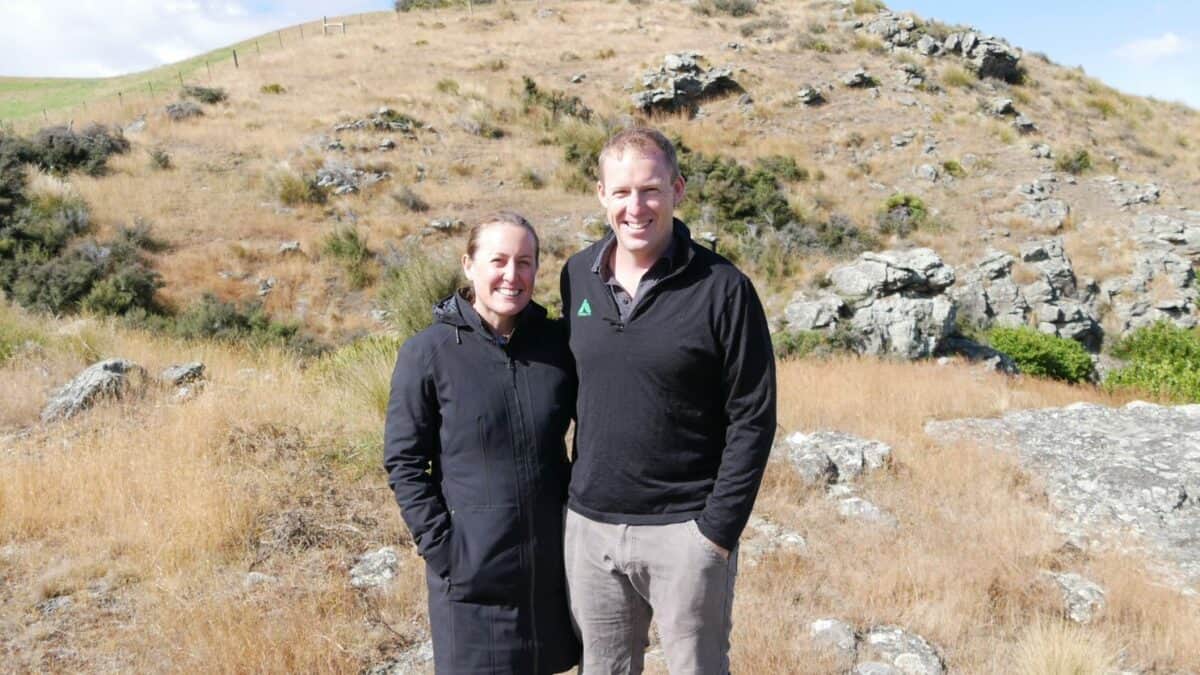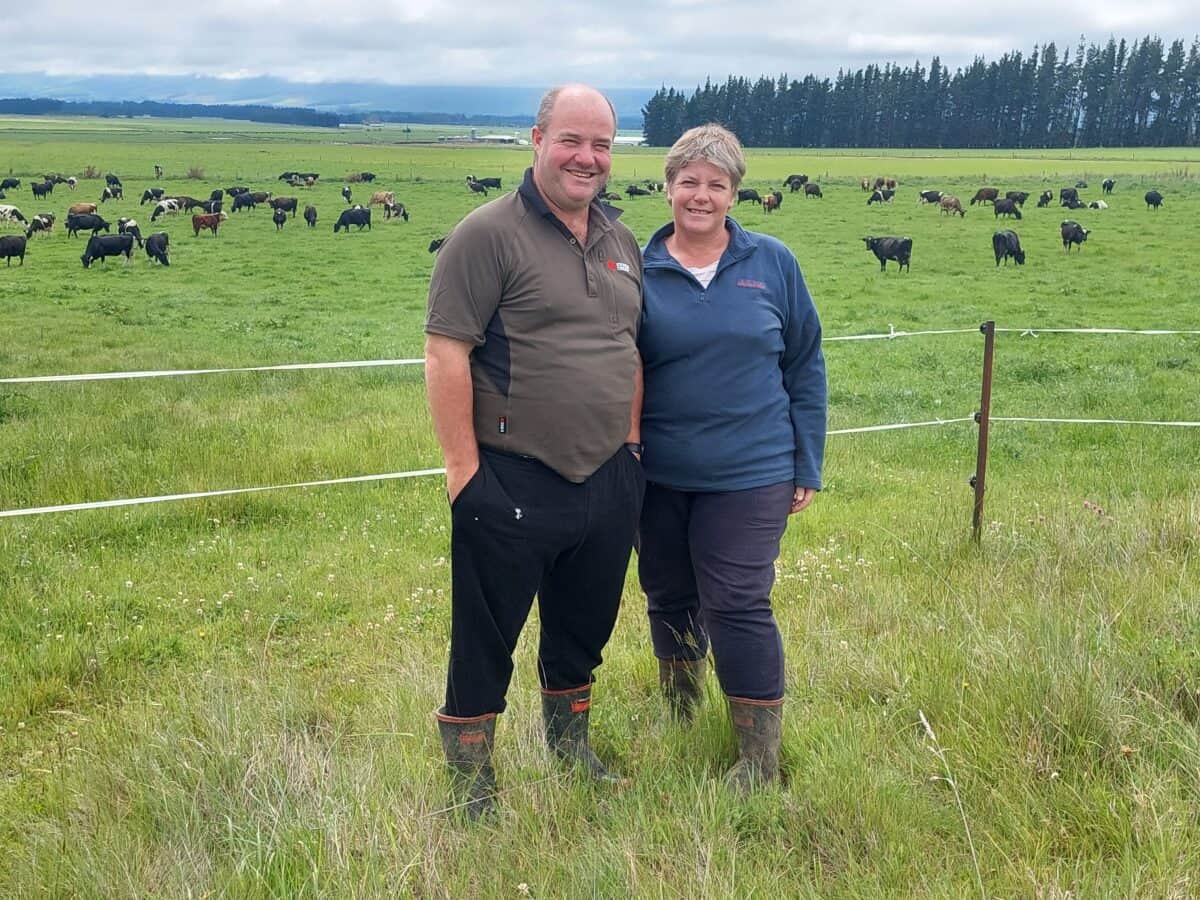Geoff and Jo Crawford
Crawford Farms – Dairy and Beef
The Crawfords have been dairy farming for 30 years, with Crawford Farms now encompassing three dairy farms and a 300ha beef unit that has been purchased over time.
Dairy is the main pillar of the business, with the remaining 25% of income derived from beef. The team milk a total of 1,500 cows, averaging 590,000kg of milk solids annually. Each year, the 700 calves born on the farm are sold as trade cattle, while 20% of the dairy herd is finished.
There’s a strong focus on good genetics and pasture management, growing a diverse range of forages, along with the active management of weeds and insect pests.
A holistic approach to environmental sustainability considers the entire farm system and the connections between each component.
Wetlands are in excellent condition, while an historic Māori pa is protected with a QEII National Trust covenant. The Crawfords employ an innovative soil moisture monitoring programme and a strong commitment to pest and predator control.
Kim & Graham Gilkison
Dancing Petrel – Viticulture
Kim and Graham Gilkison bought the boutique Mangonui business in 2018, which was struggling and needed significant remedial work. They spent the next three years heavily pruning and reorganising the plants, and putting in 6,500 new vines.
Dancing Petrel now produces quality wine and has significantly increased production in a sustainable way. Overall production has increased per vine and, in 2019, their Cabernet Franc grape harvest doubled to about 8 tonne. Full benefits of their work will be seen over the next three years as the new vines move into full production.
They use sustainable growing methods, spray-use, soil and leaf analysis. There’s a strong focus on soil health, including soil testing to guide fertiliser application, and digging mulched clippings back into the soil. Recycling is a priority, and biodiversity is enhanced by caring for a wetland and planting native species.
Geoff Mansell
Kotare Farm – Horticulture
Primarily a fig and feijoa orchard, Kotare Farm has more recently started growing bananas and a covered sub-tropical fruit nursery has been built – growing papaya, pineapple and Honduran-type bananas. The nursery is a trial to explore the viability and productivity of the covered plants.
With about 60% of his income derived from 900 feijoa plants. Geoff gets about one-third of his income from the 100 banana plants, with the balance coming from figs and selling plants.
Good management practices and efficient irrigation are minimising the business’s impact on freshwater, while the team closely monitors soil quality. There is an active focus on reducing waste and recycling, including chipping and mulching prunings, plus all plants are referenced to authenticated varieties.
Geoff’s business model is designed to capitalise on climate change, with the investment in sub-tropical fruit and the transfer of knowledge setting him up well for the future.
Julian McPike and Trevor Smyth
Oneriri Station – Sheep and Beef
Oneriri Station has been in Julian’s family since 2009, and features extensive areas of native plants including impressive stands of historic kauri.
The business is driven by a successful winter lamb trade. In 2020, about 20,500 sheep and lambs brought in 60% of the farm’s income between a mix of breeding and lamb finishing. The balance was derived from the breeding and finishing of 1,260 cattle.
Almost all of the 47km coastline has been fenced, along with all waterways and large areas of established native bush. Mānuka, pittosporum and flax are some of the species that have been planted extensively across the property.
Oneriri Station features 40ha of pine and about 800 ha of native trees which are sequestering carbon. There’s an active focus on reducing pests and weeds. Paddocks have been subdivided, grazing is carefully controlled and there’s a strong focus on protecting the quality of freshwater. Stock grazing is tailored to soil type and nitrogen is strategically used to drive pasture production.
Stuart Paterson & Melisa Jones
Tymana Farm – Dairy
Tymana Farm was a gorse-covered beef farm when Stuart Paterson and Melisa Jones purchased it in 2013, and they have since converted it into a profitable dairy business.
They are about three-quarters of the way through Tymana’s development and have put significant time and effort into the property’s conversion from beef dry stock. Across 135ha of the 168ha farm, they milk between 220 and 250 mixed breed dairy cows, with cashflow boosted by a small quarry and calf-rearing business.
Tymana’s significant development has included realigning paddocks from a vertical to horizontal aspect that suits the land’s topography. This has reduced the impact of winter grazing and led to cleaner streams and increased pasture fertility.
Additional dams have been built across the property and a significant number of native trees will be planted around the dams.
A native planting programme has been started to further enhance the property’s beauty and help protect waterways. This is complemented by active pest control.
Enter the Ballance Farm Environment Awards
